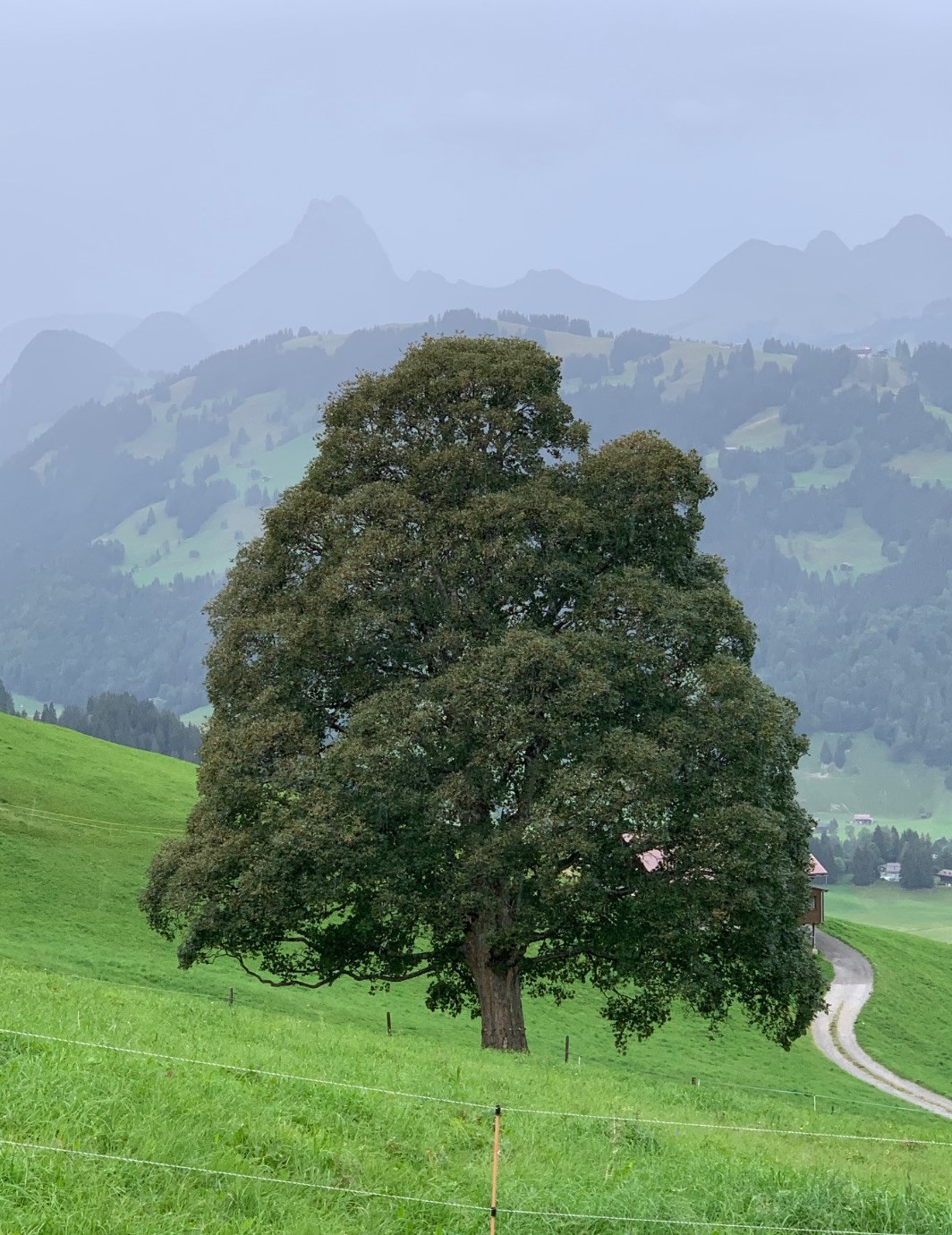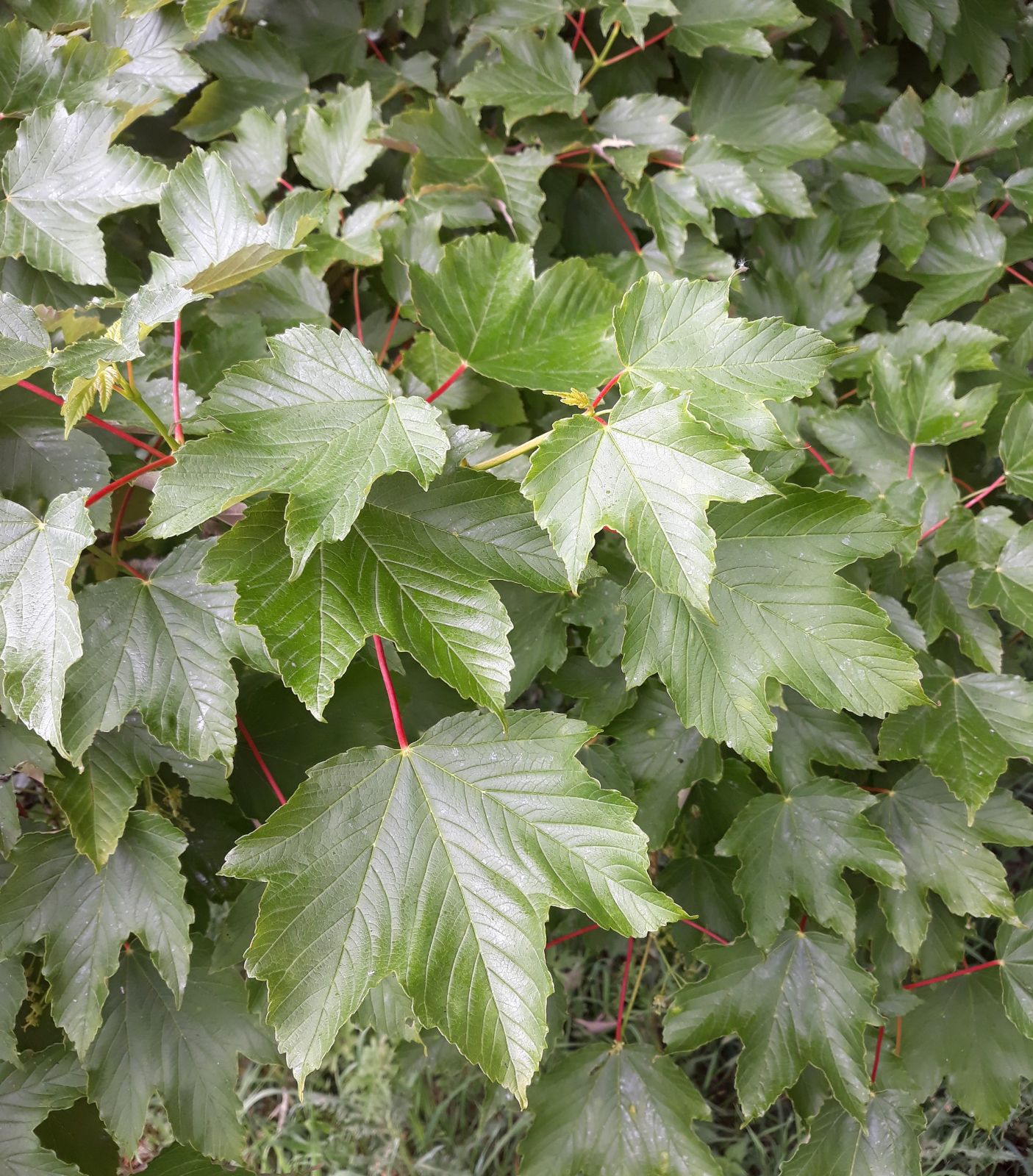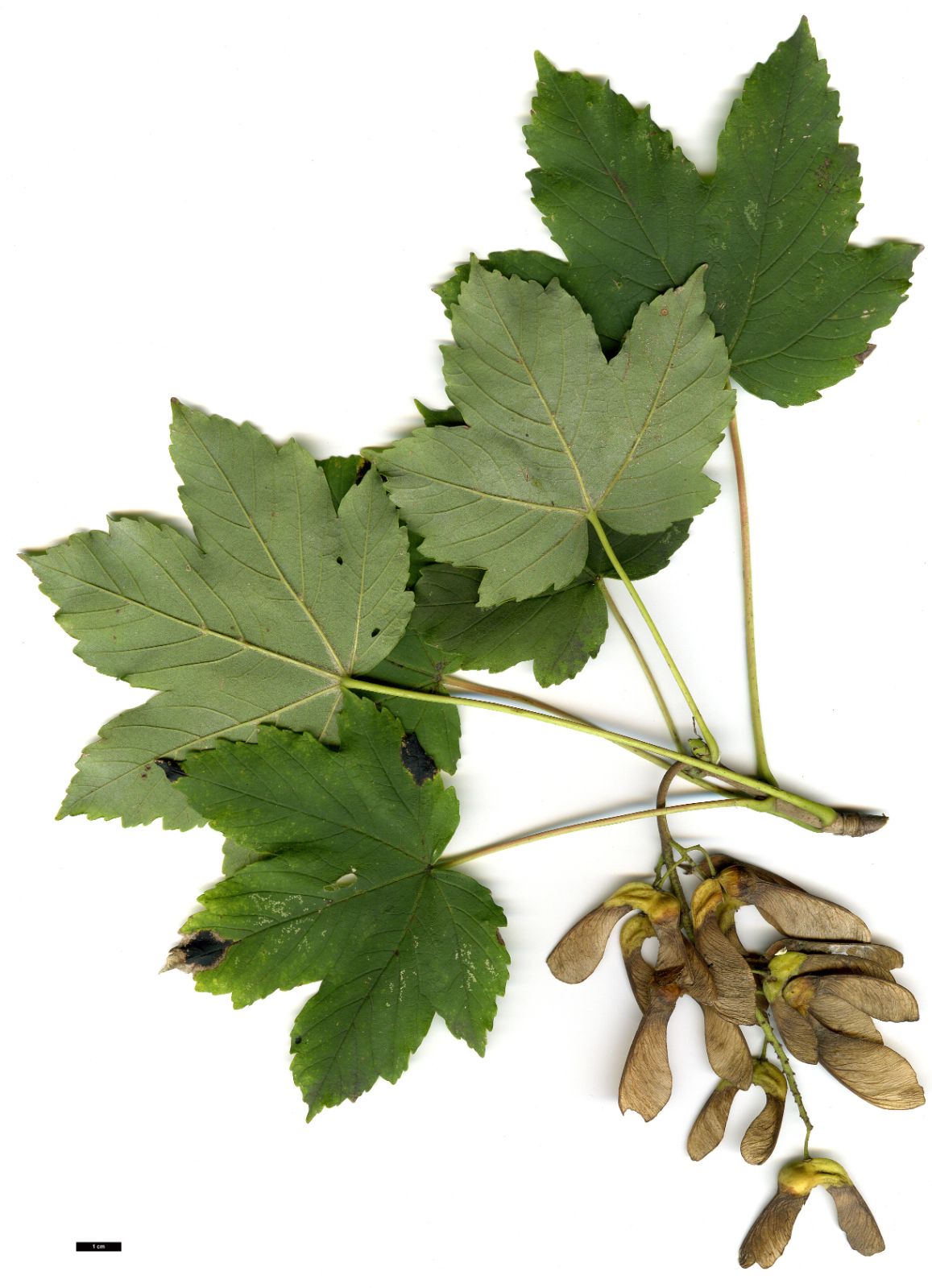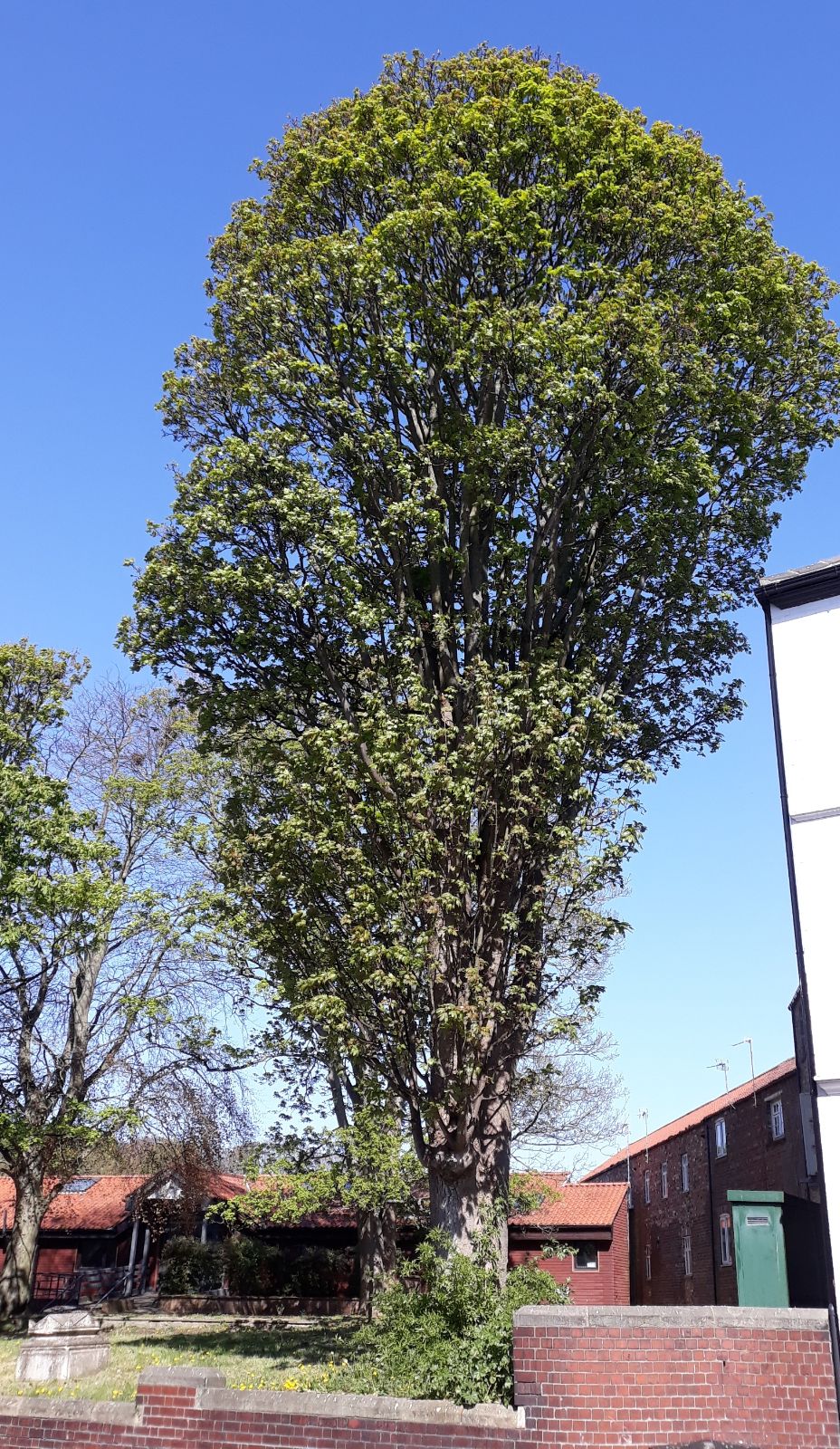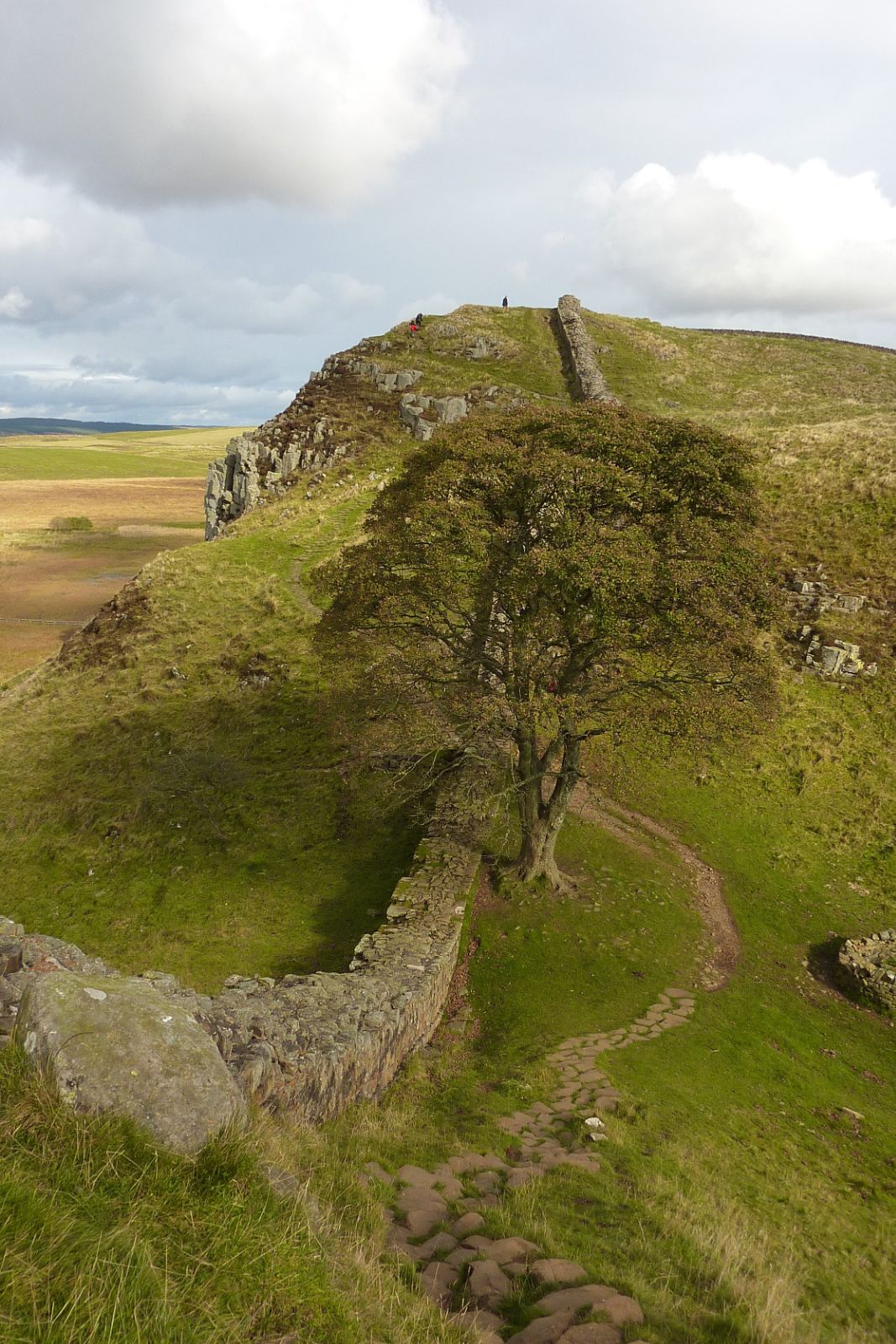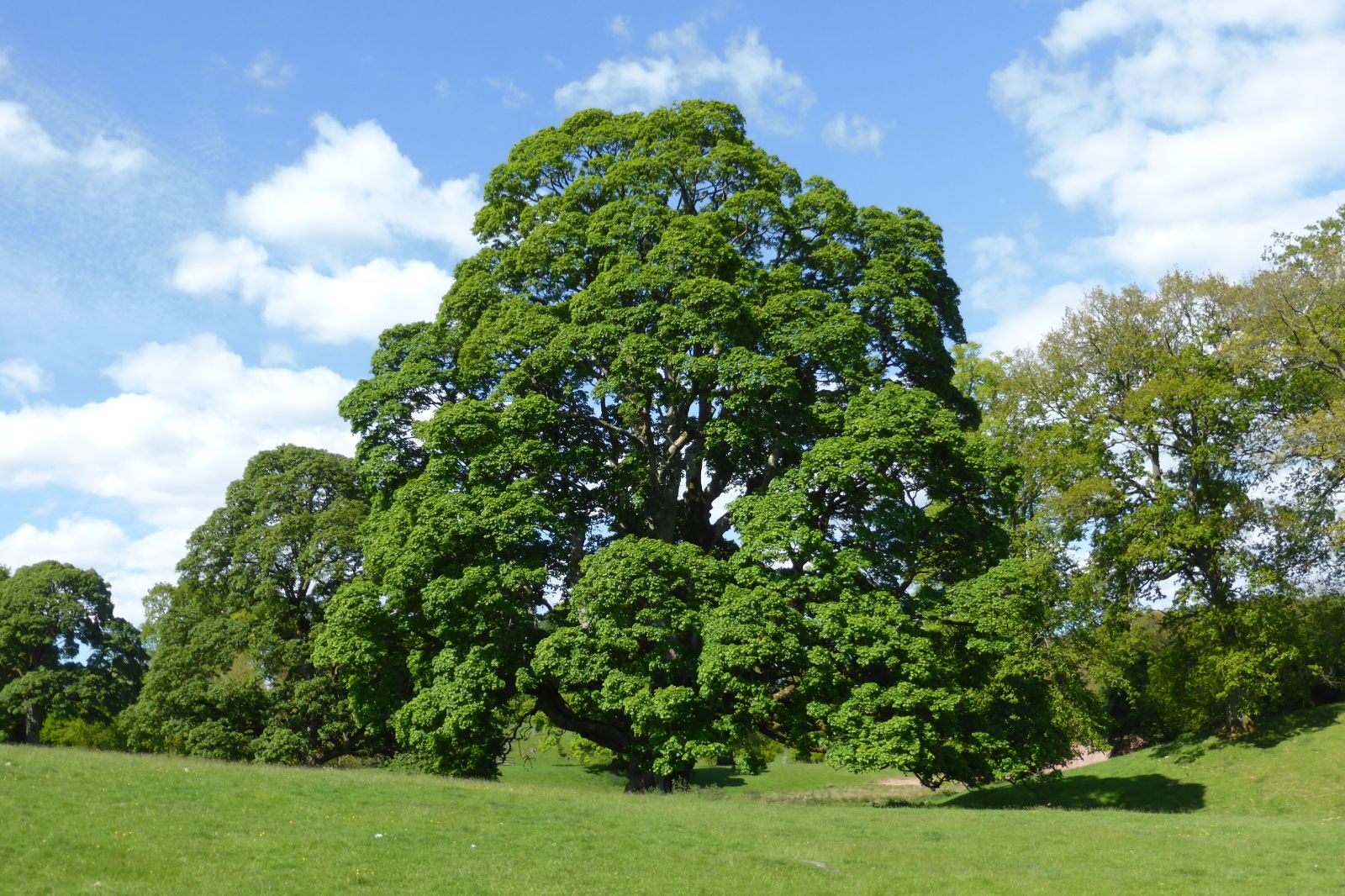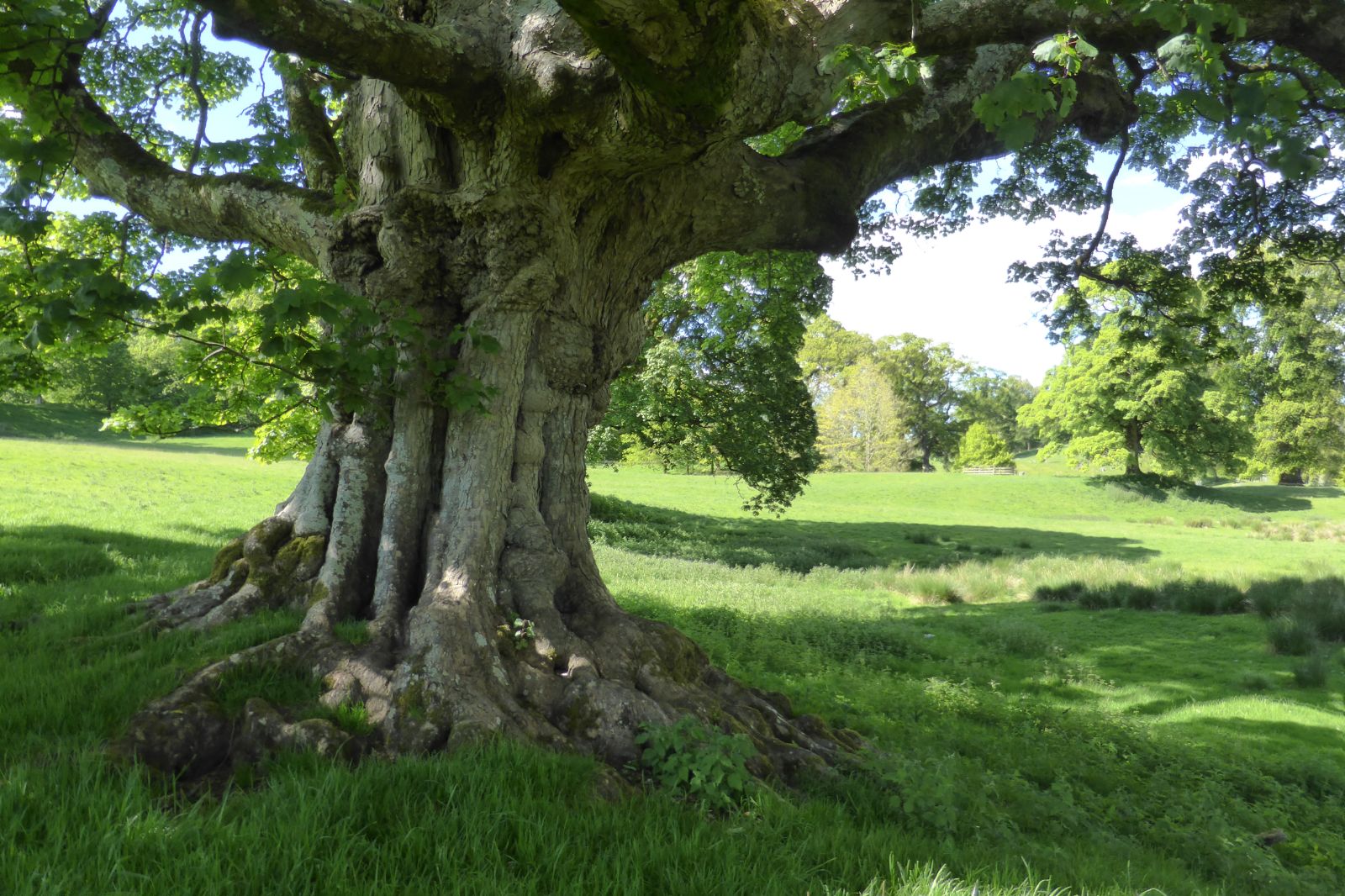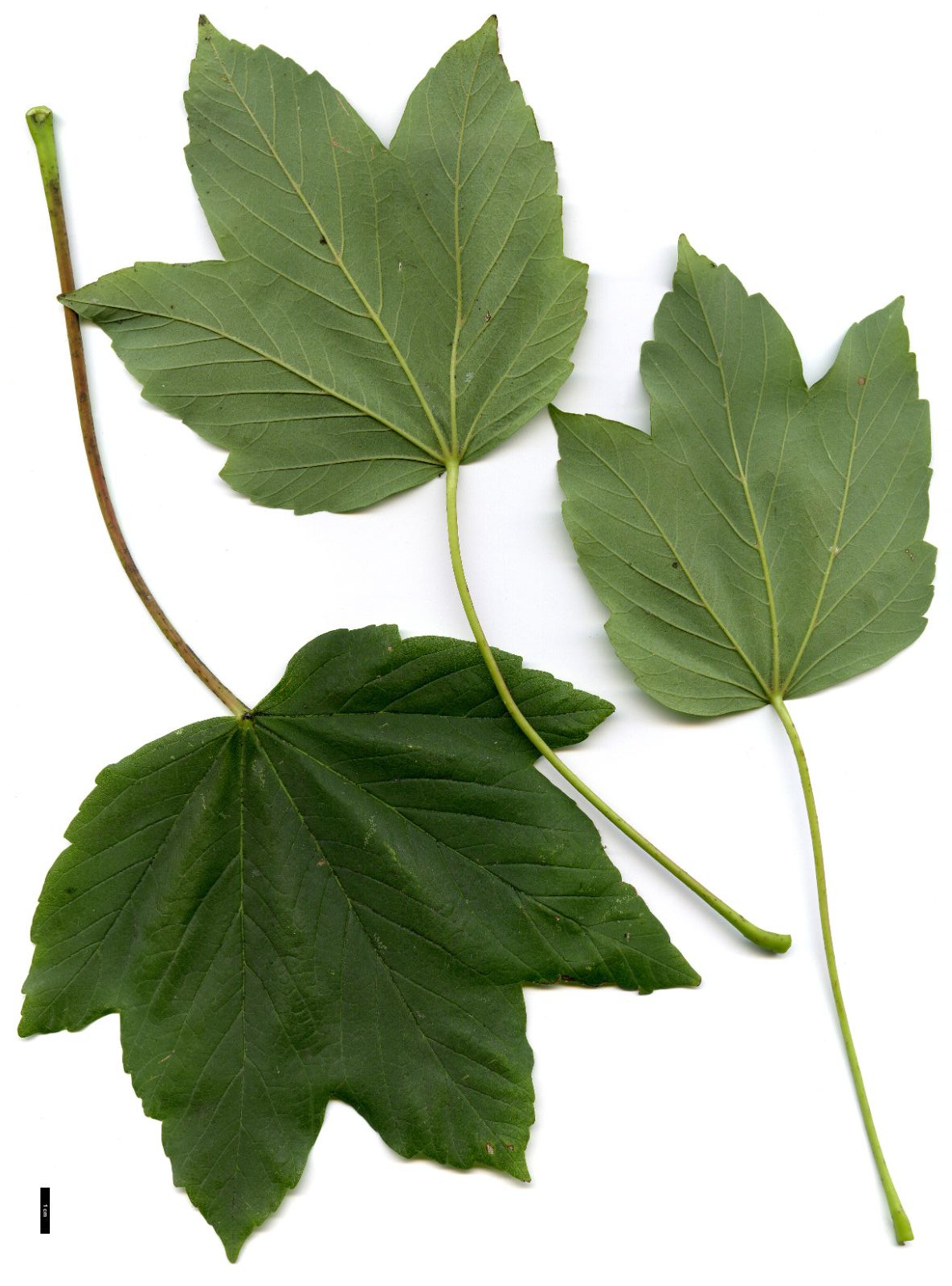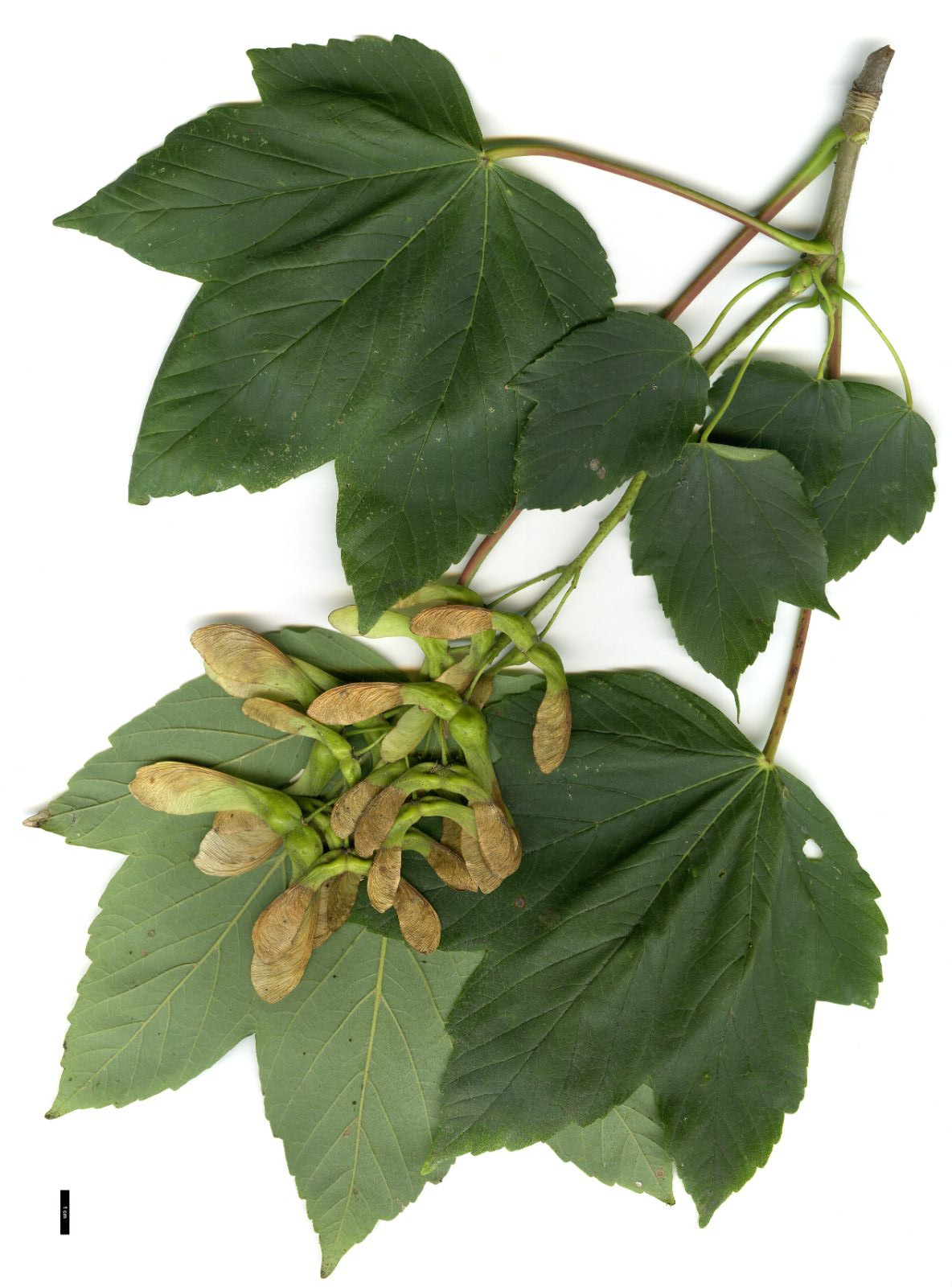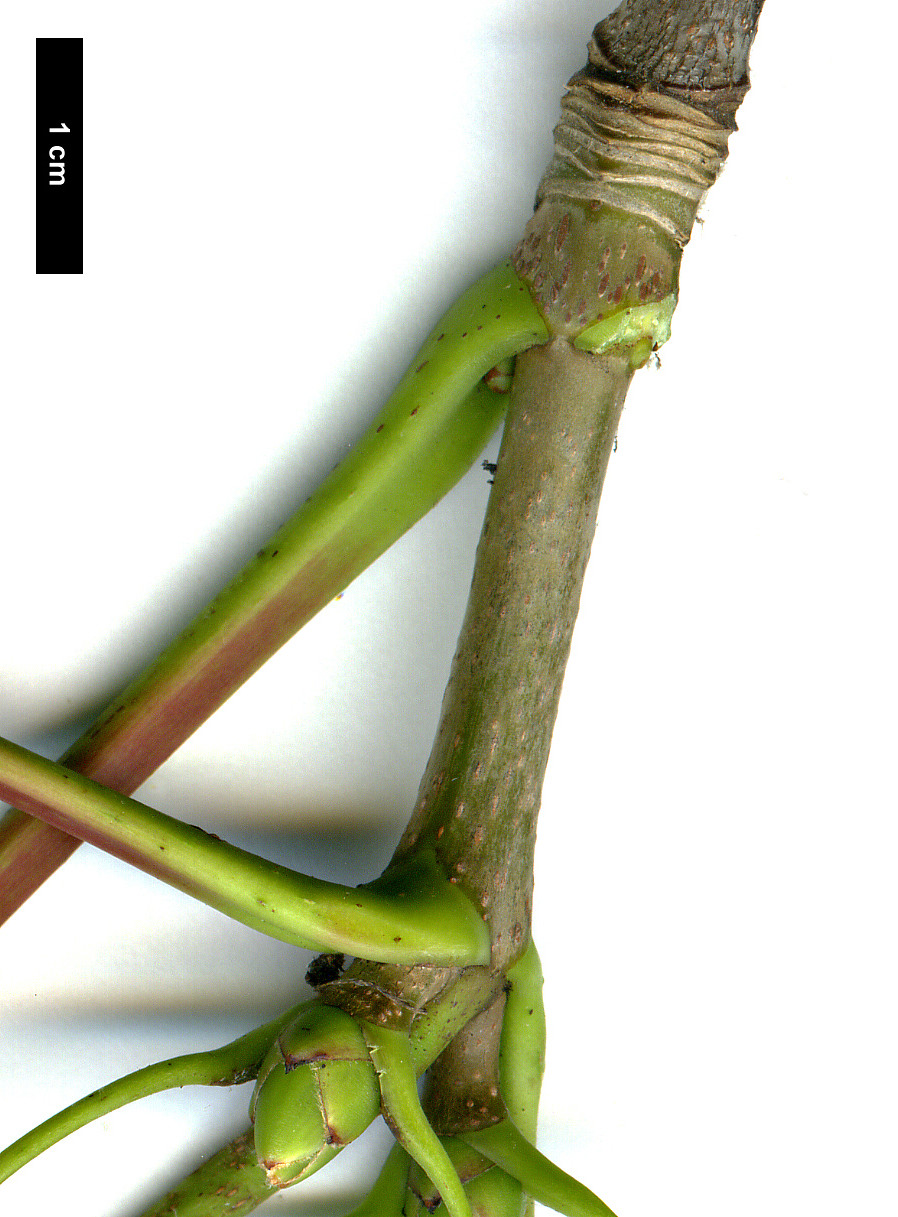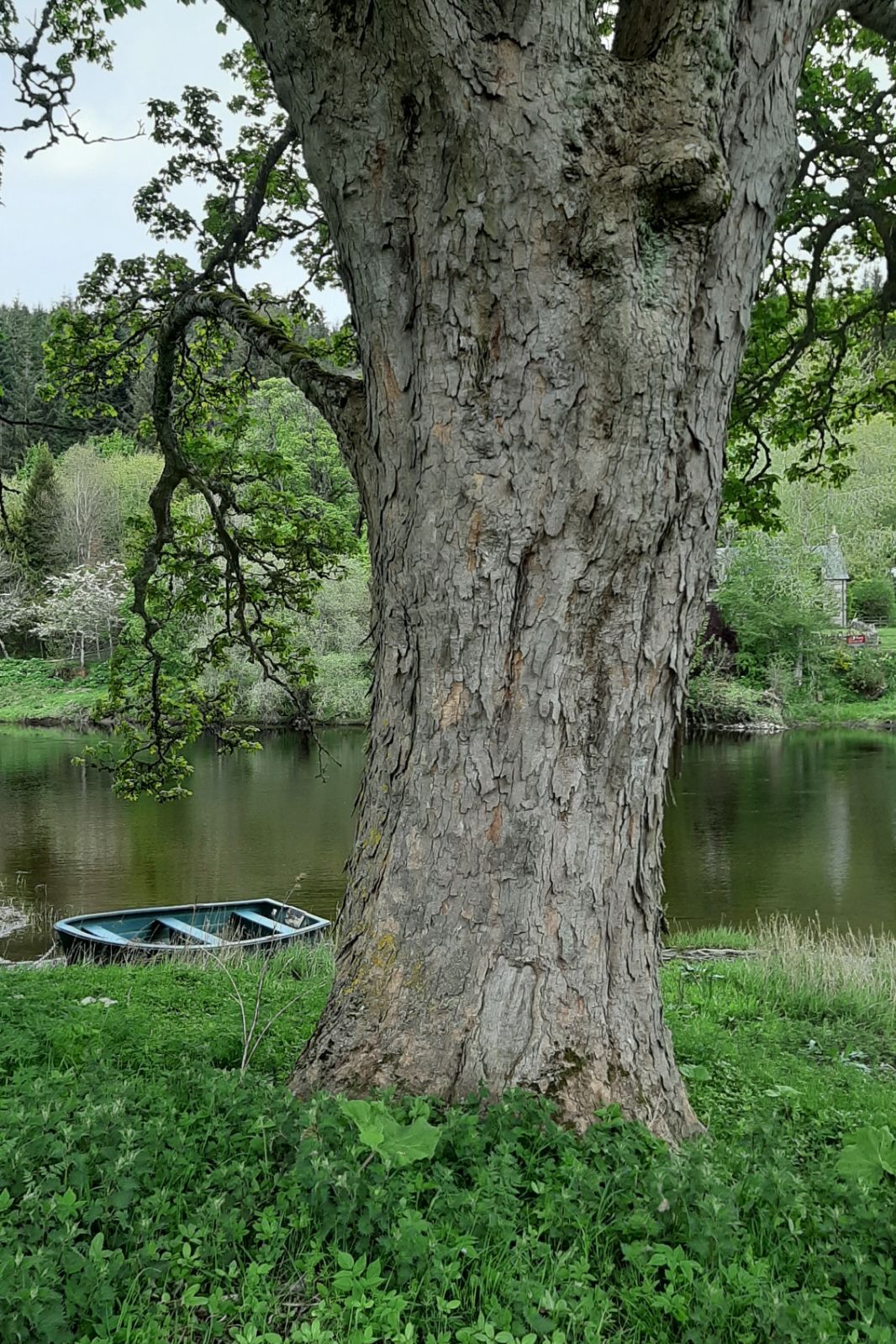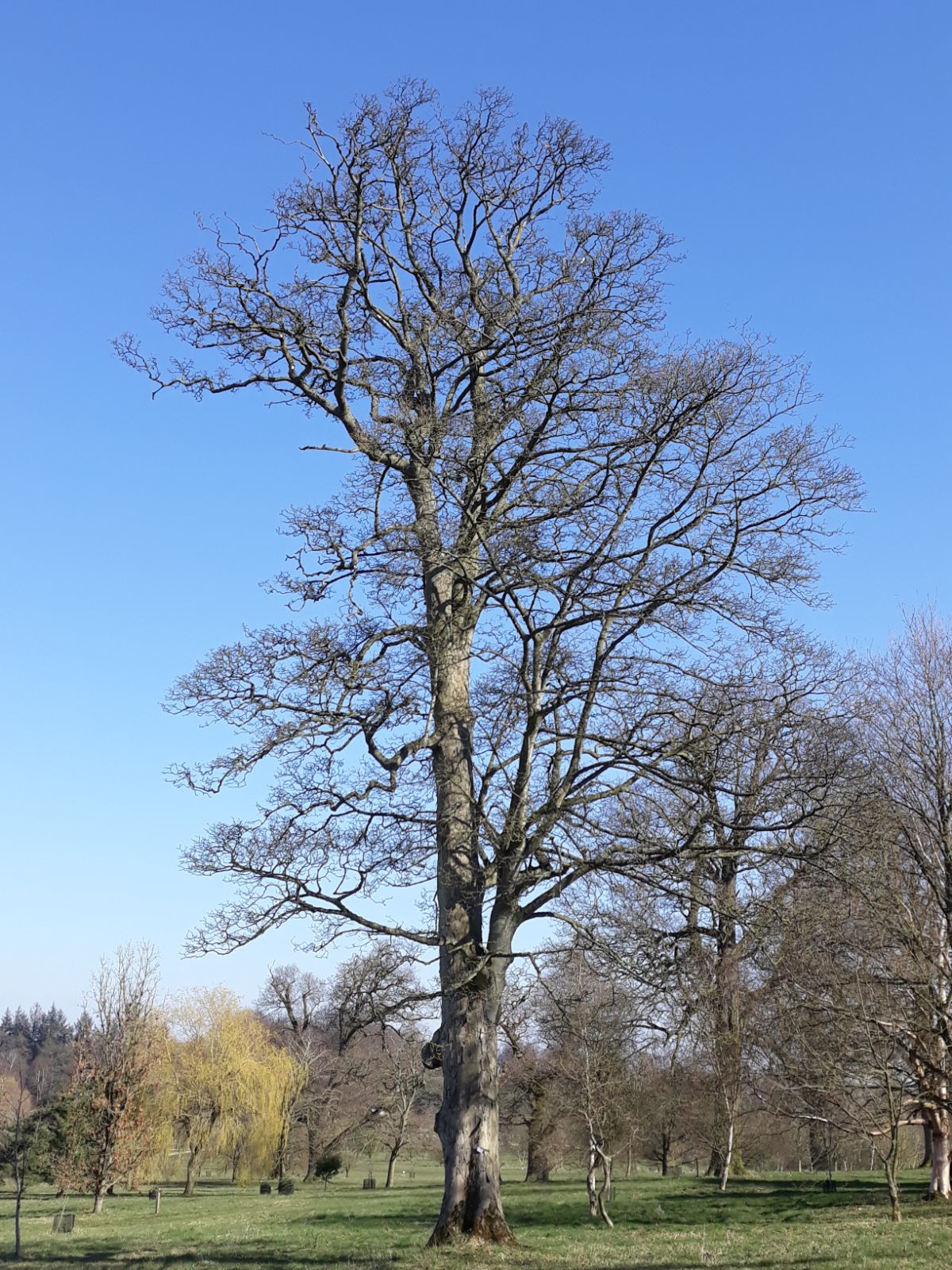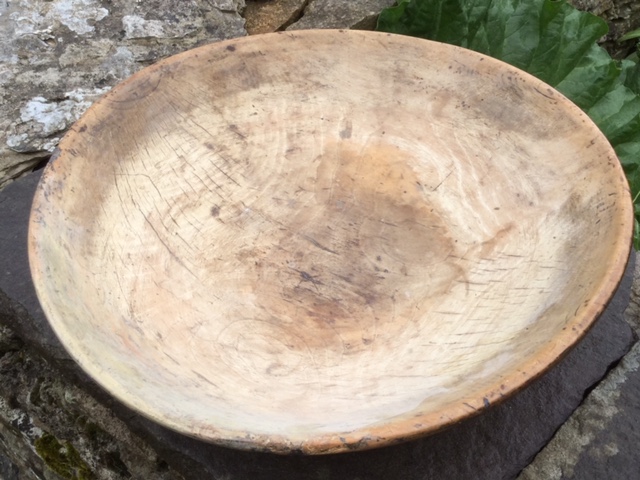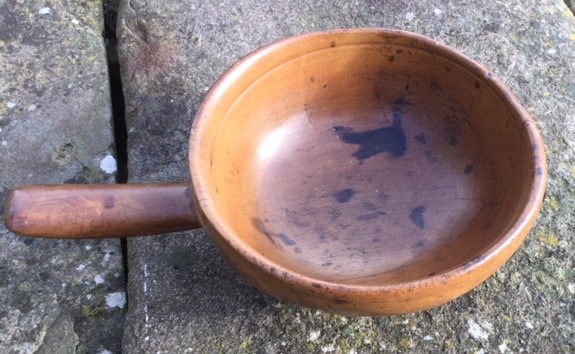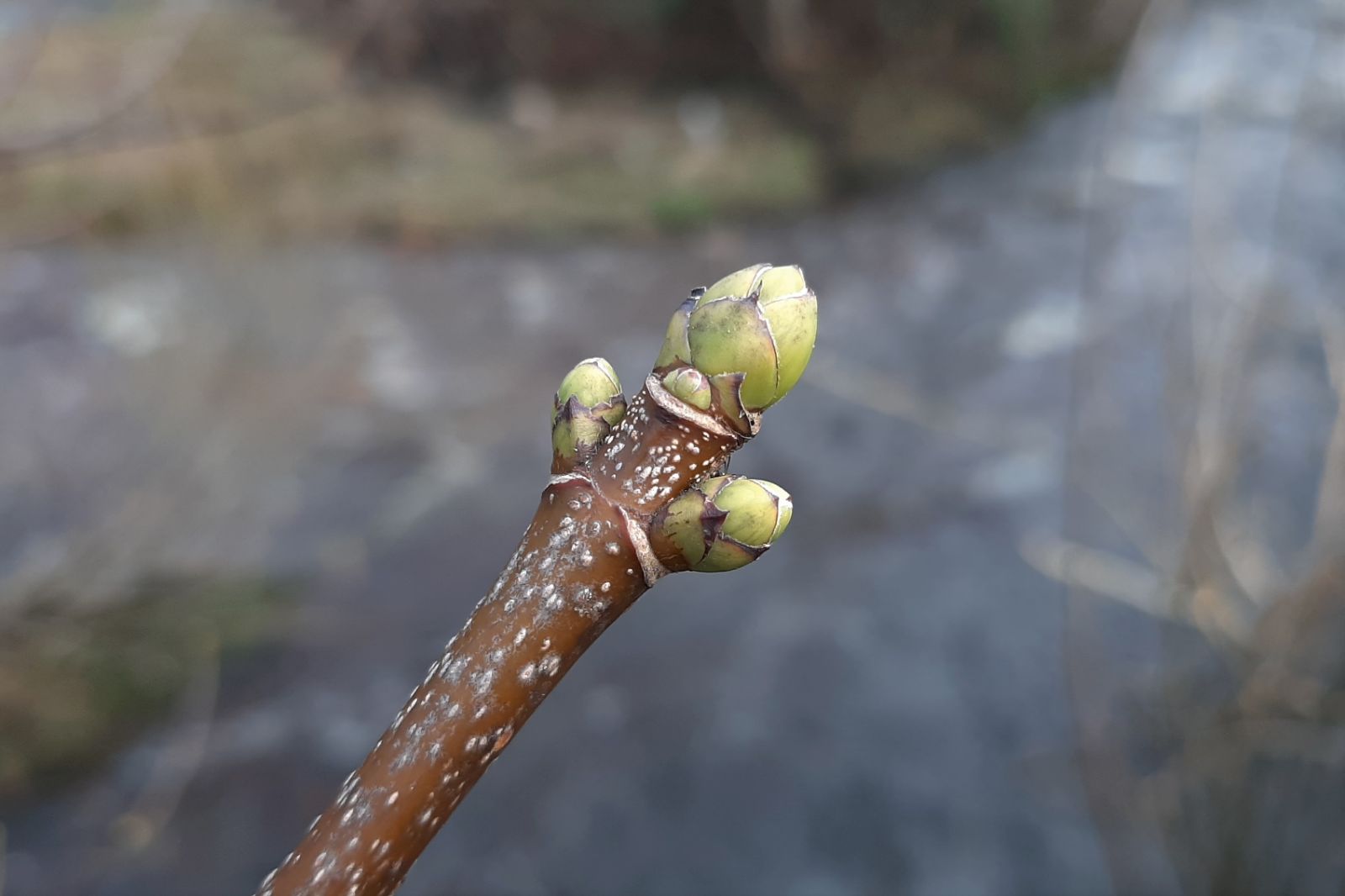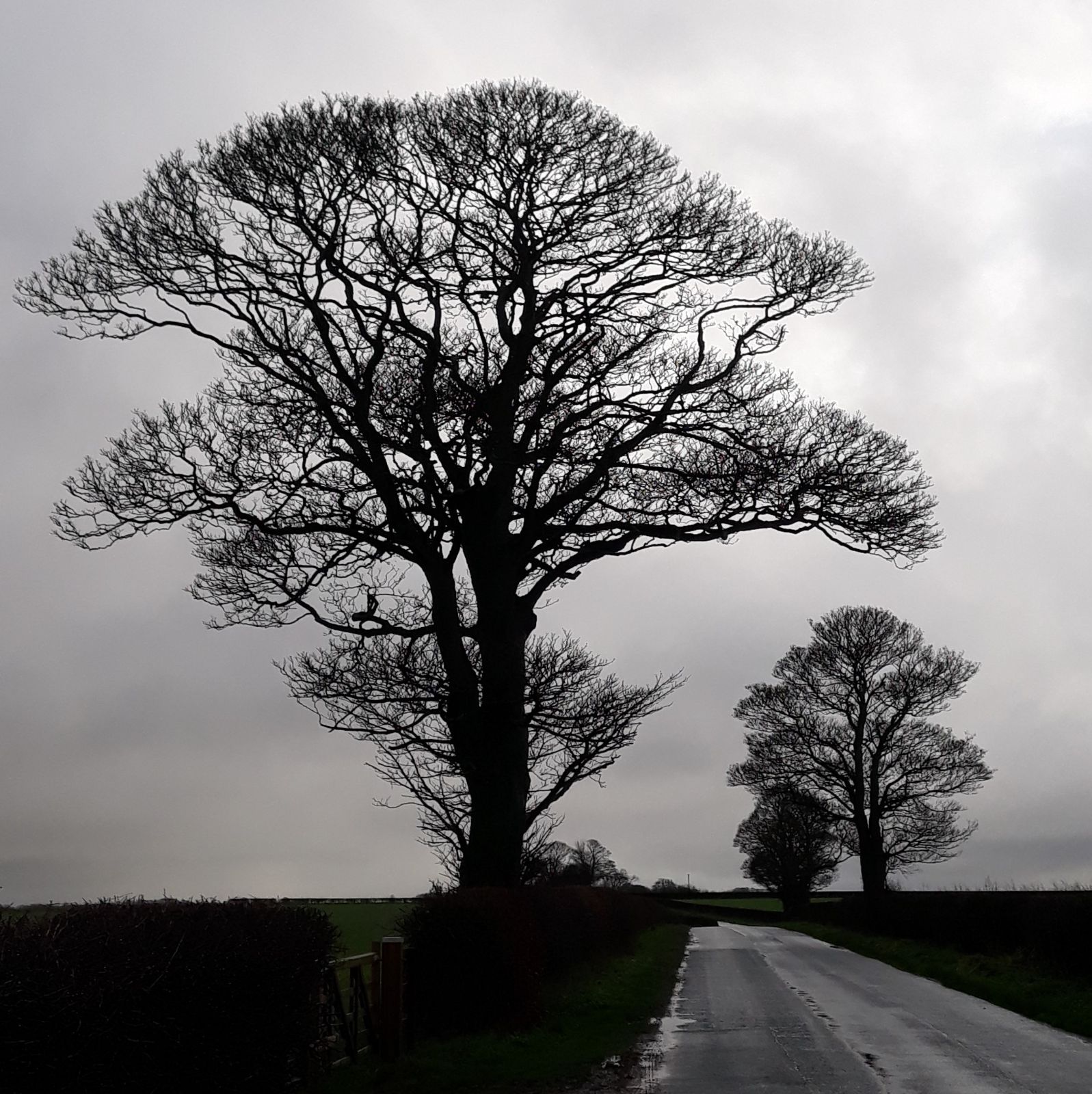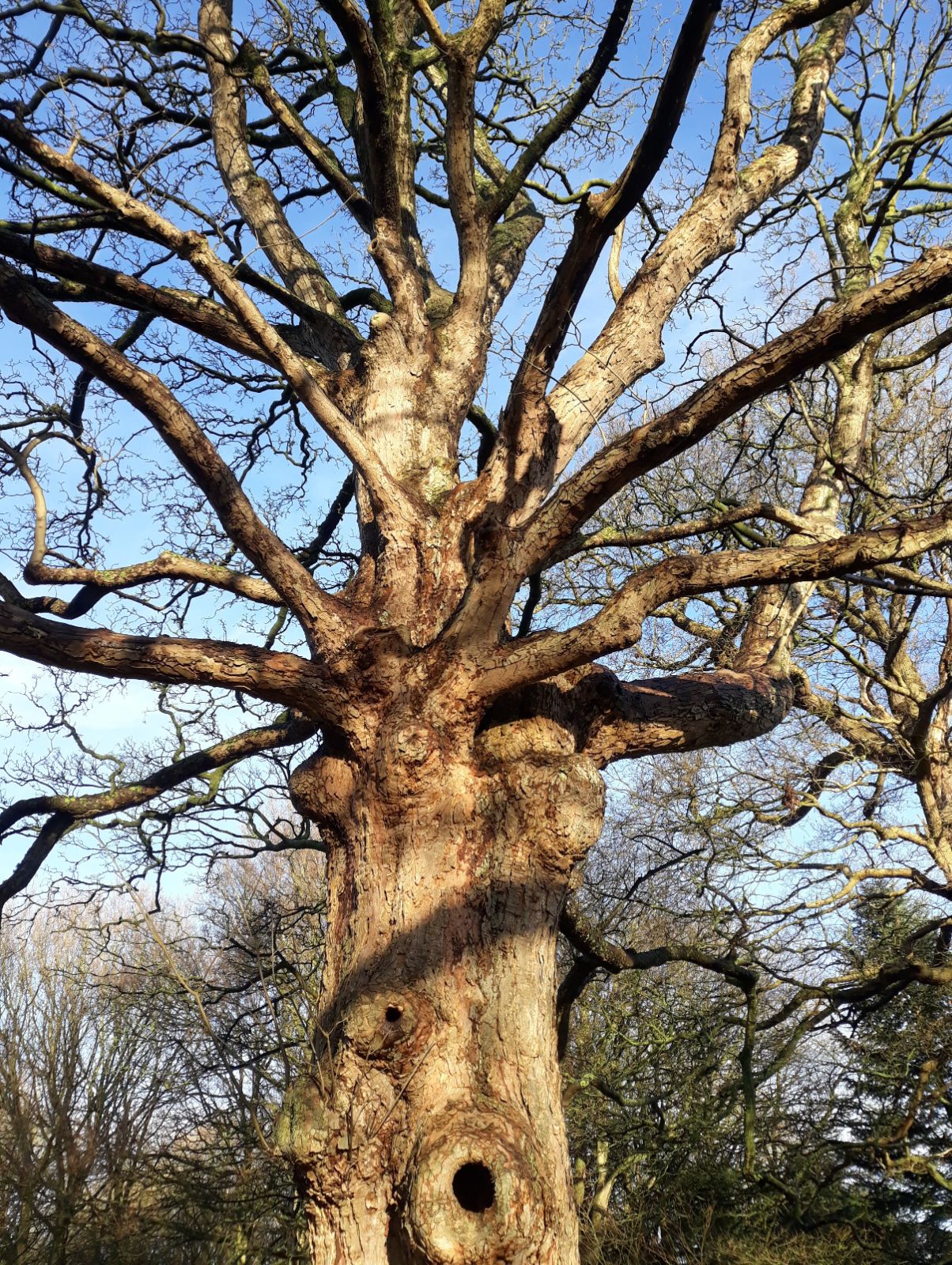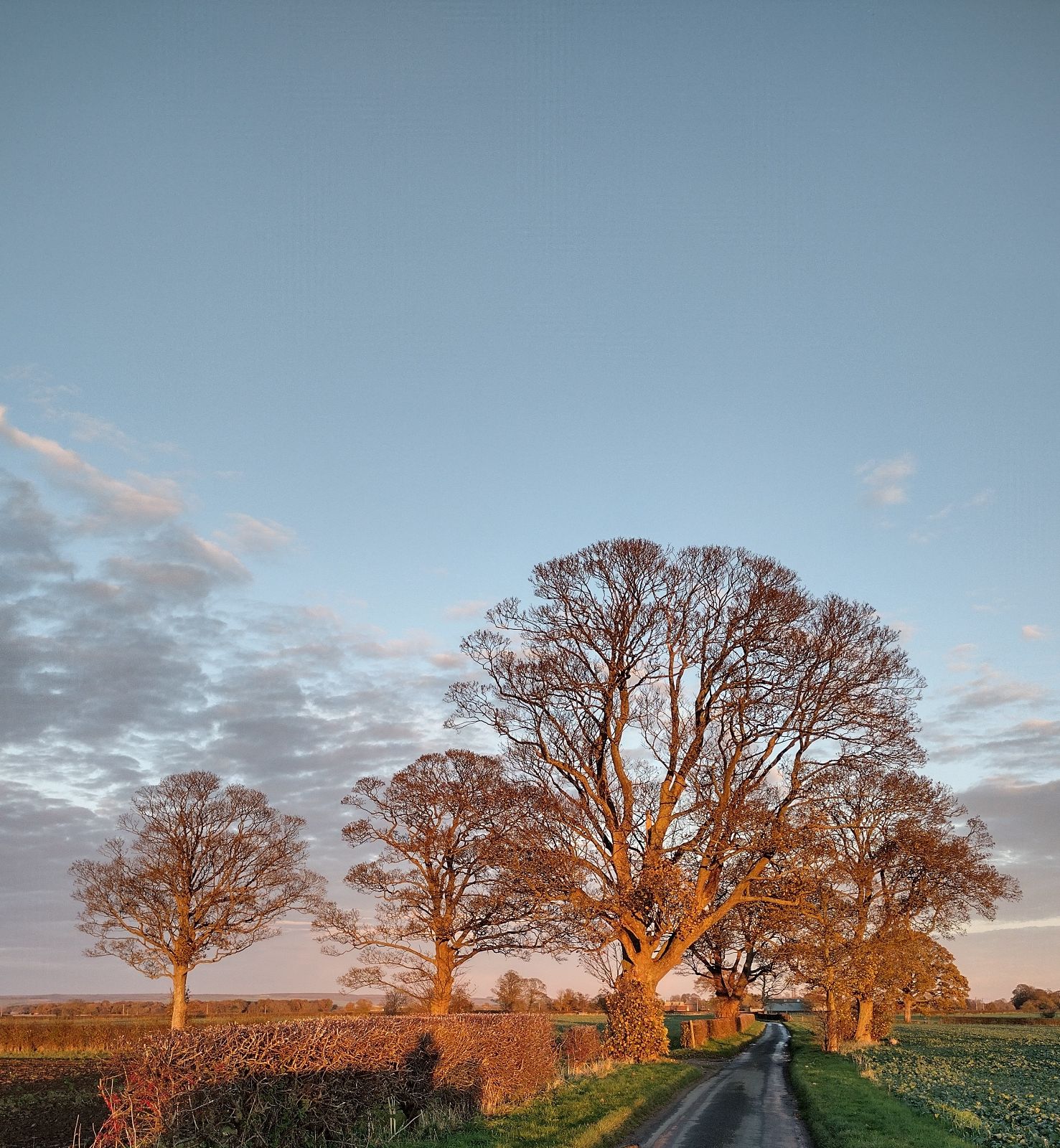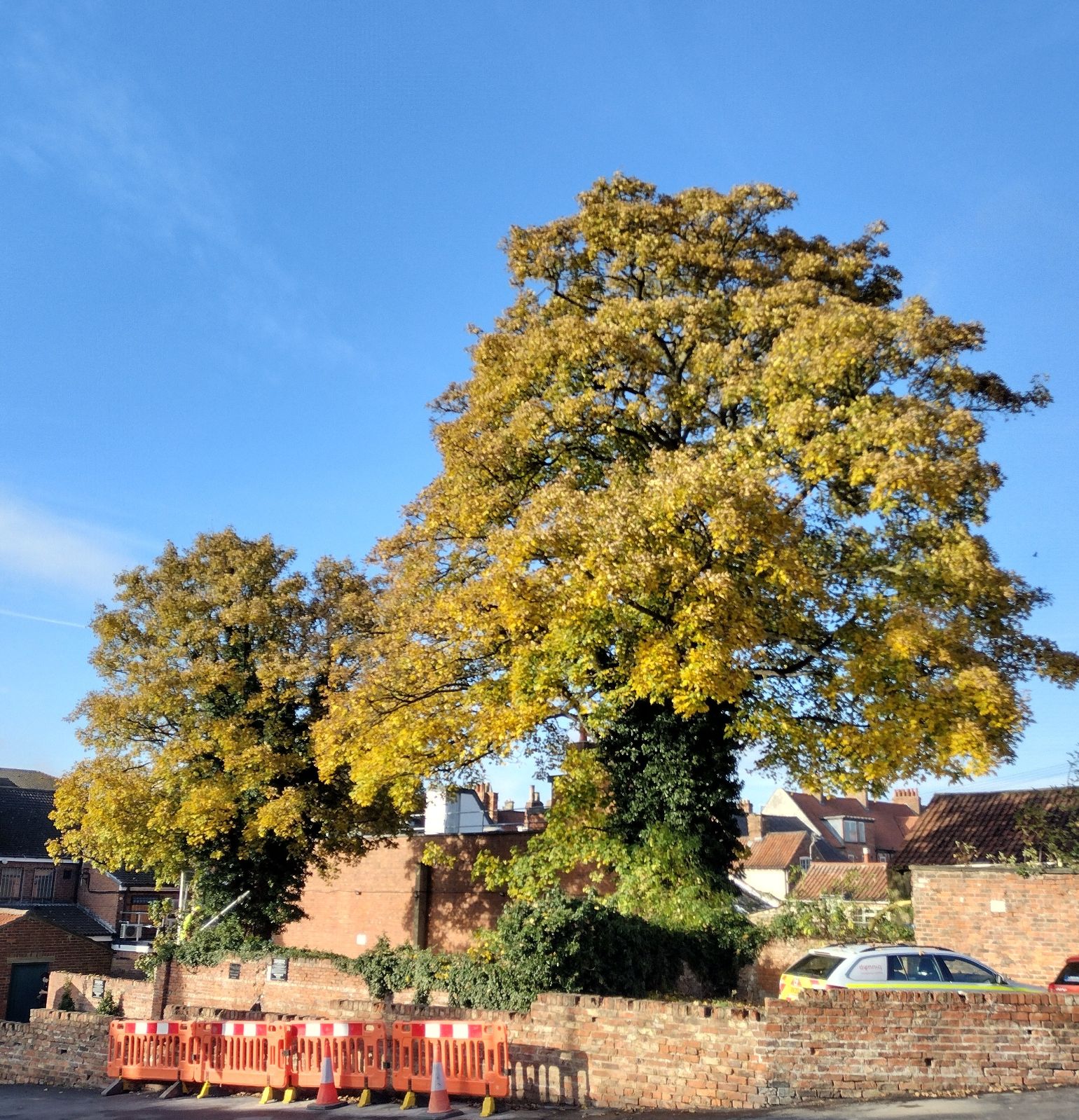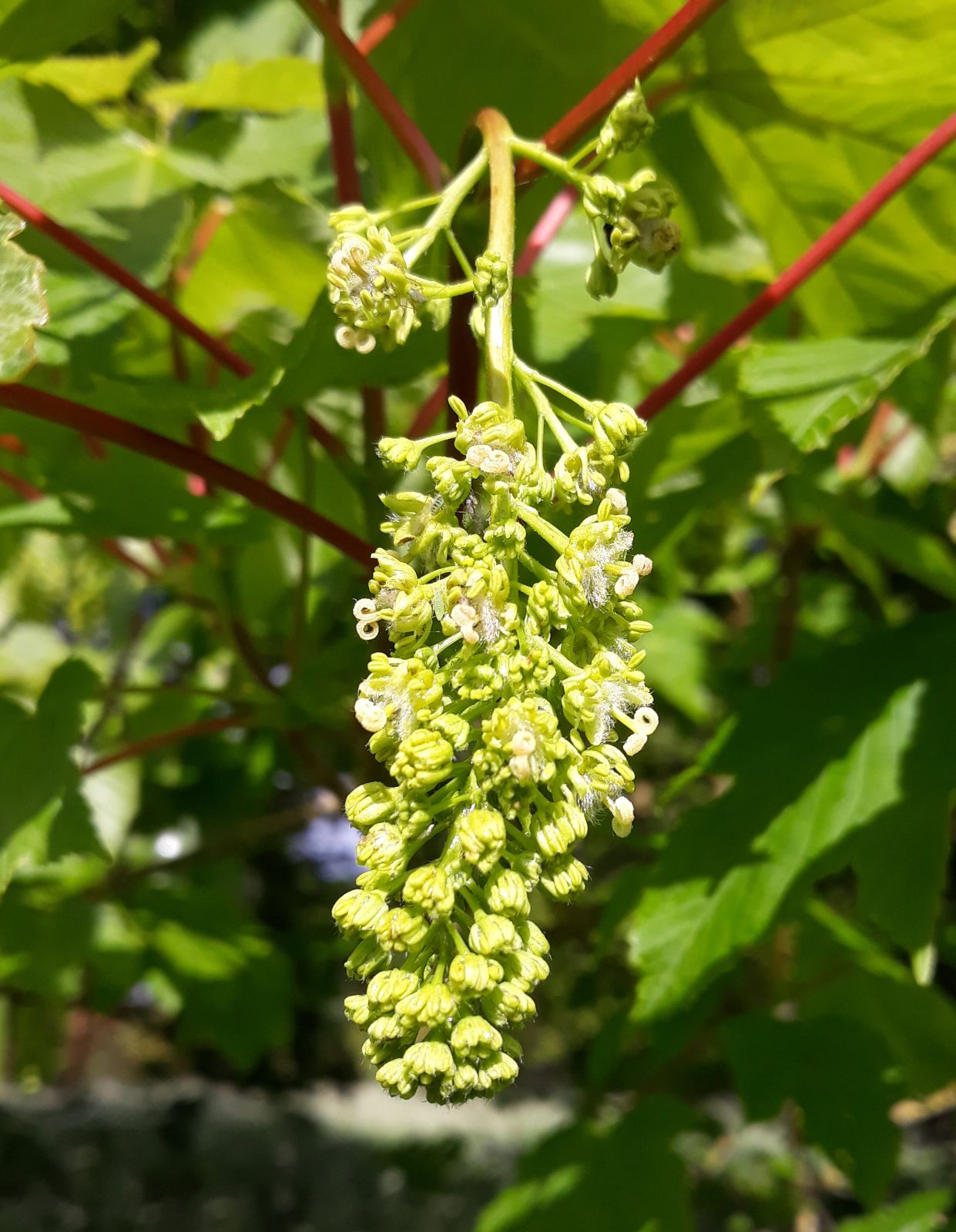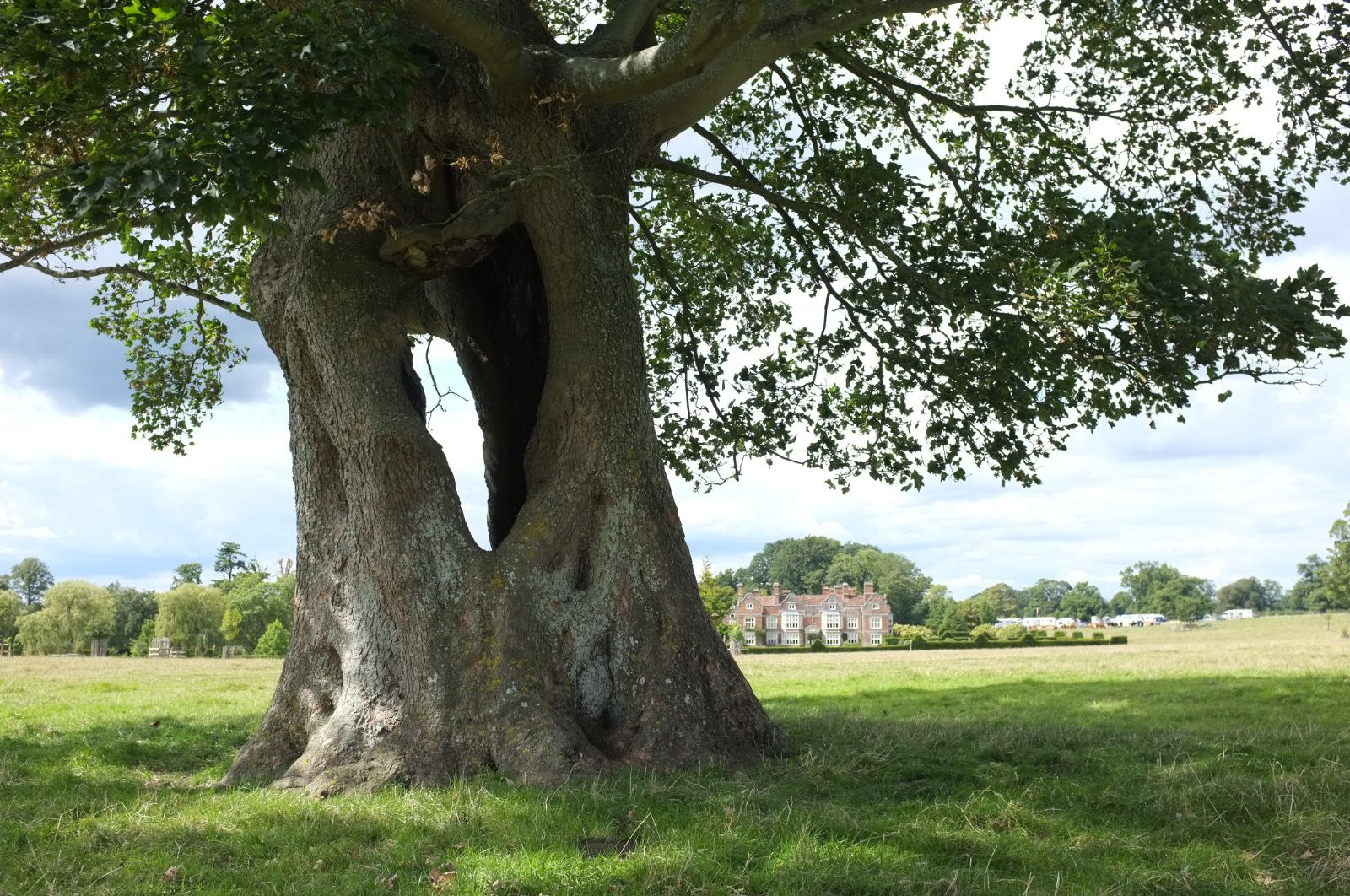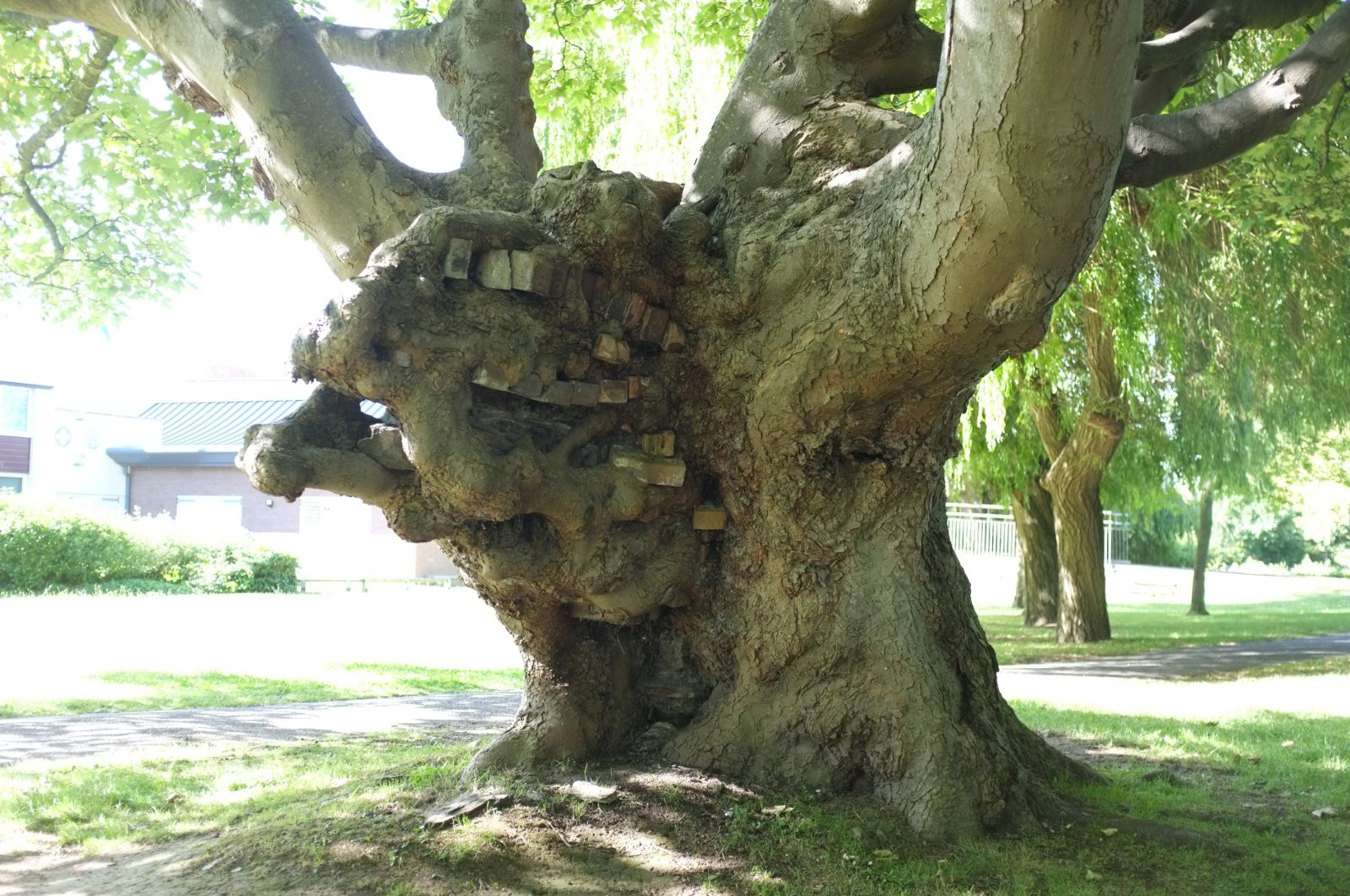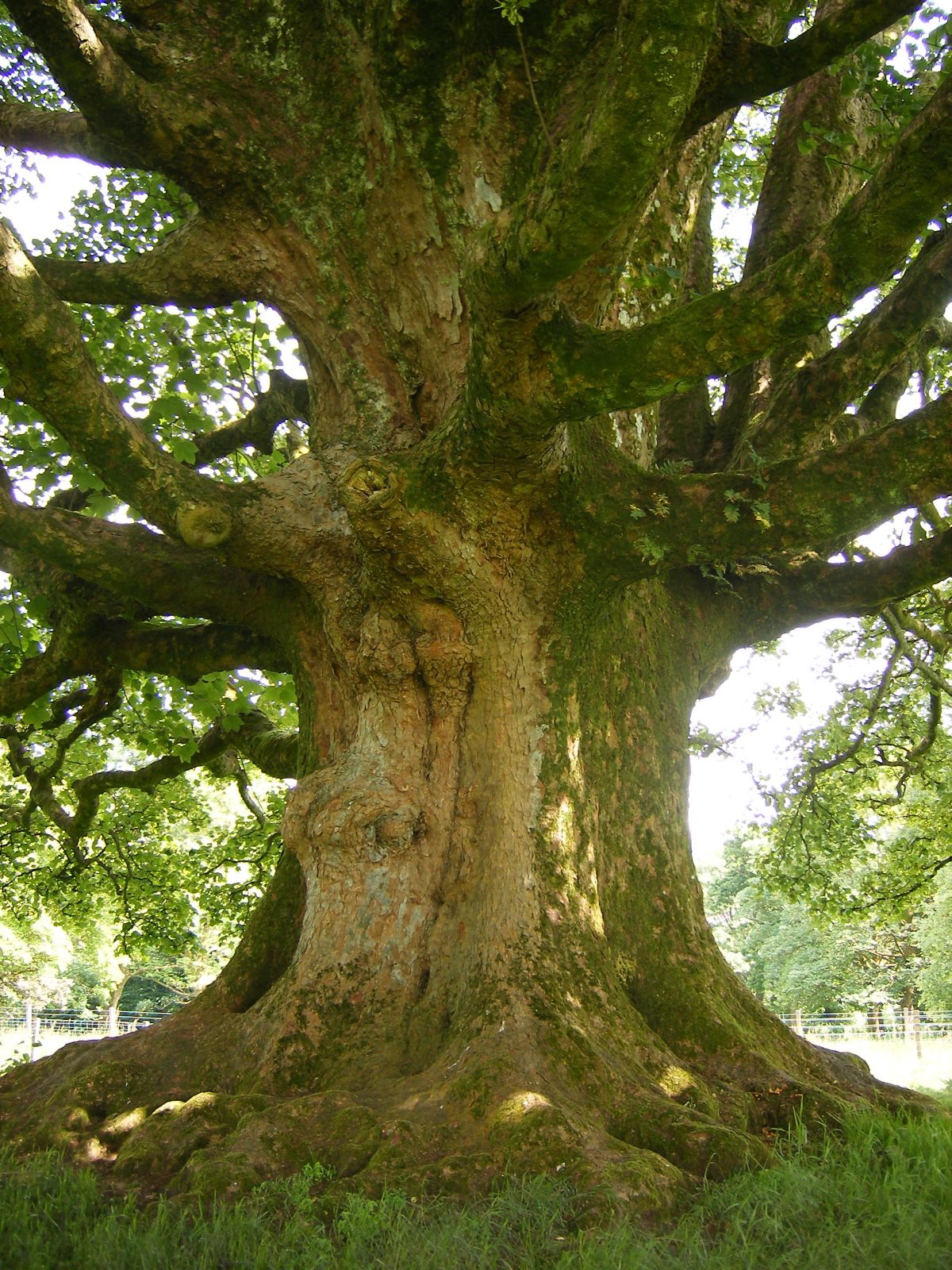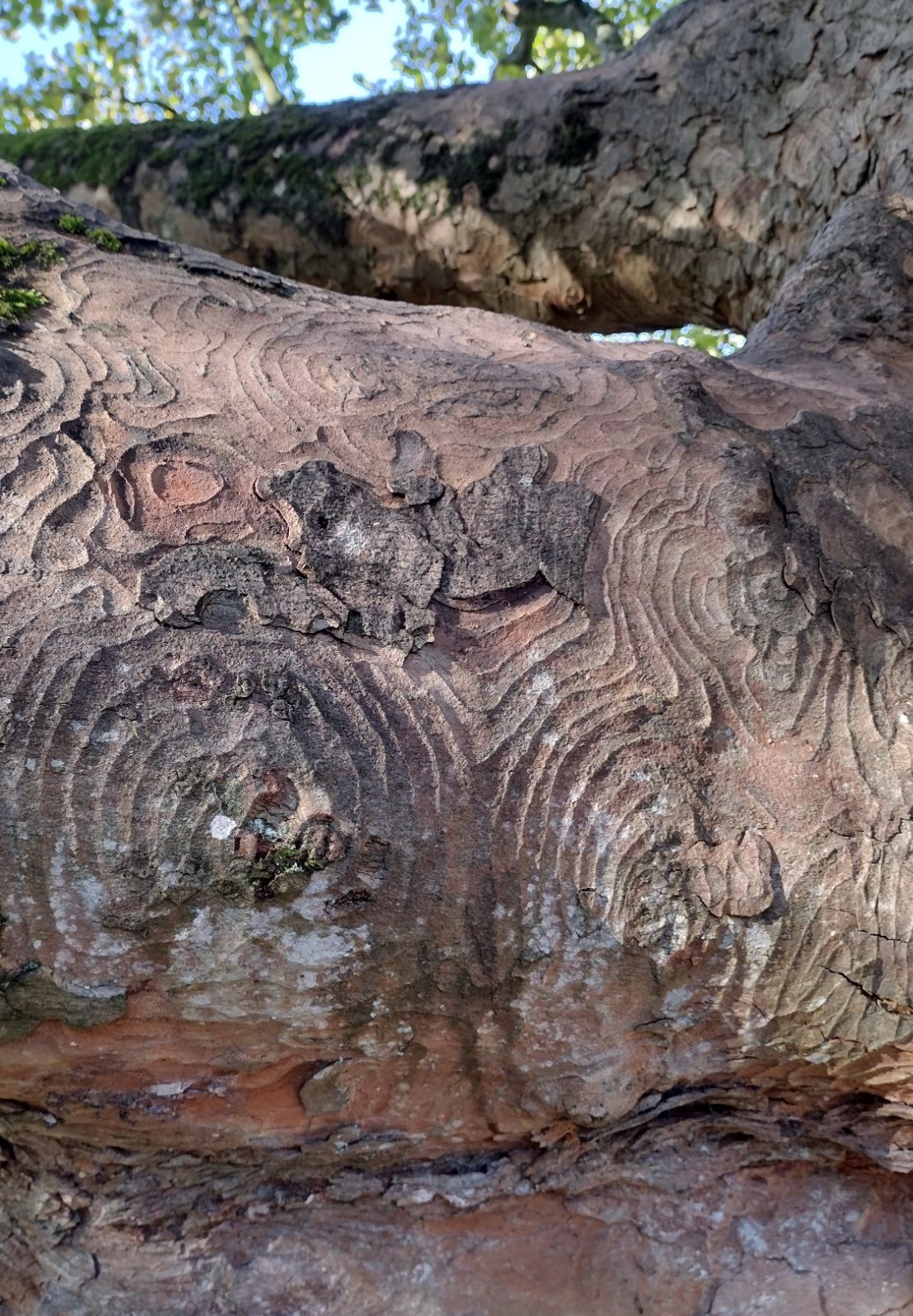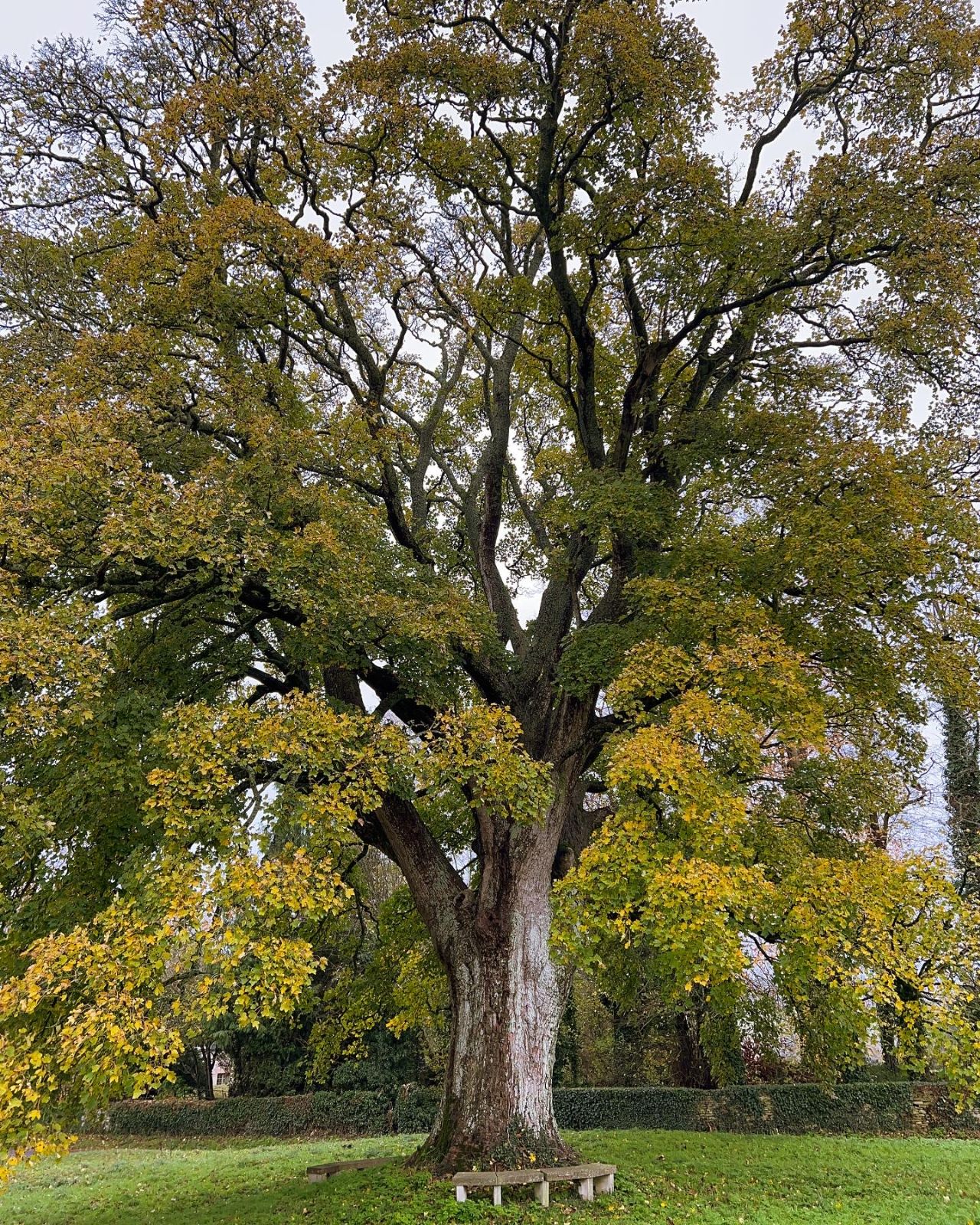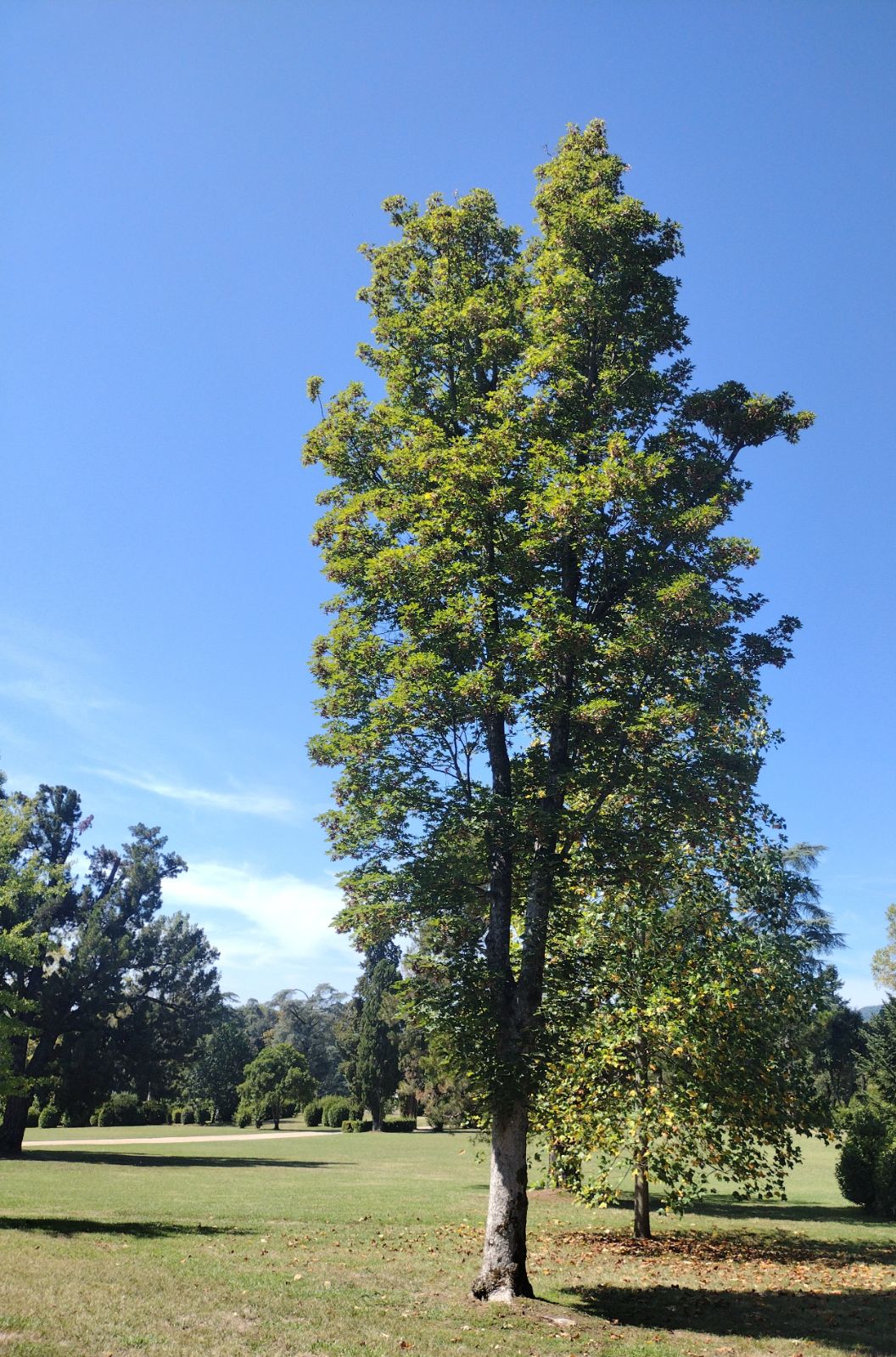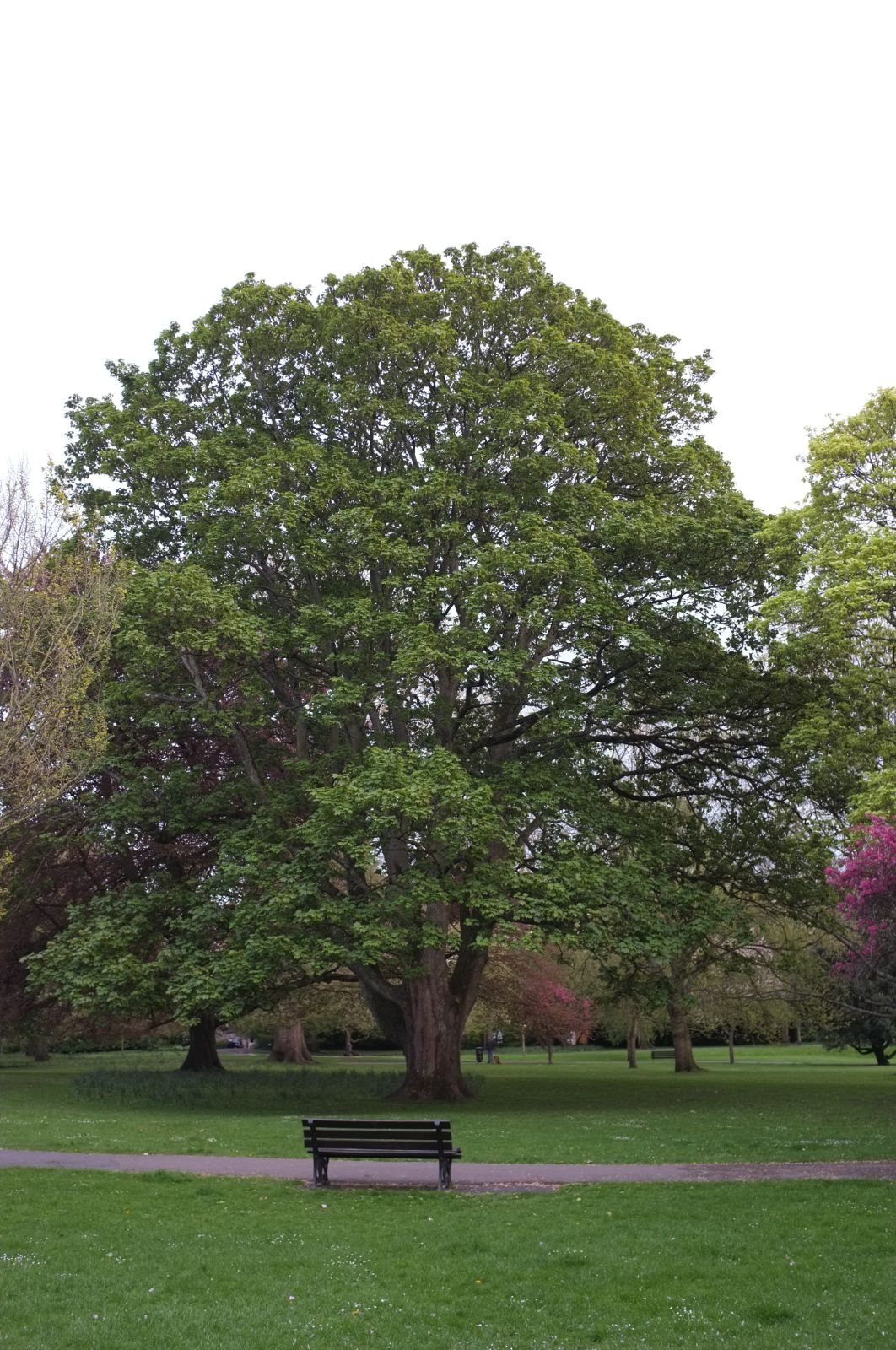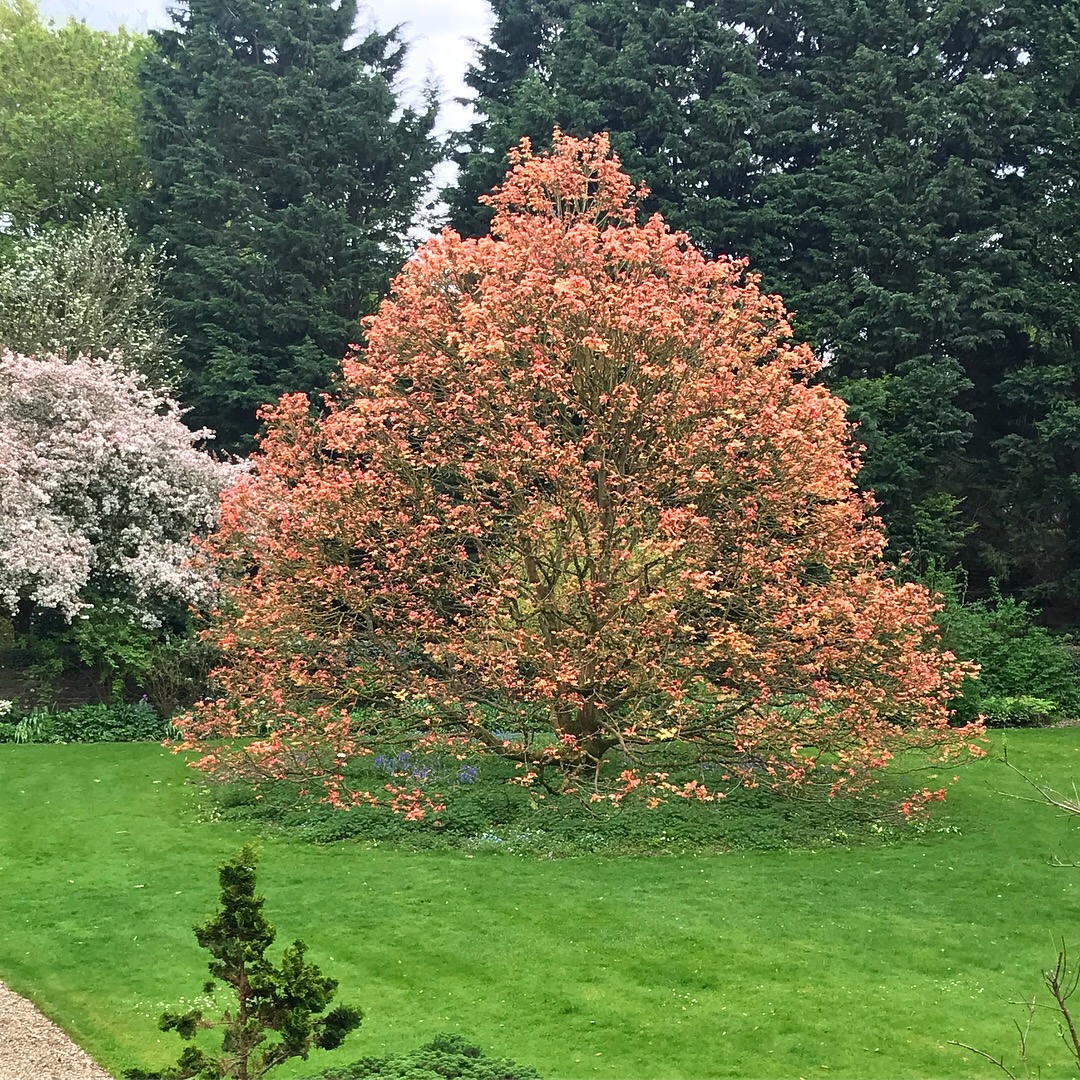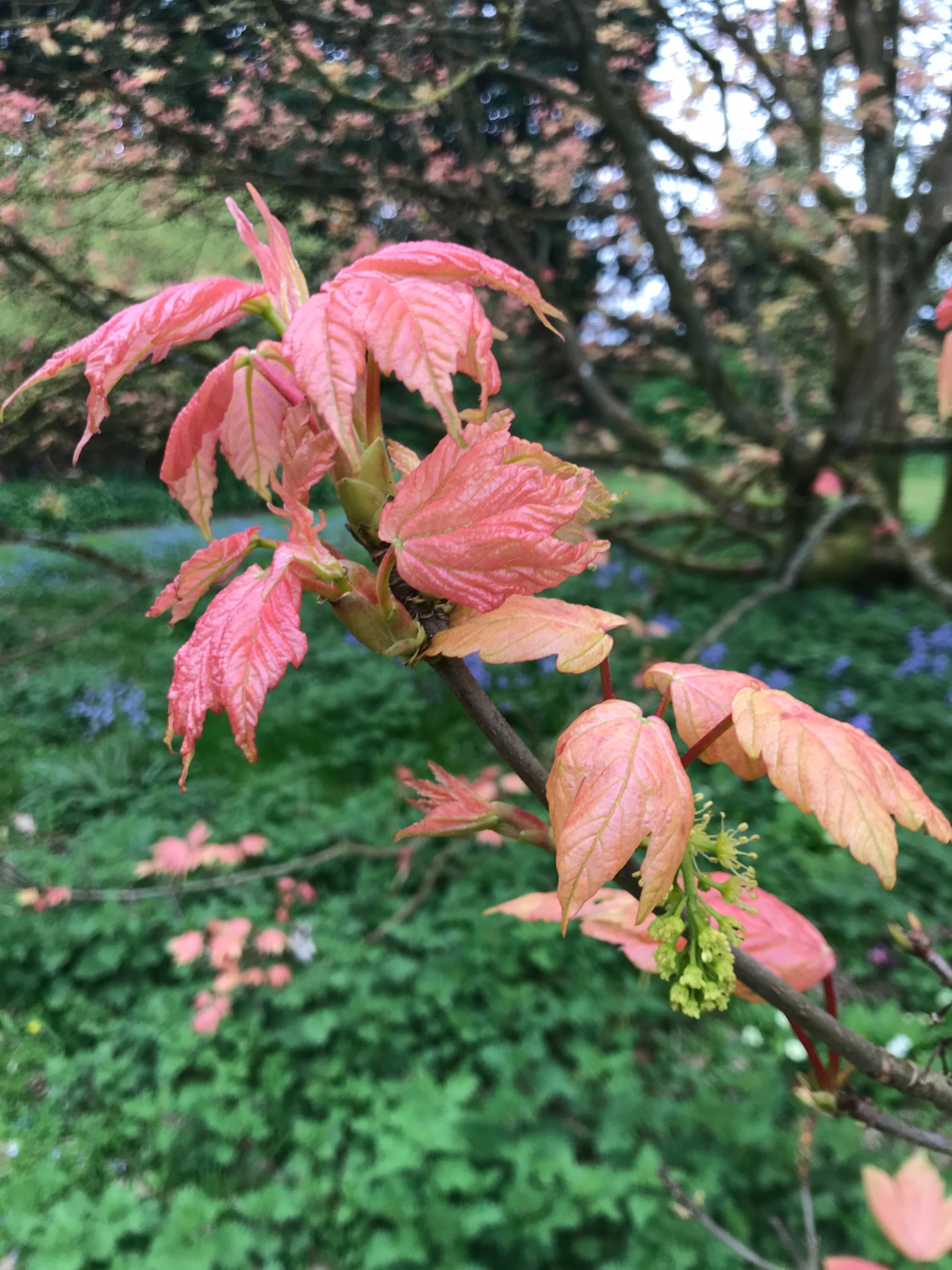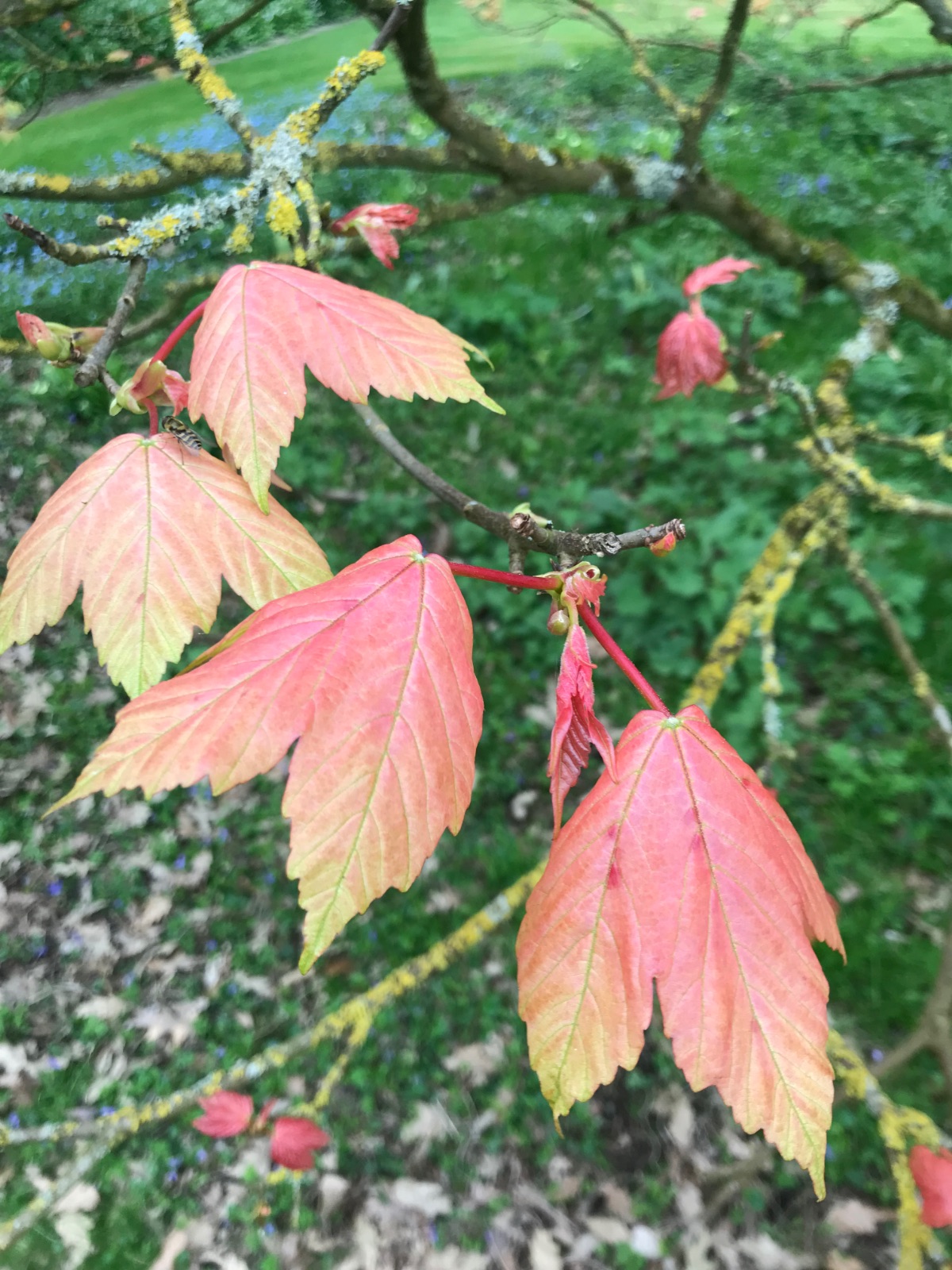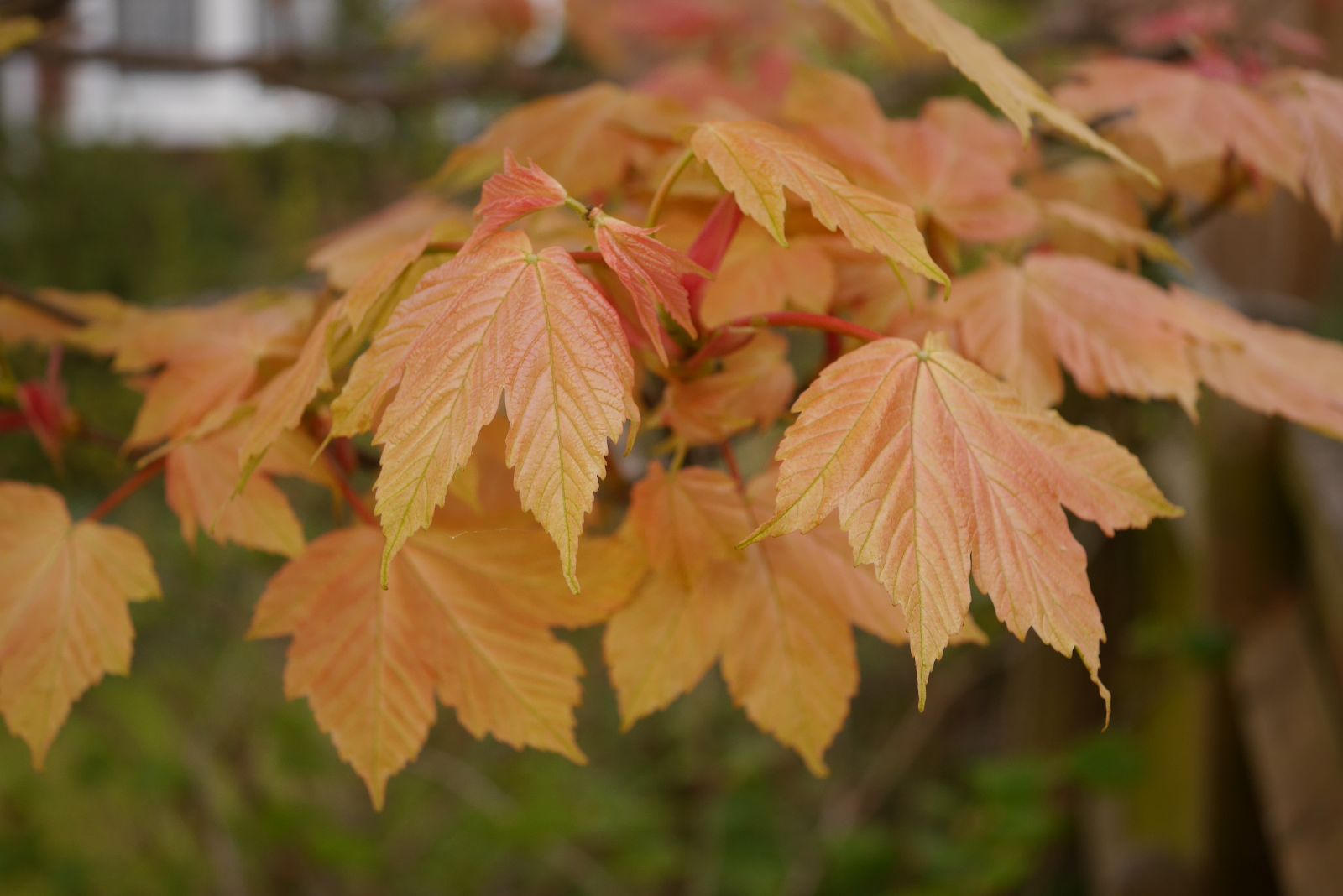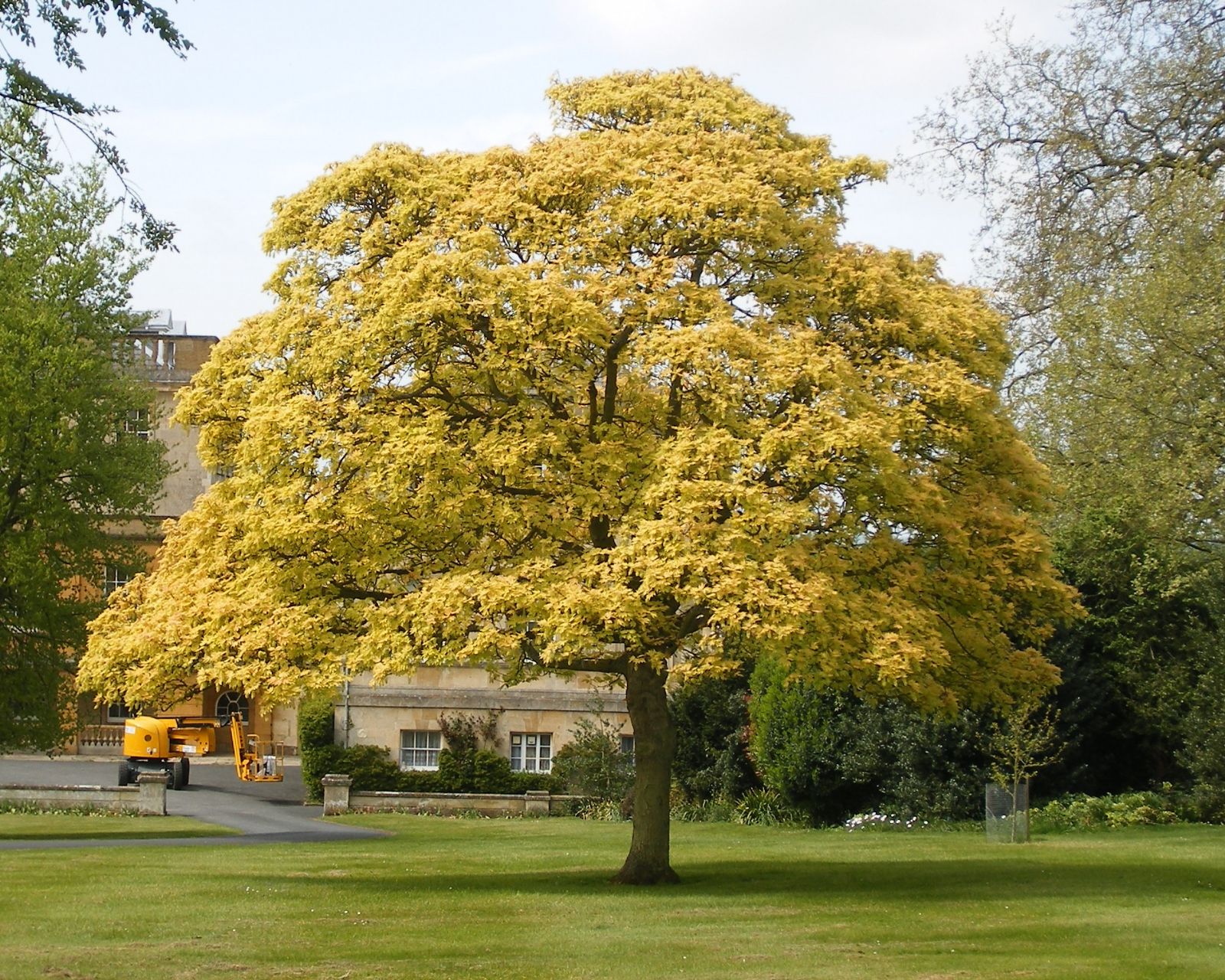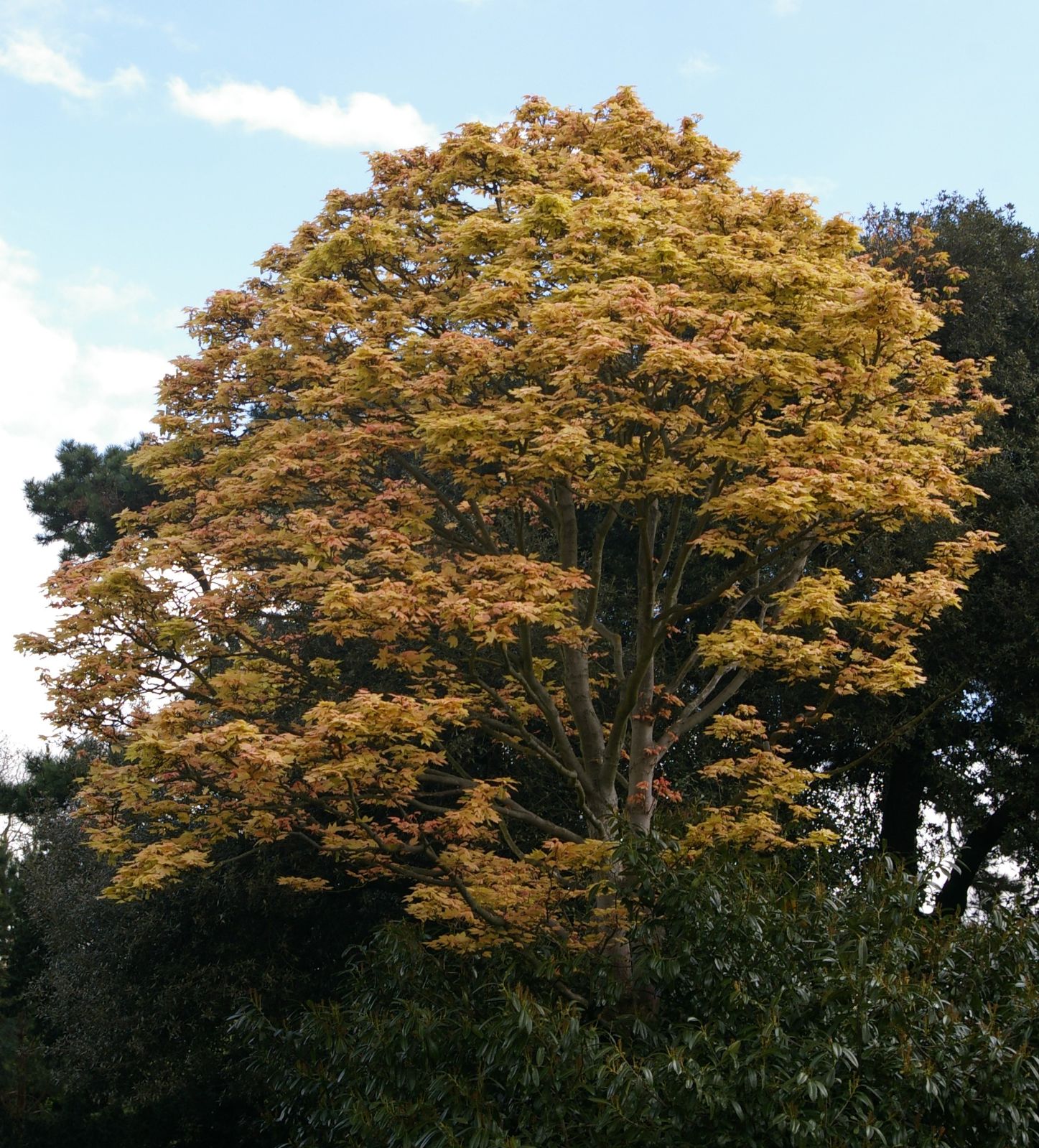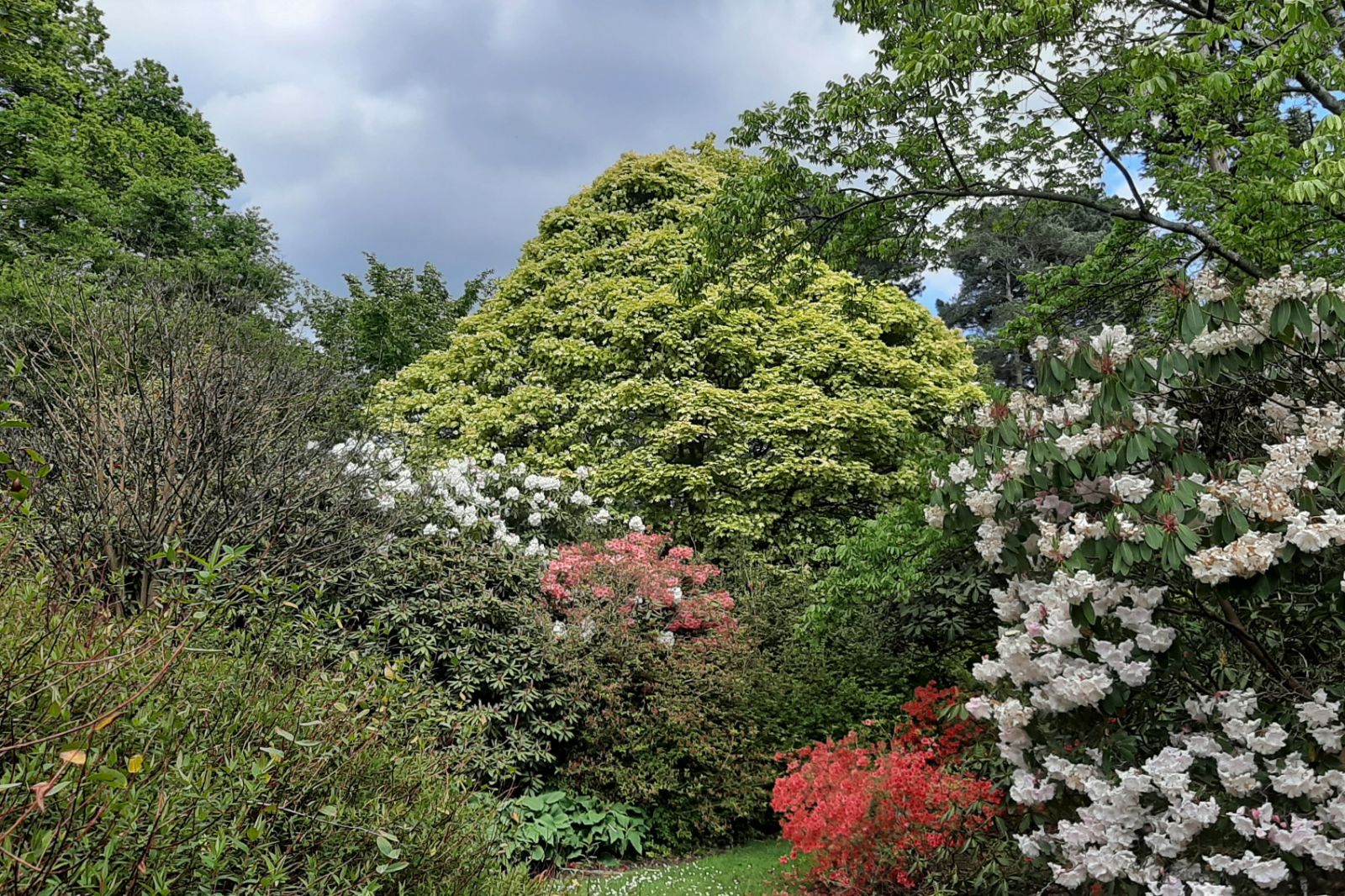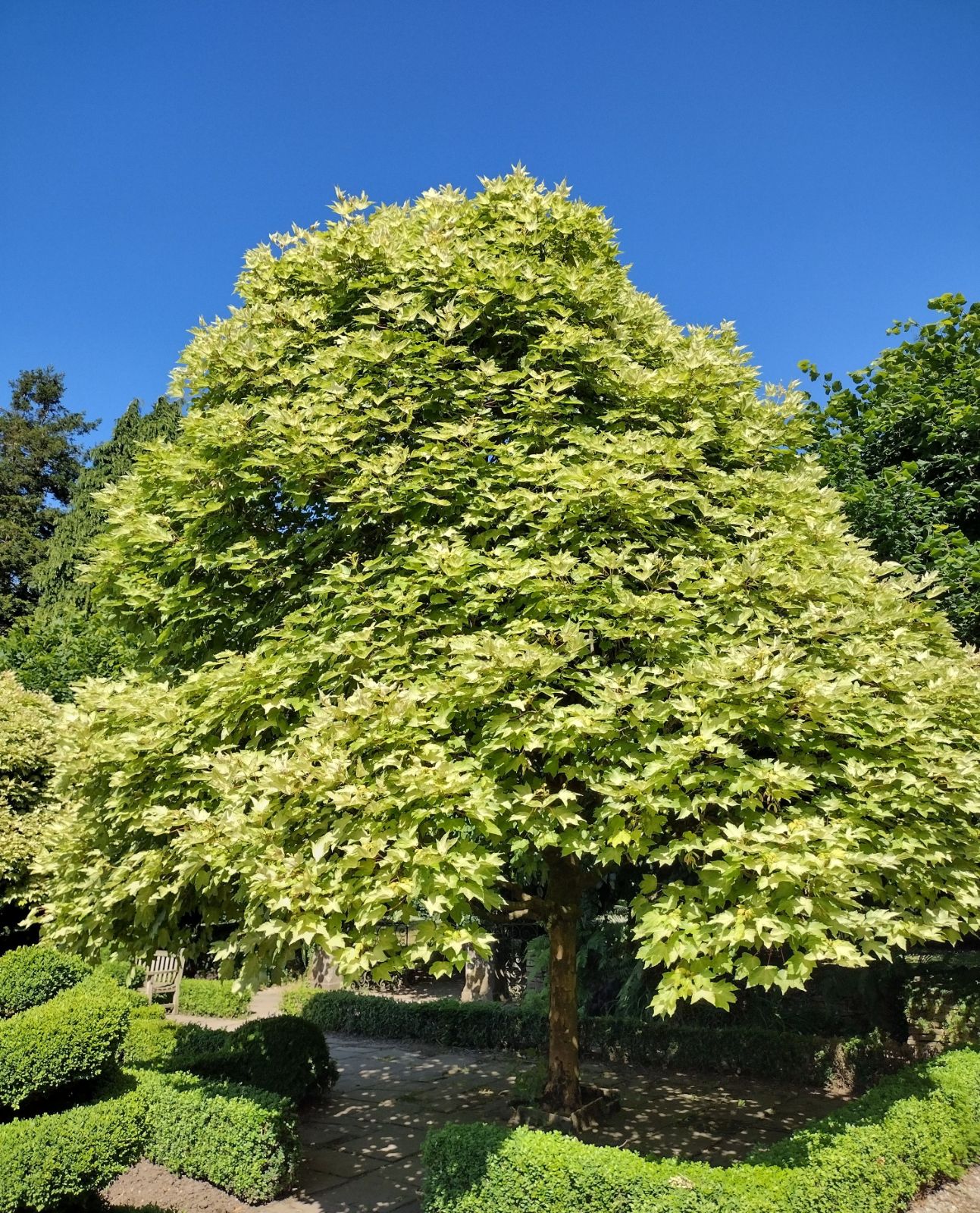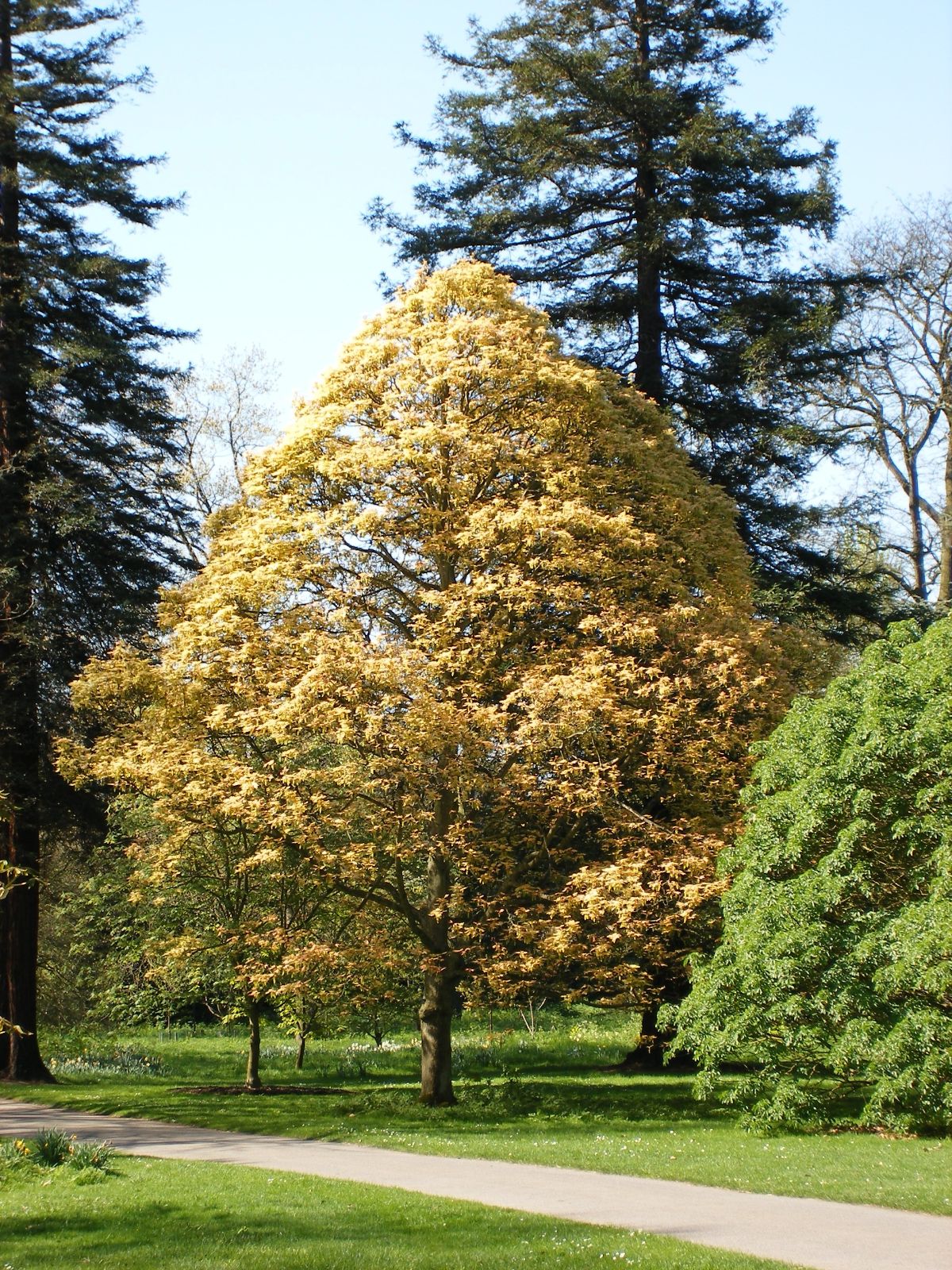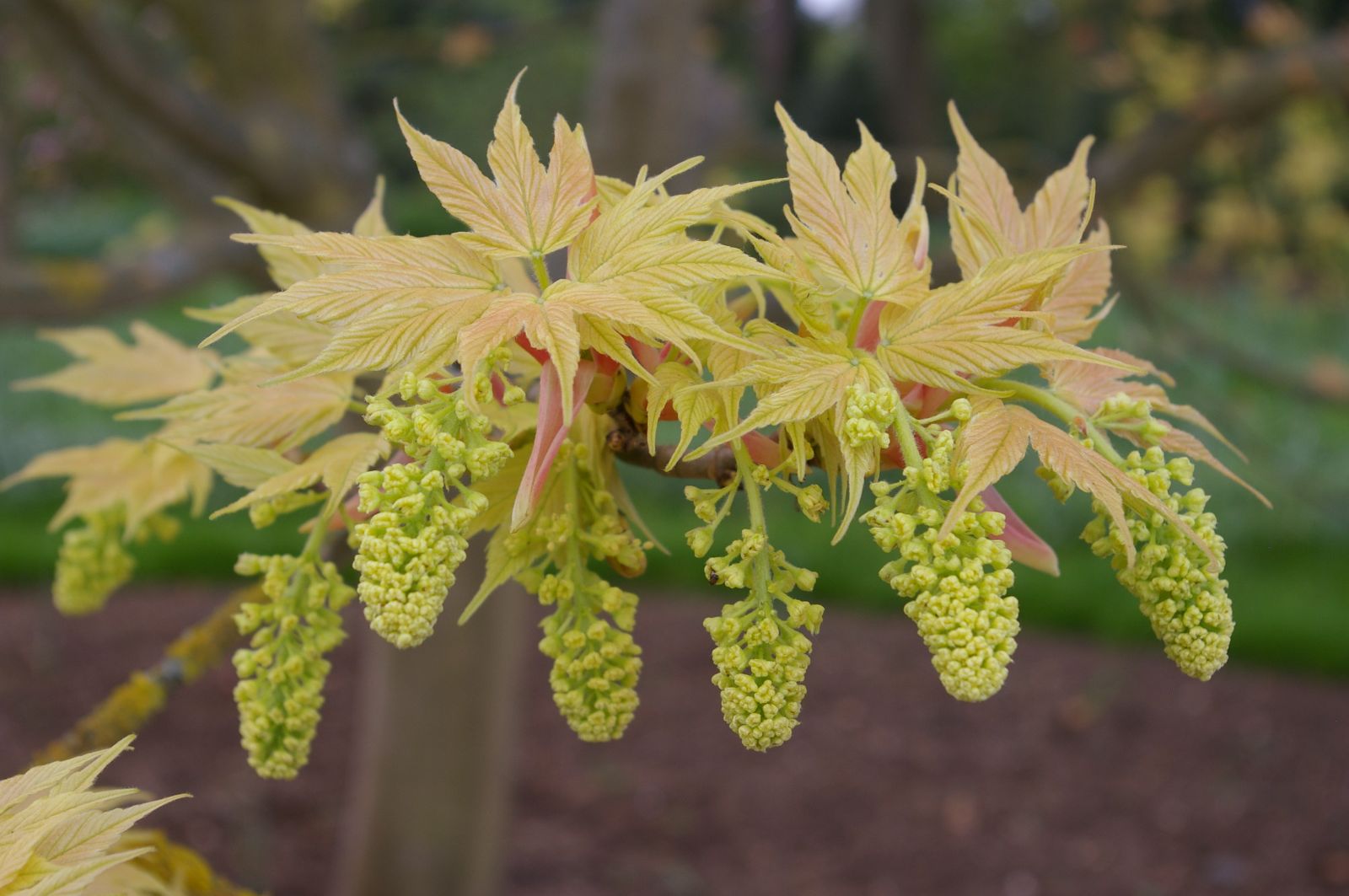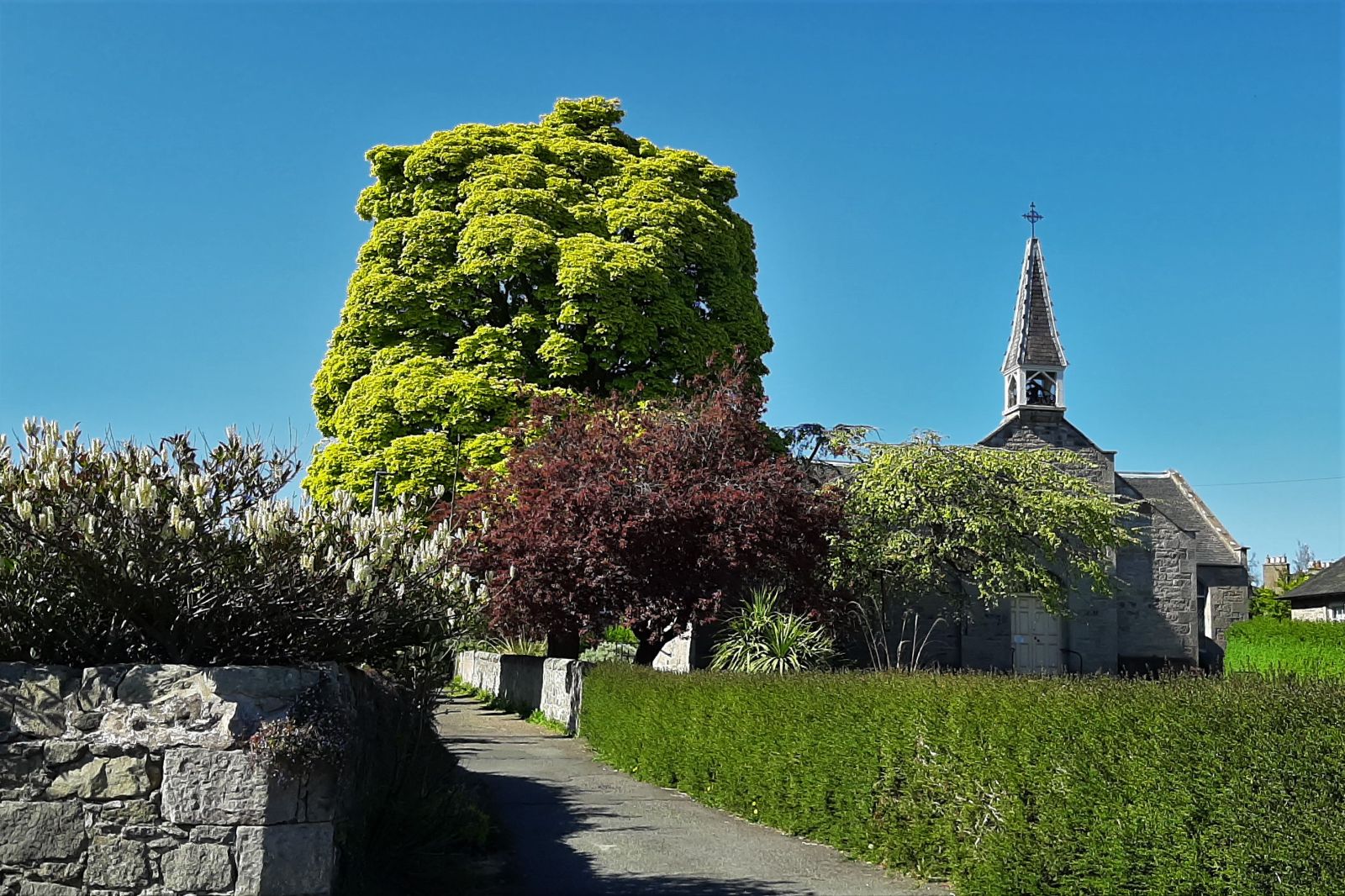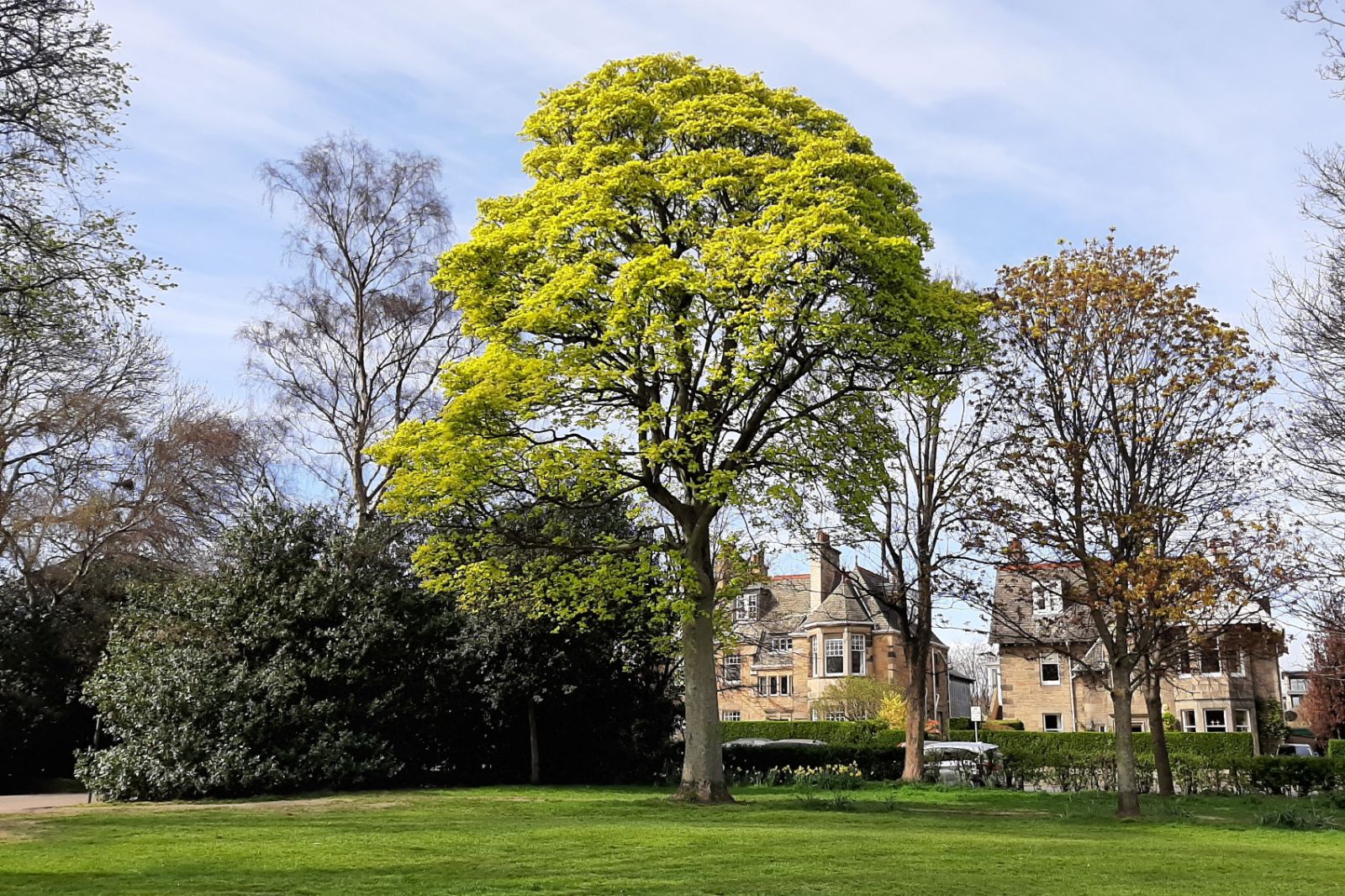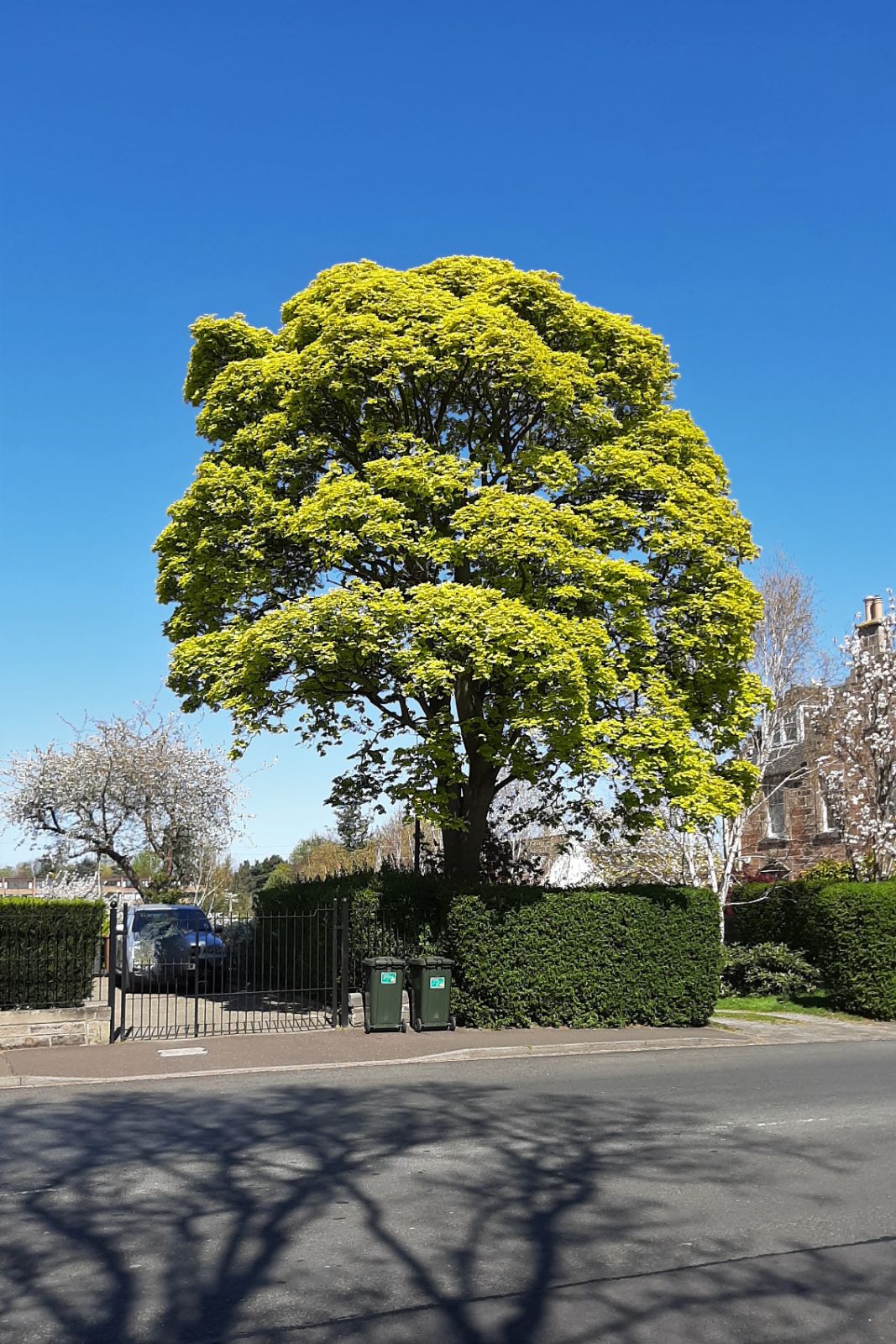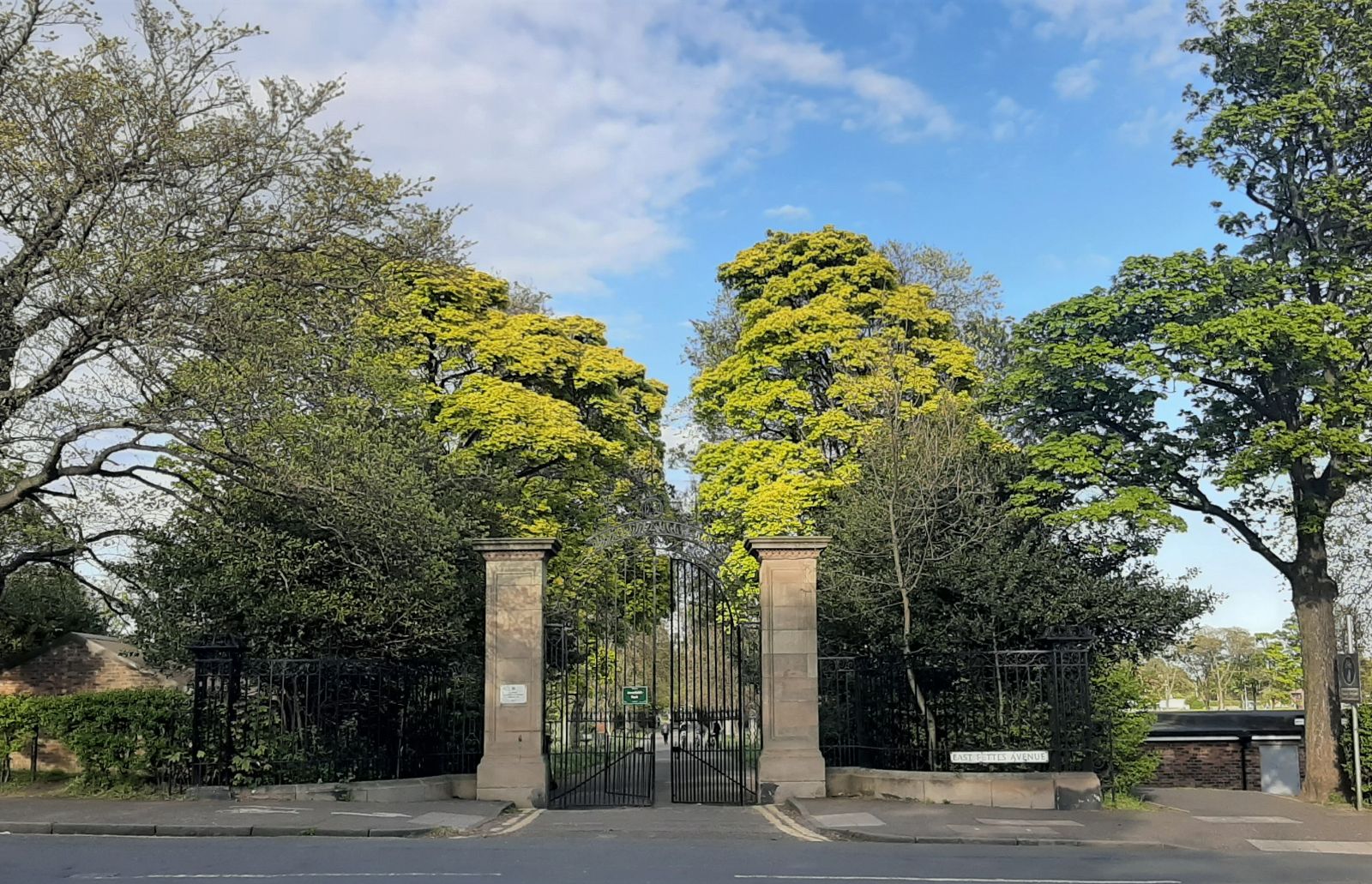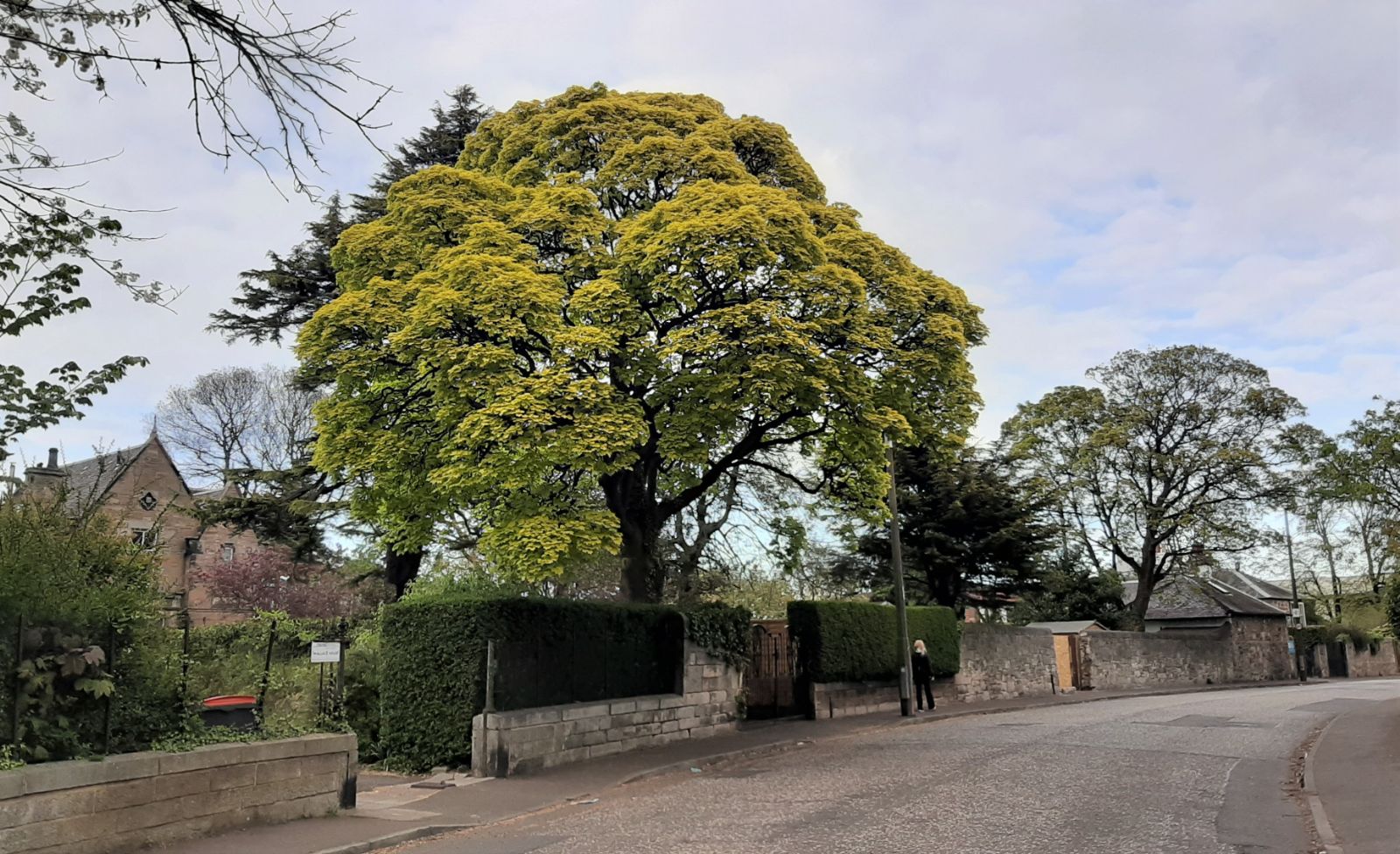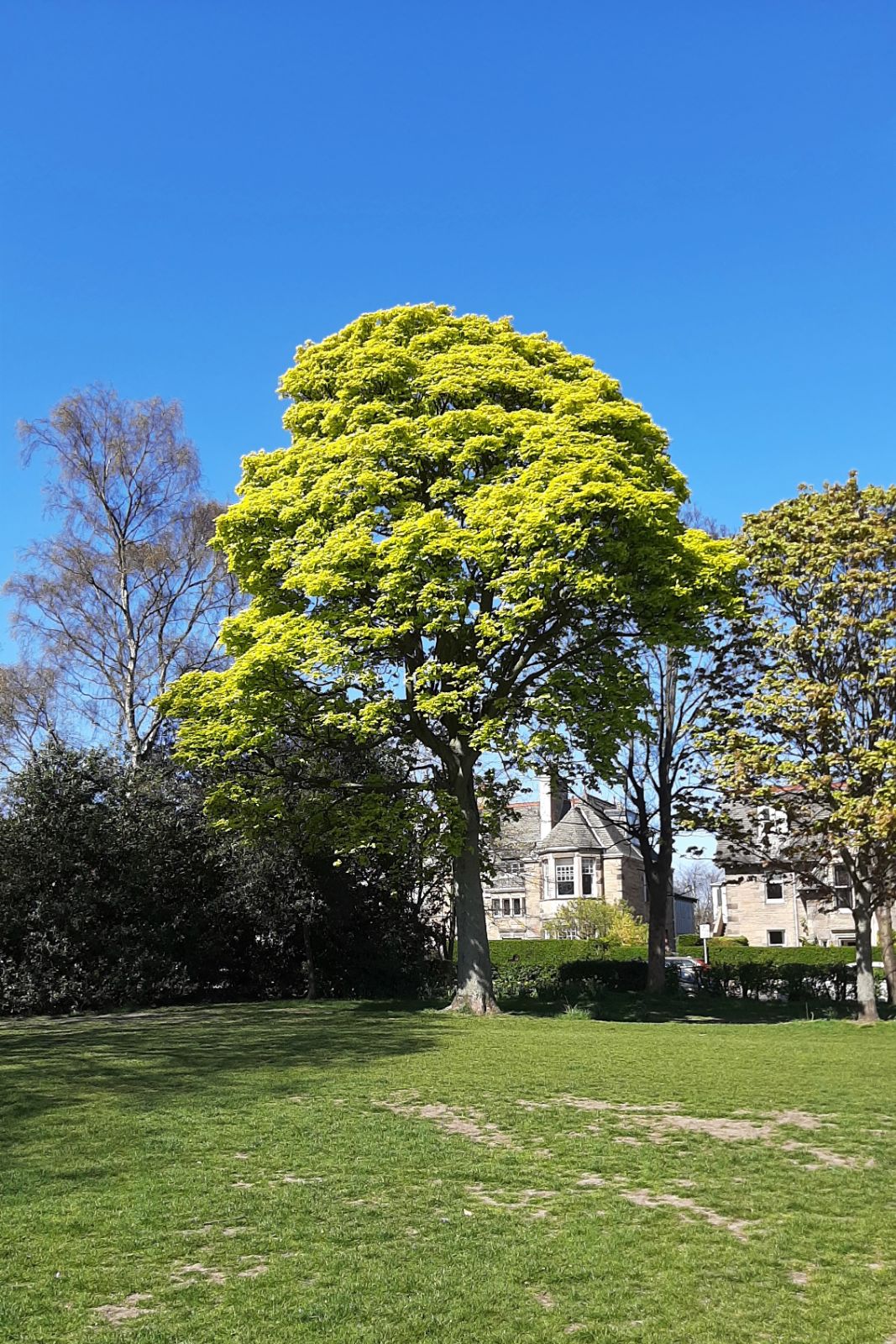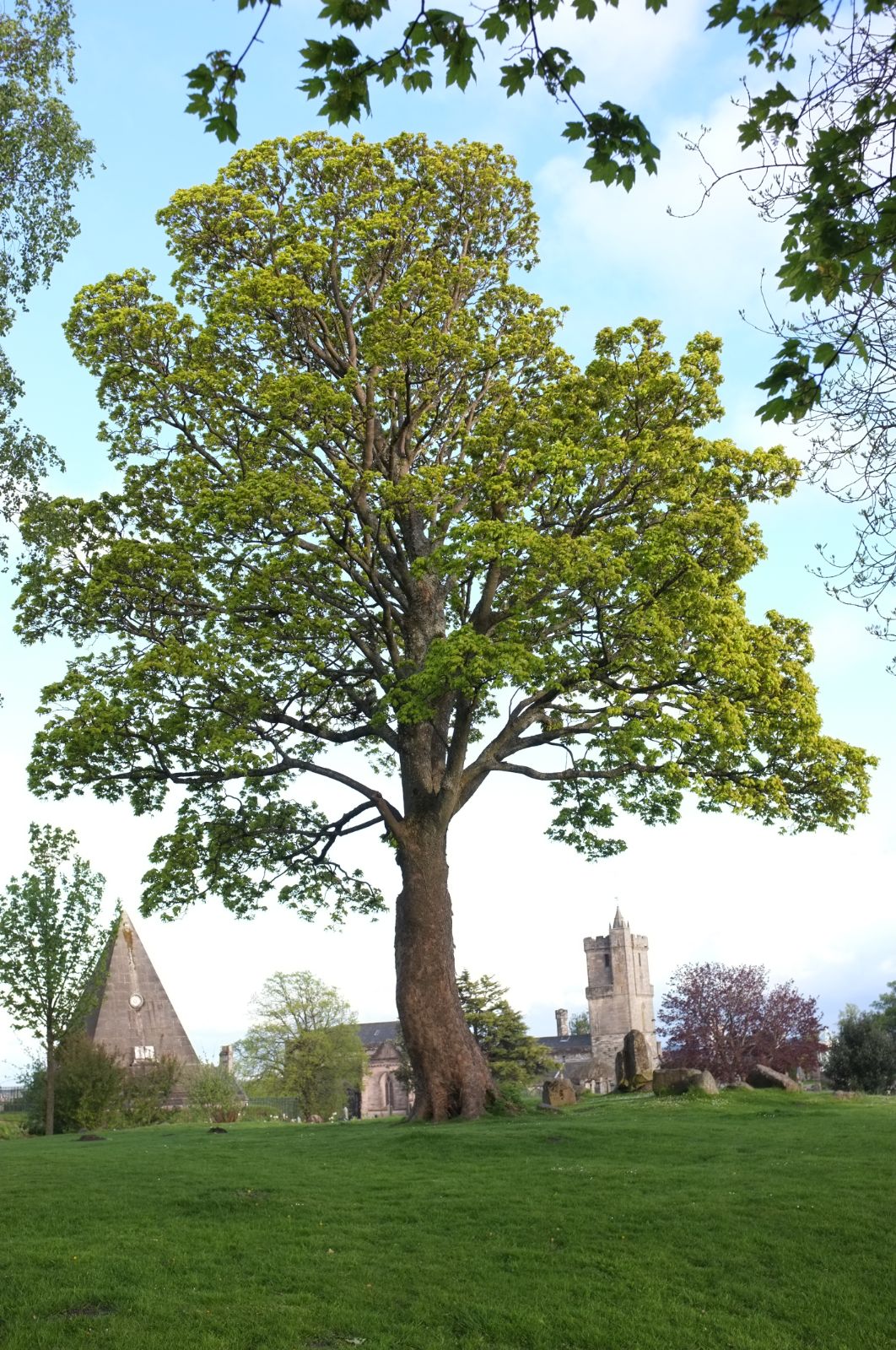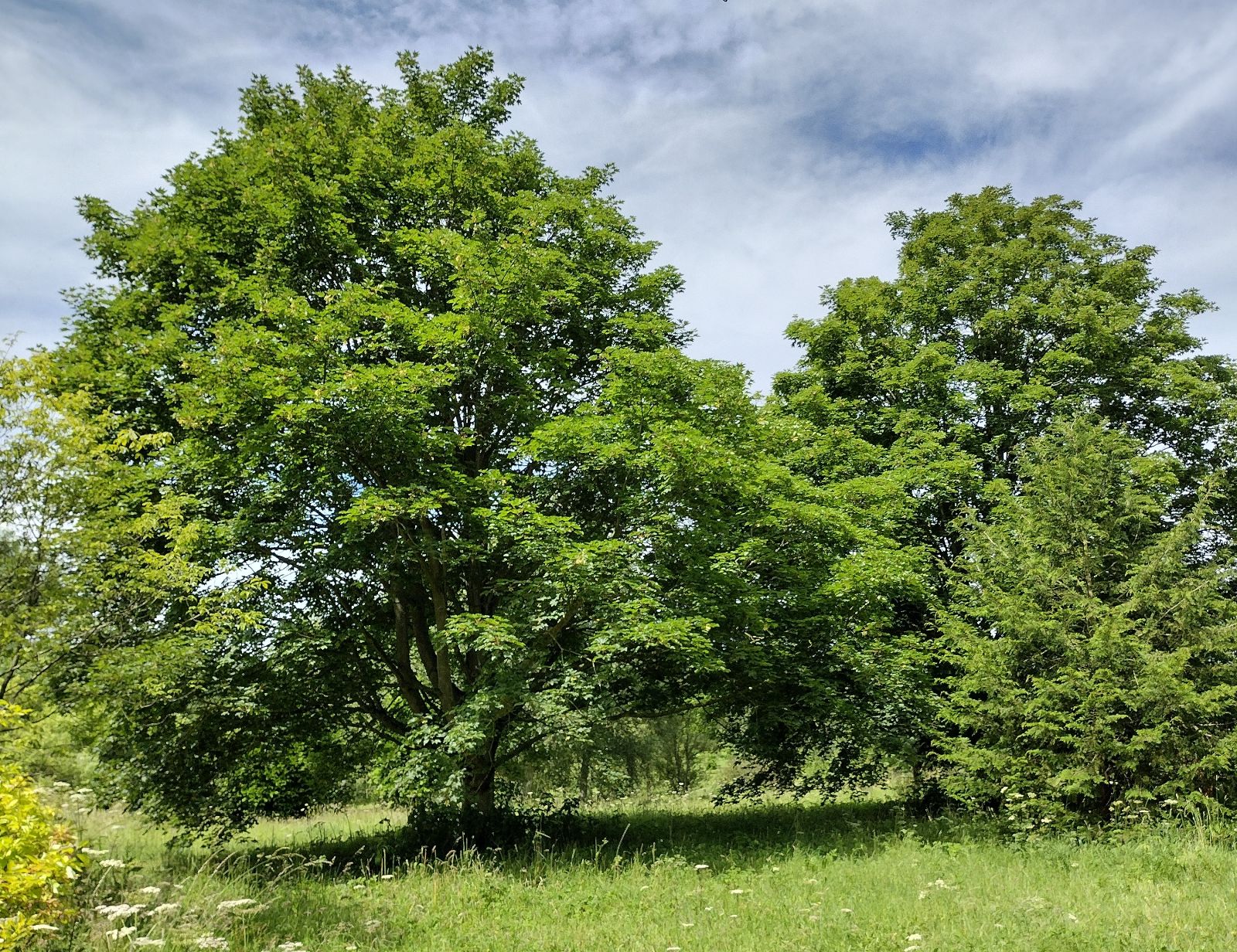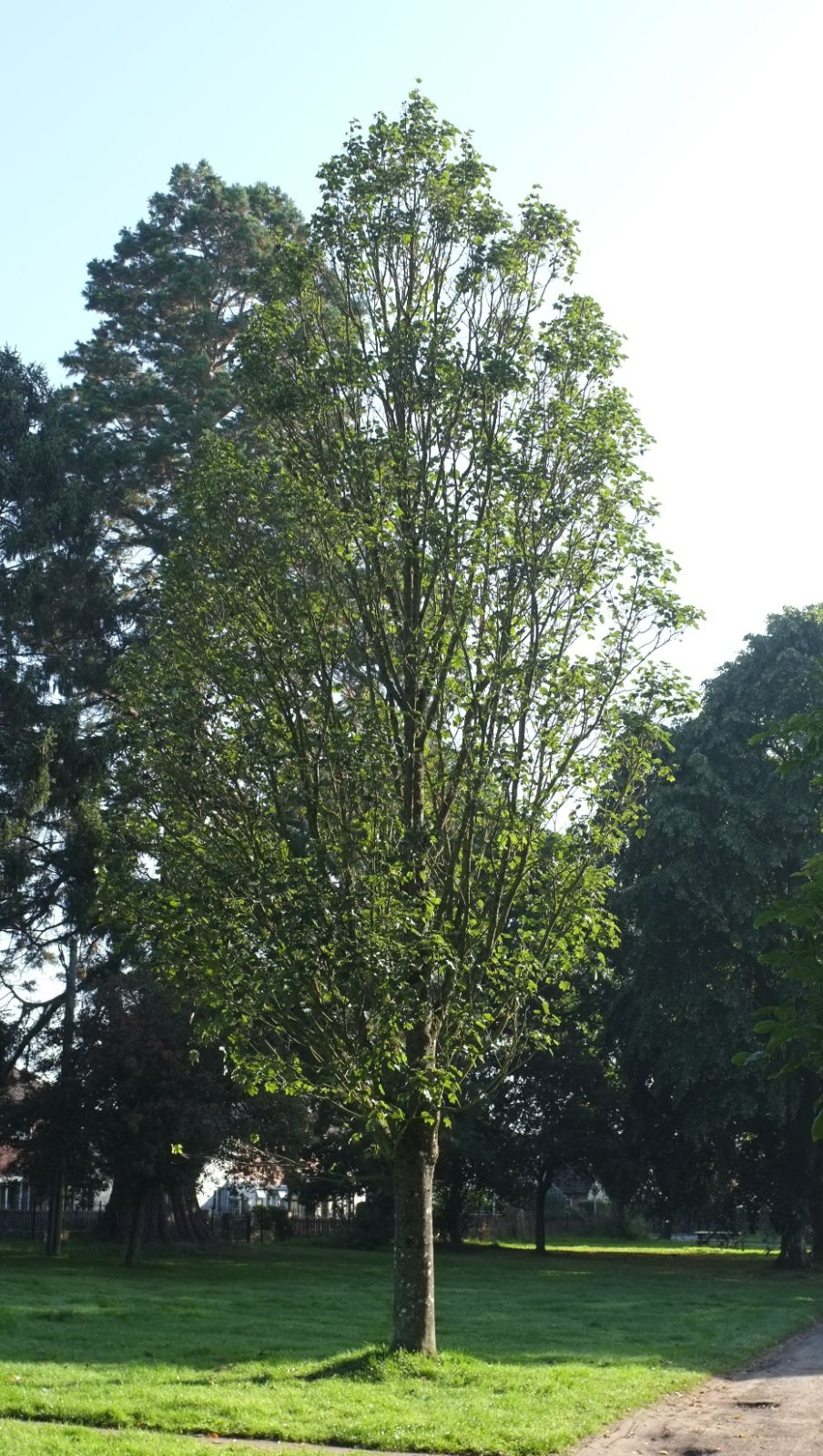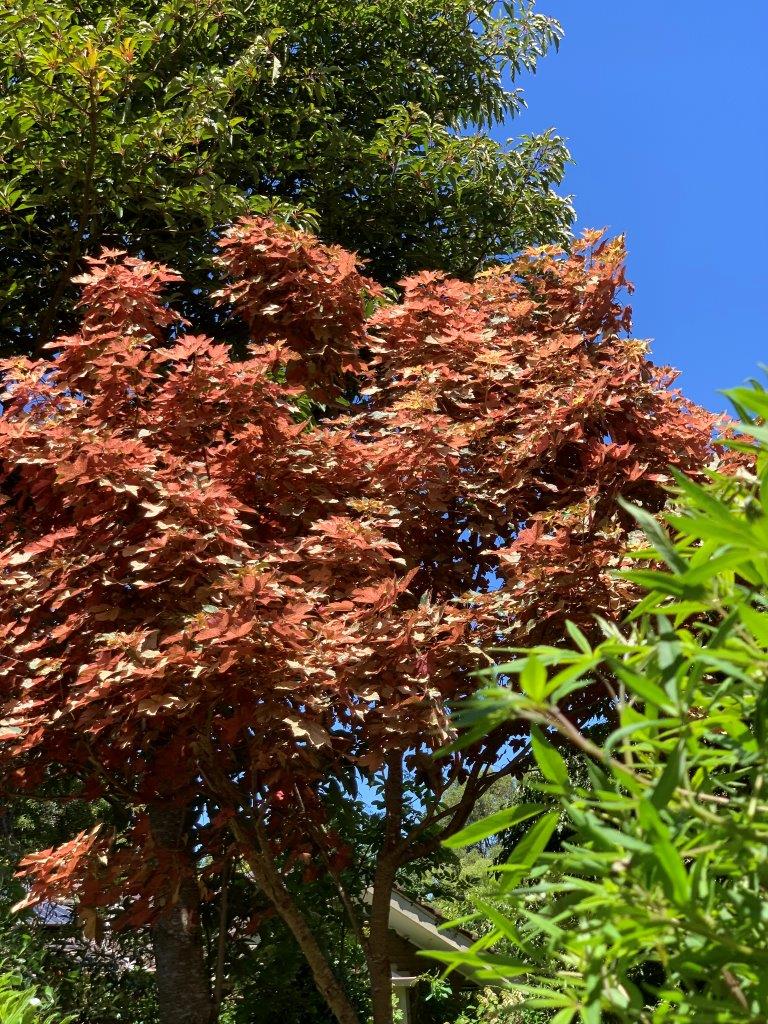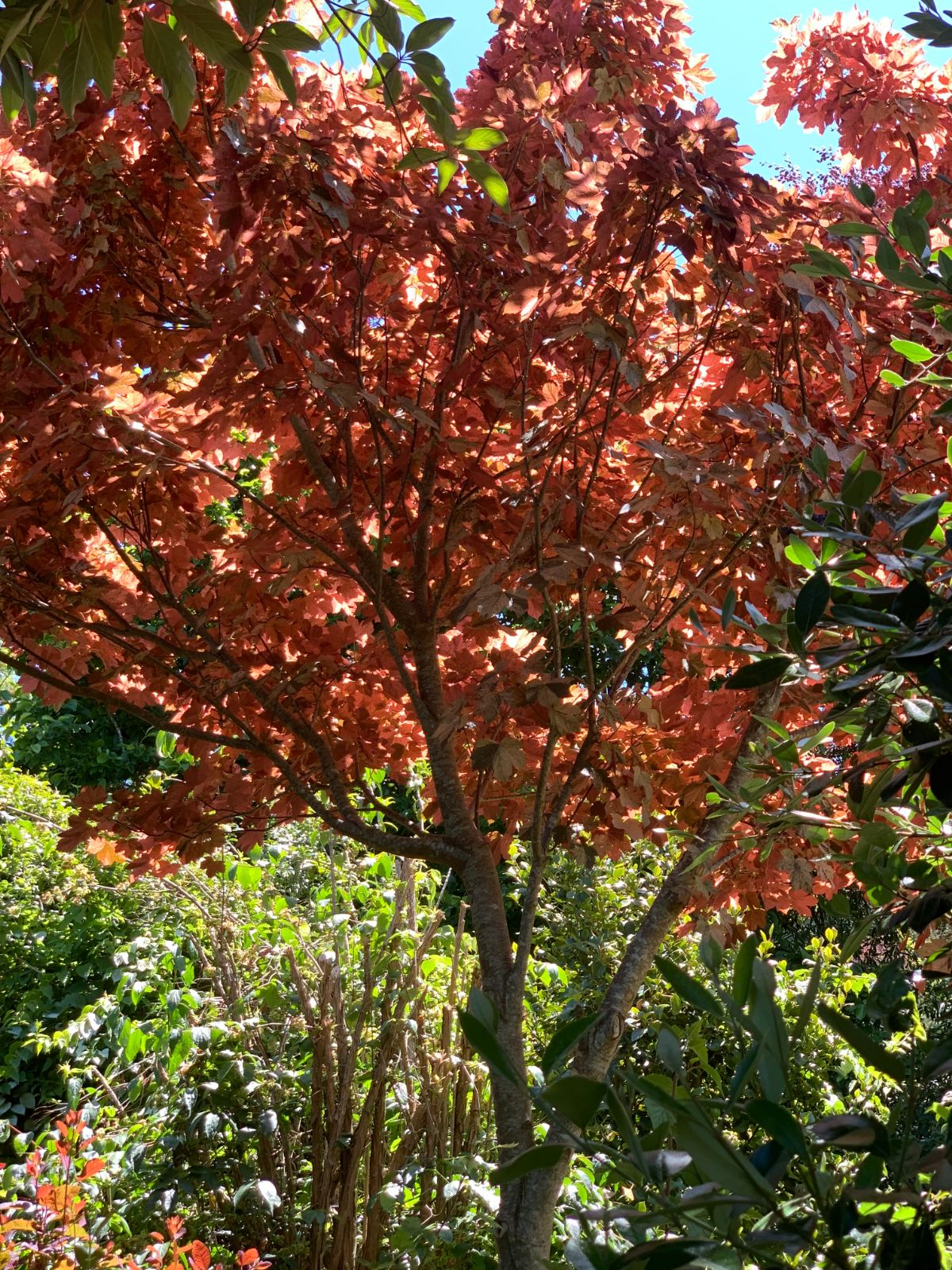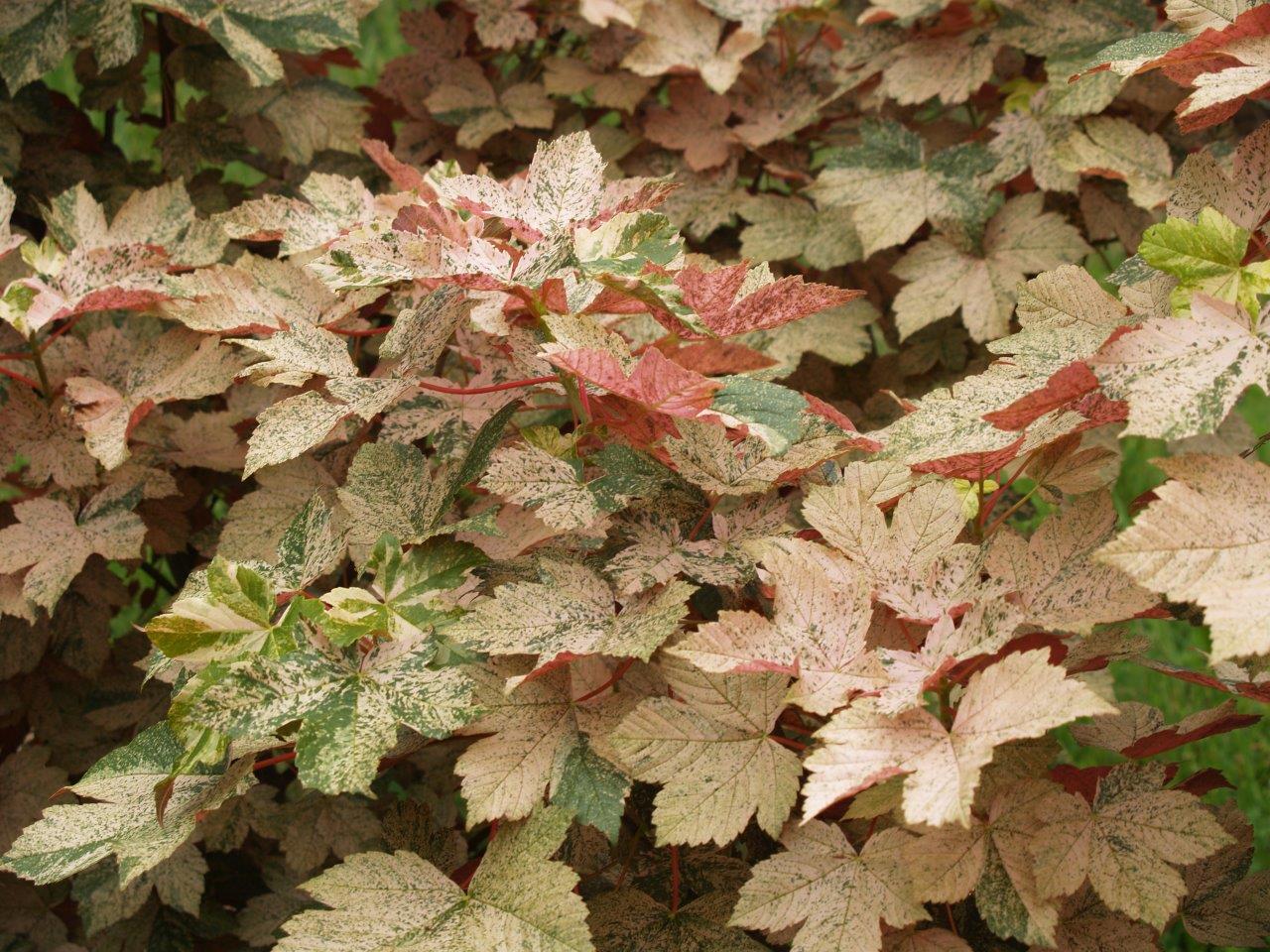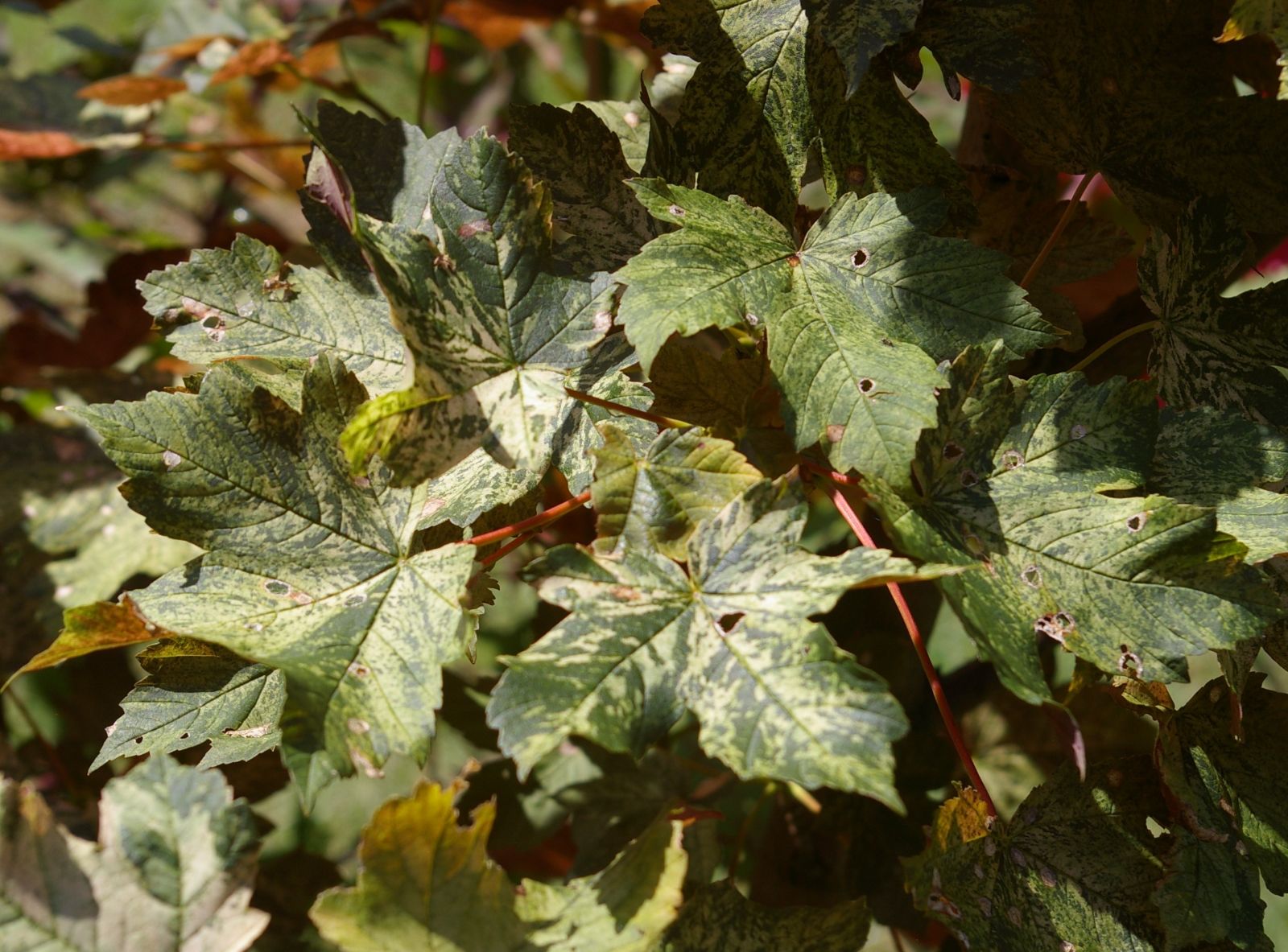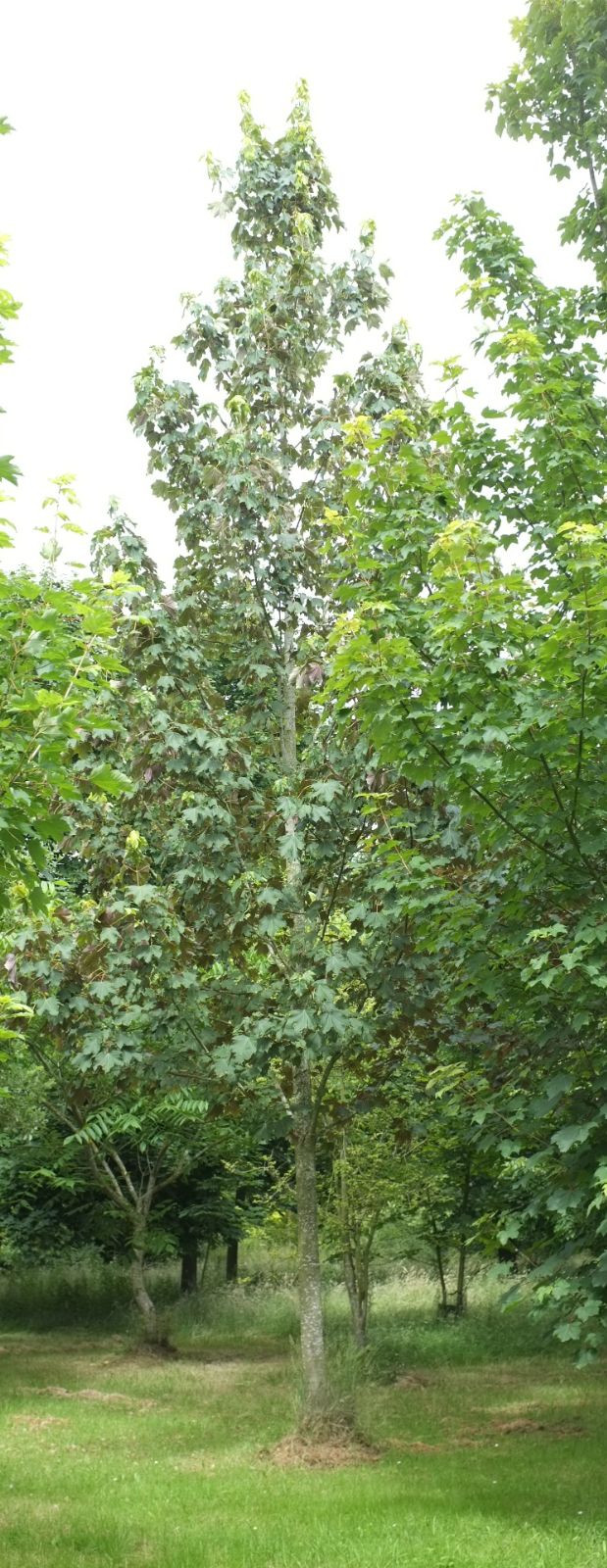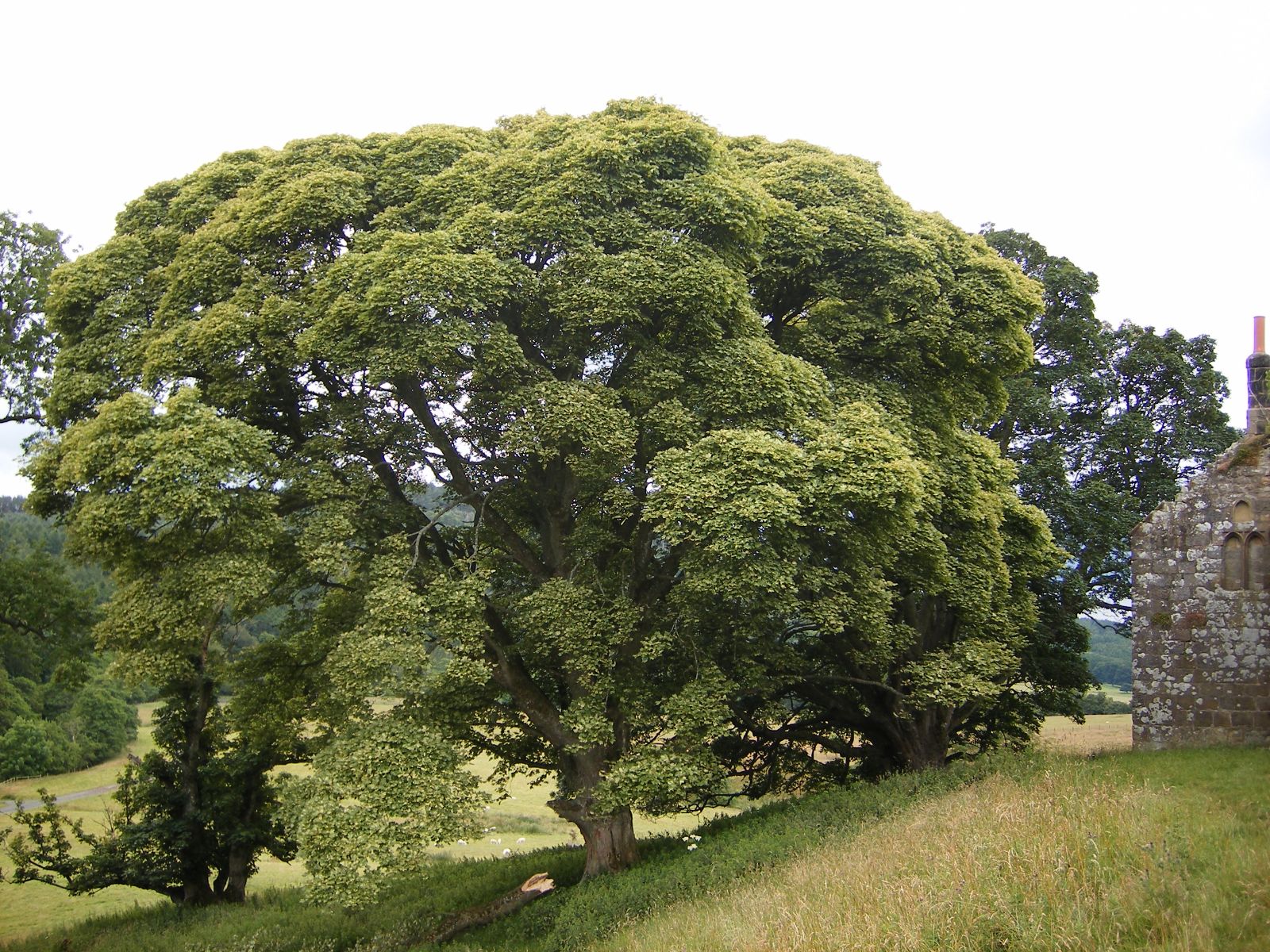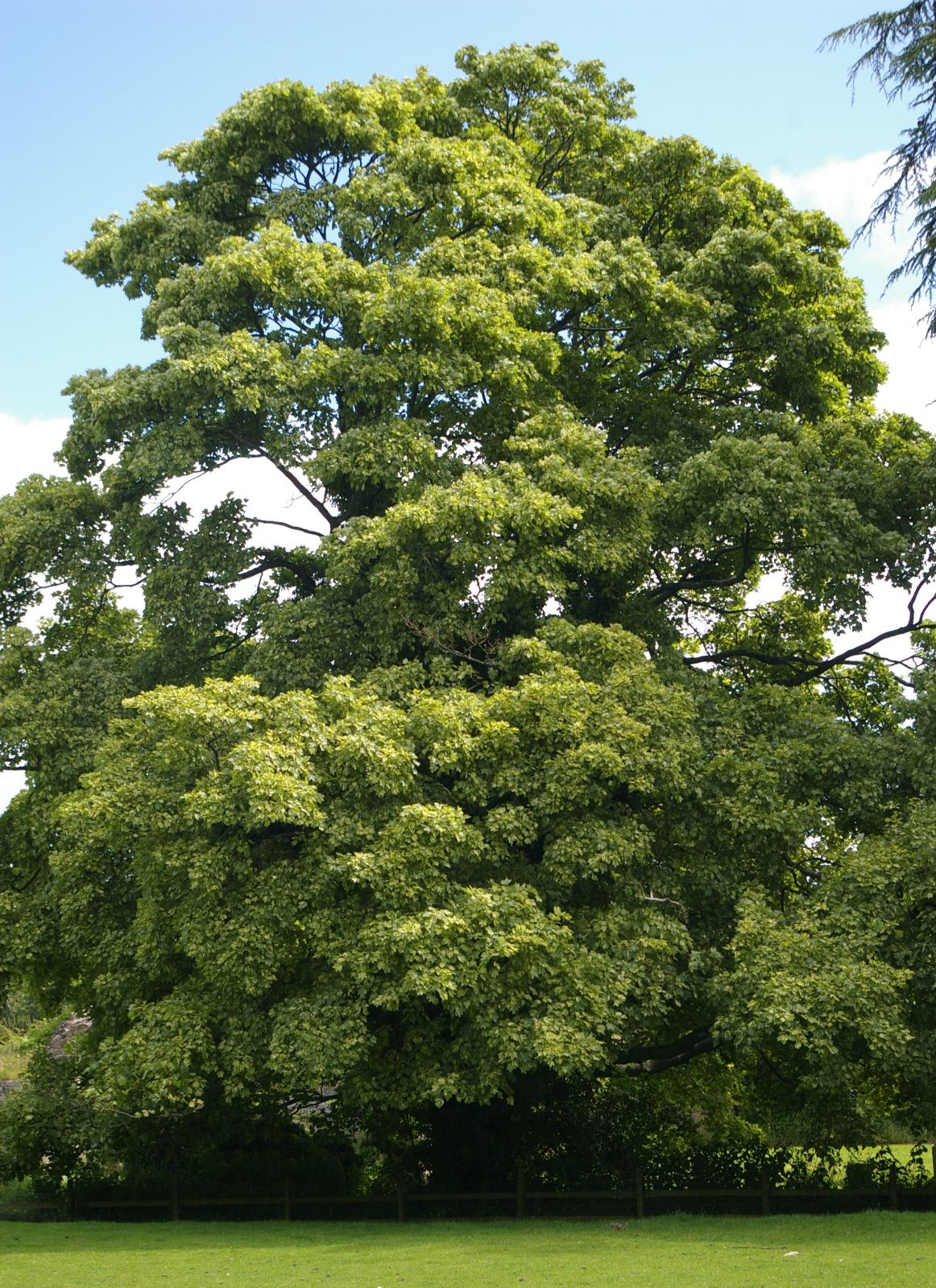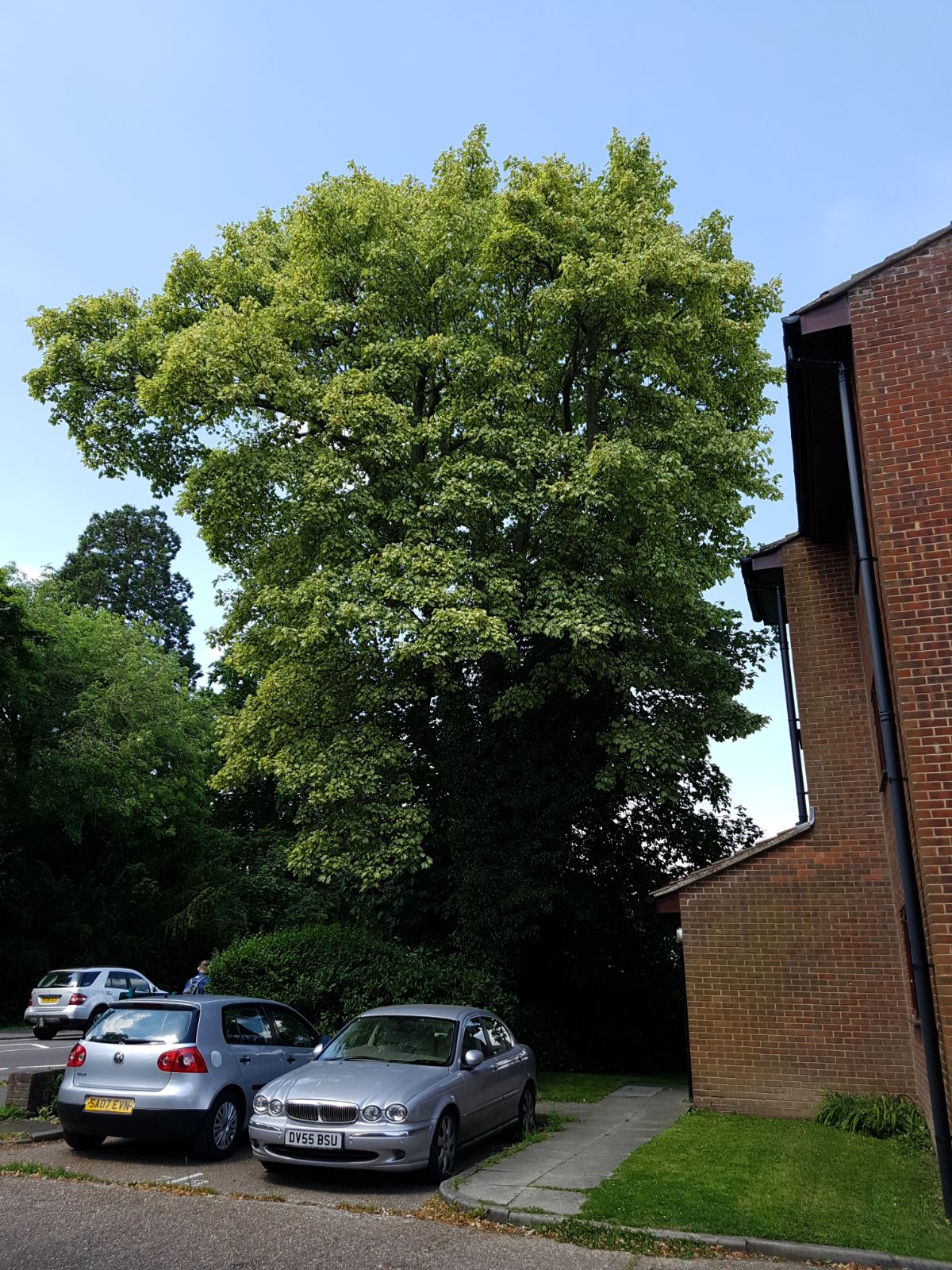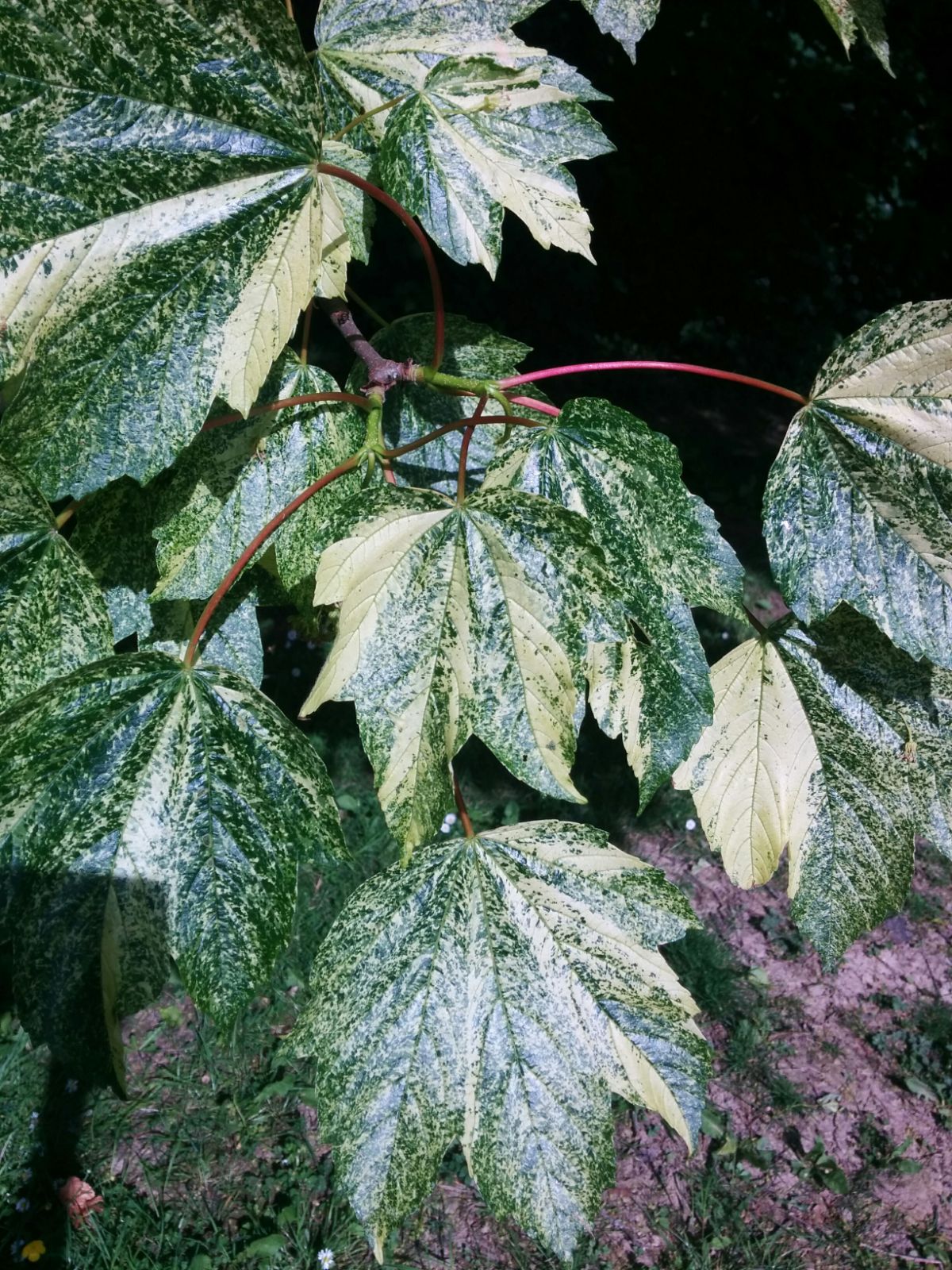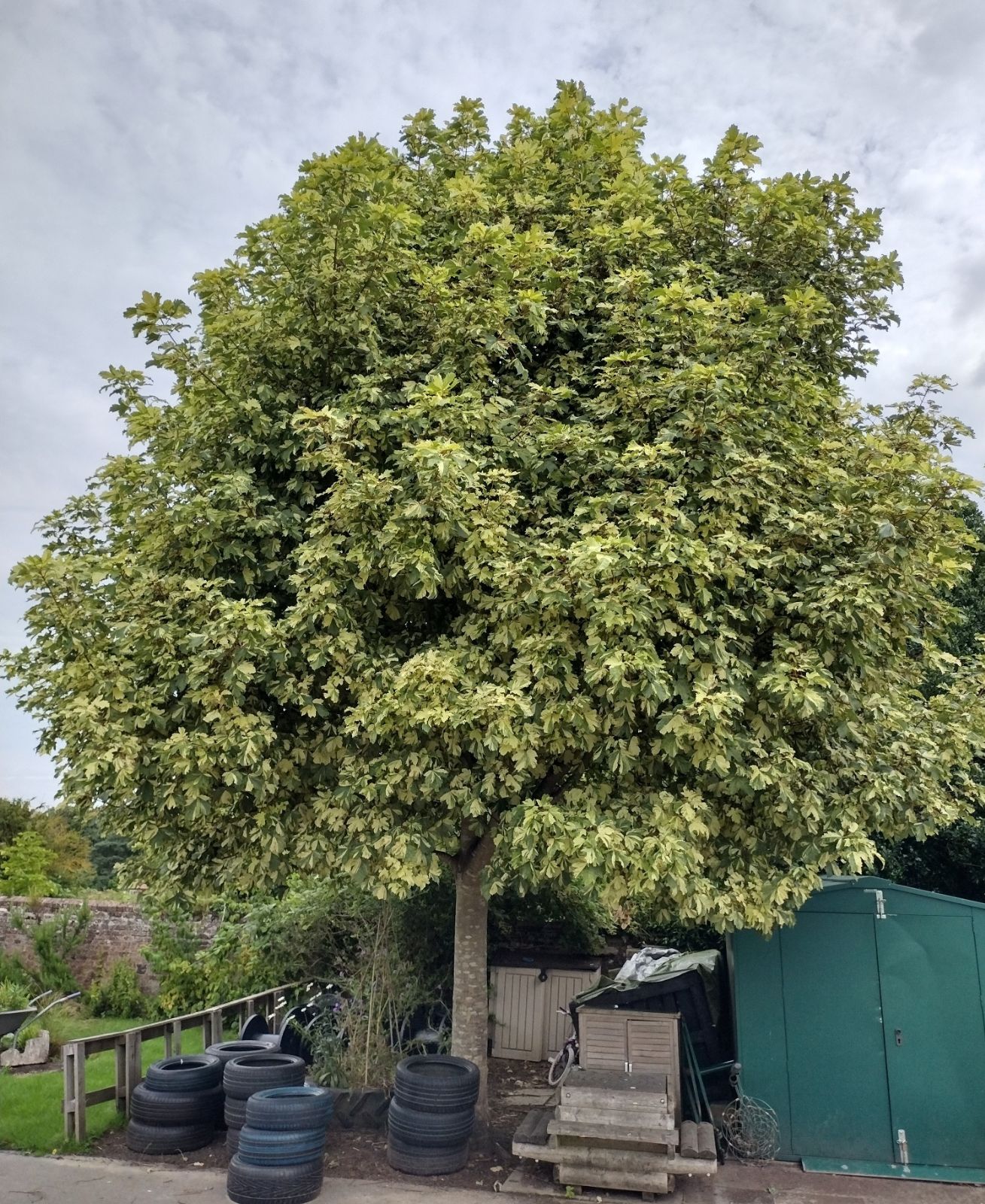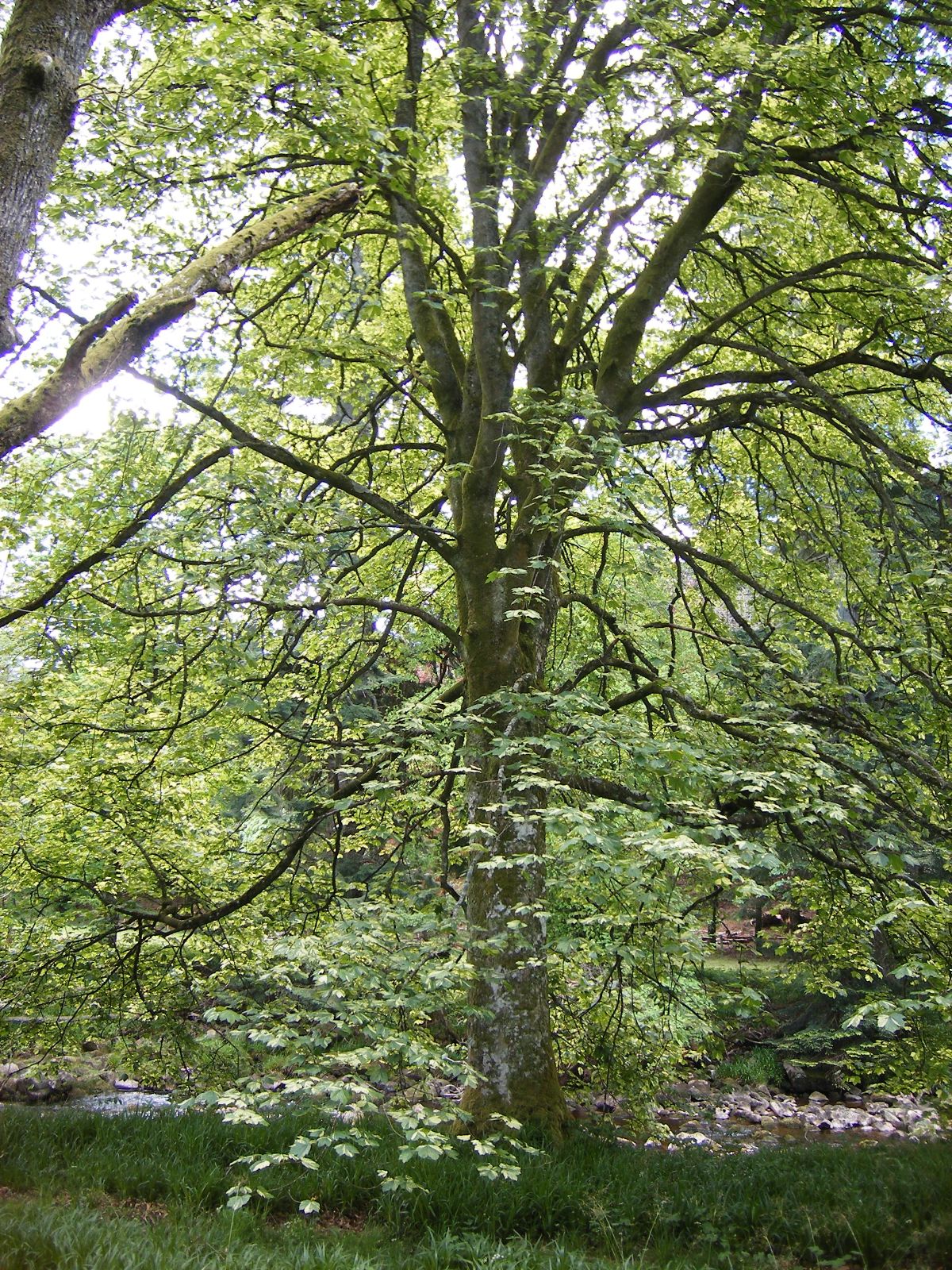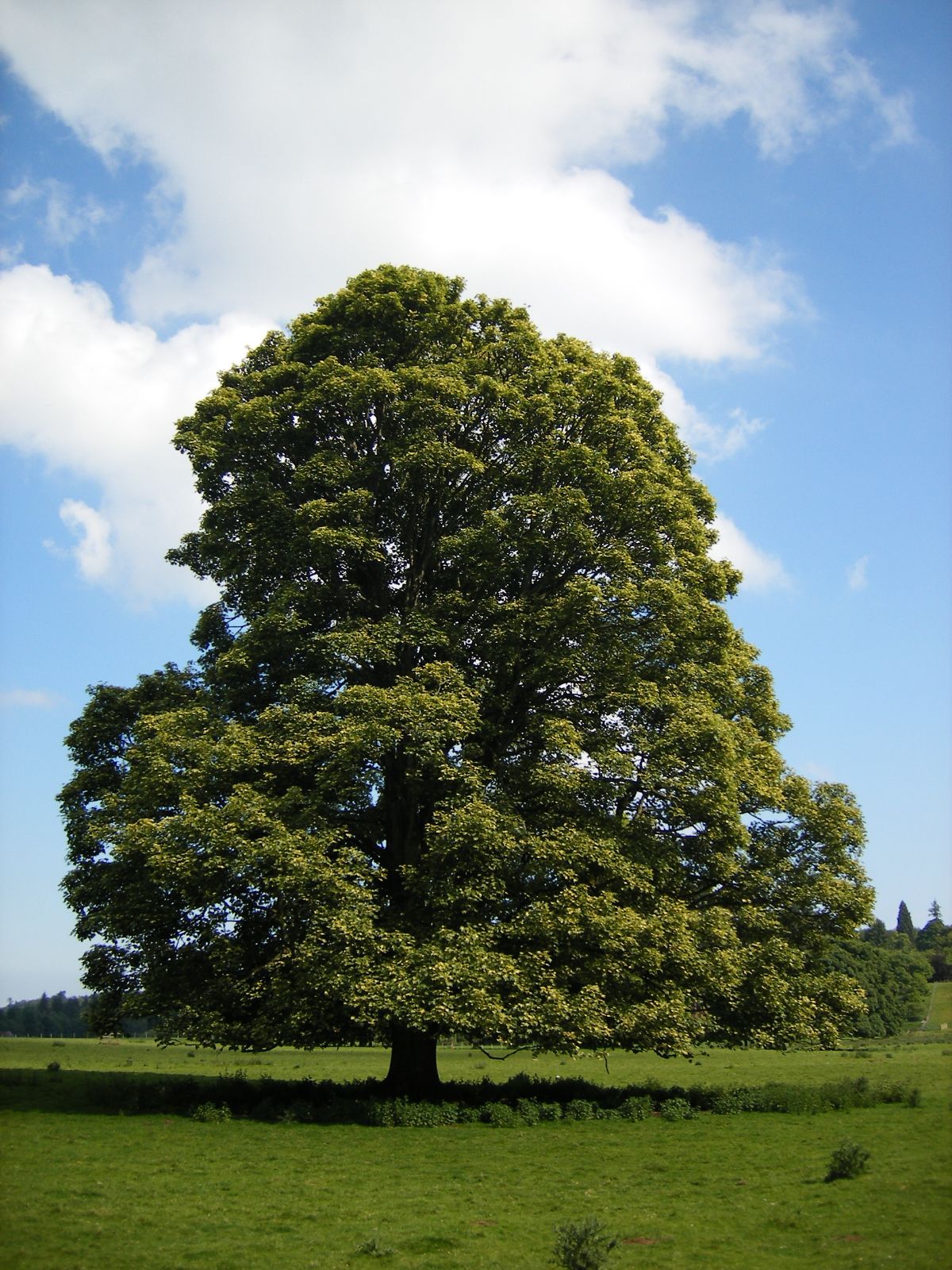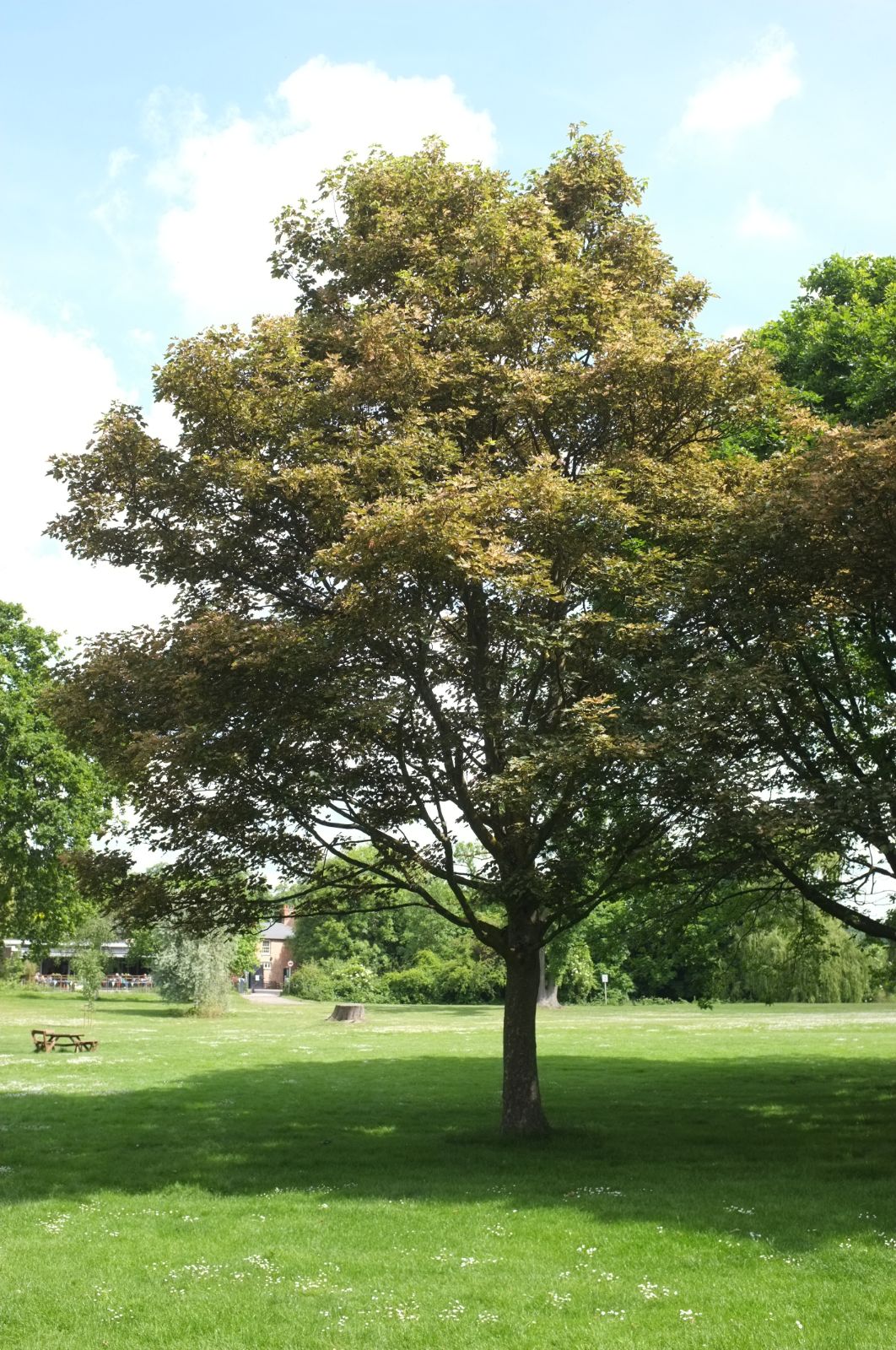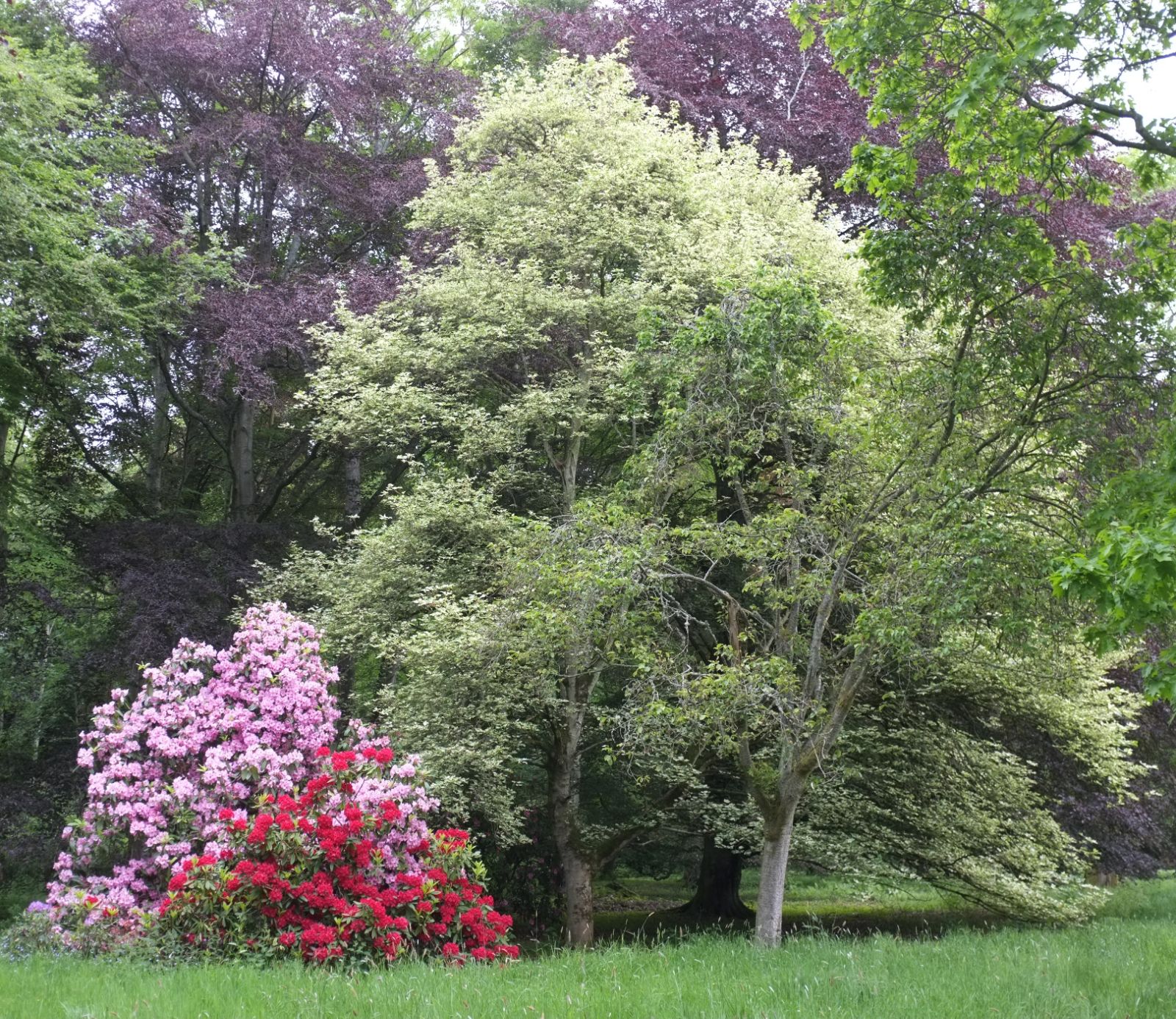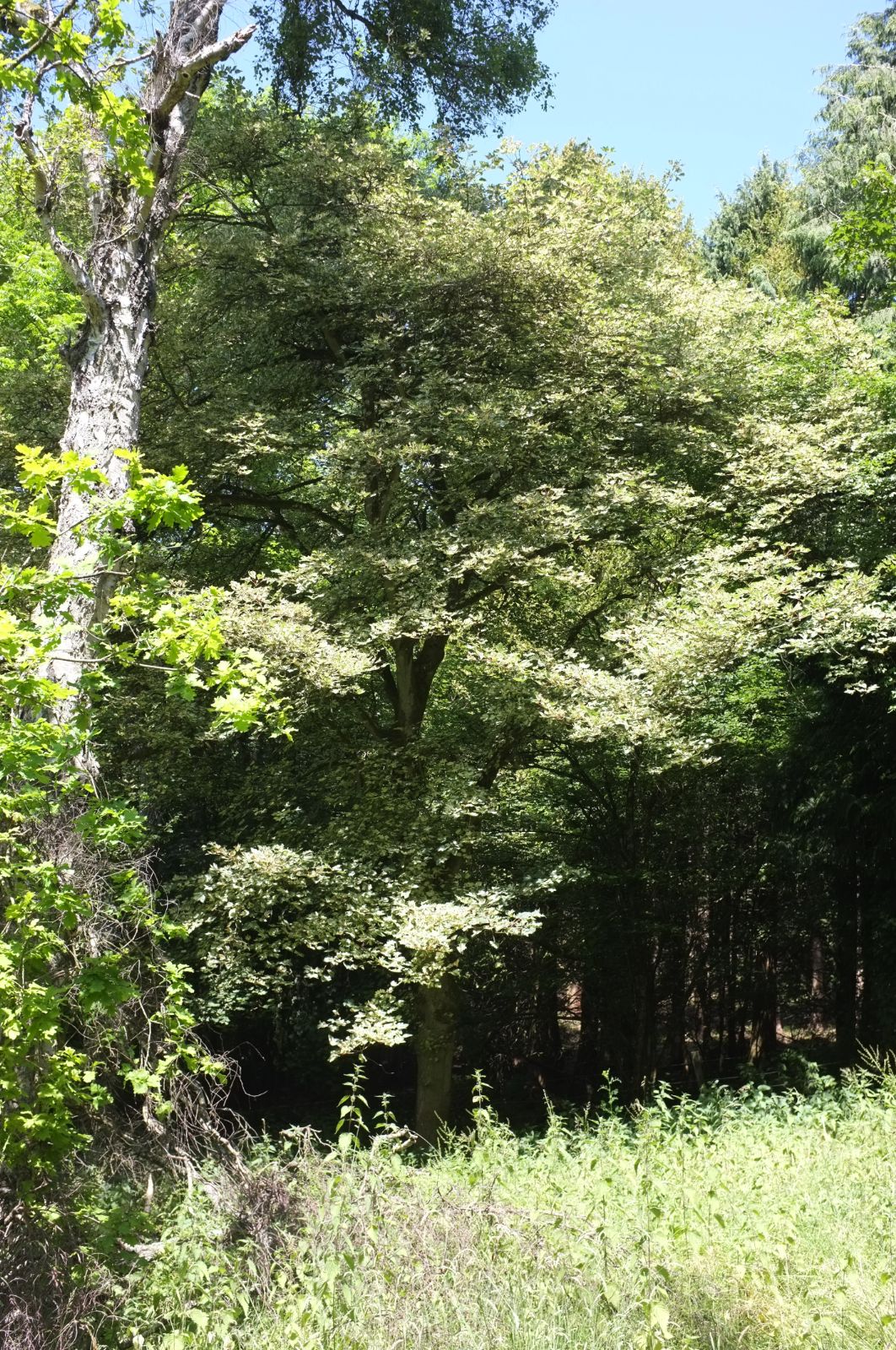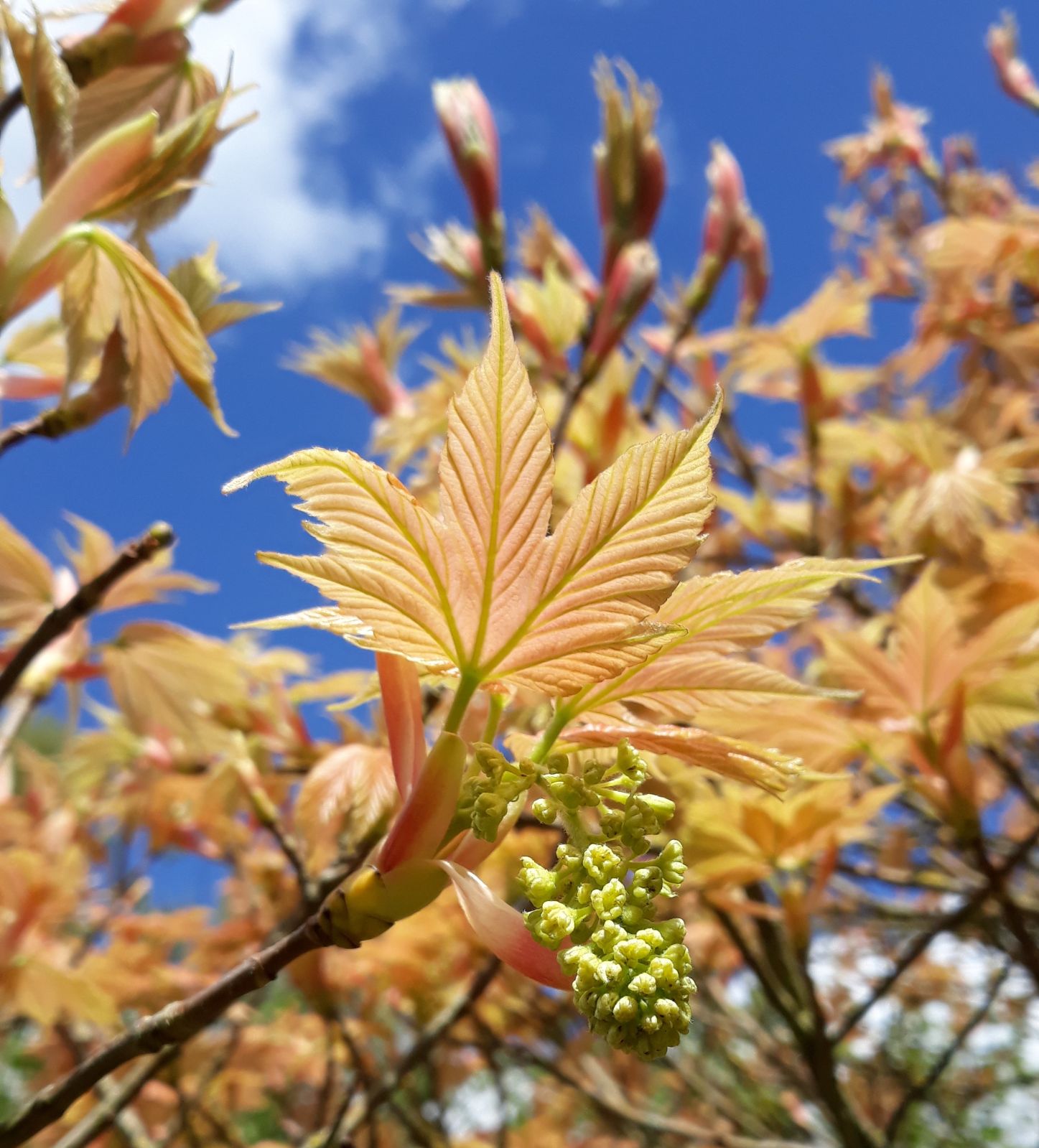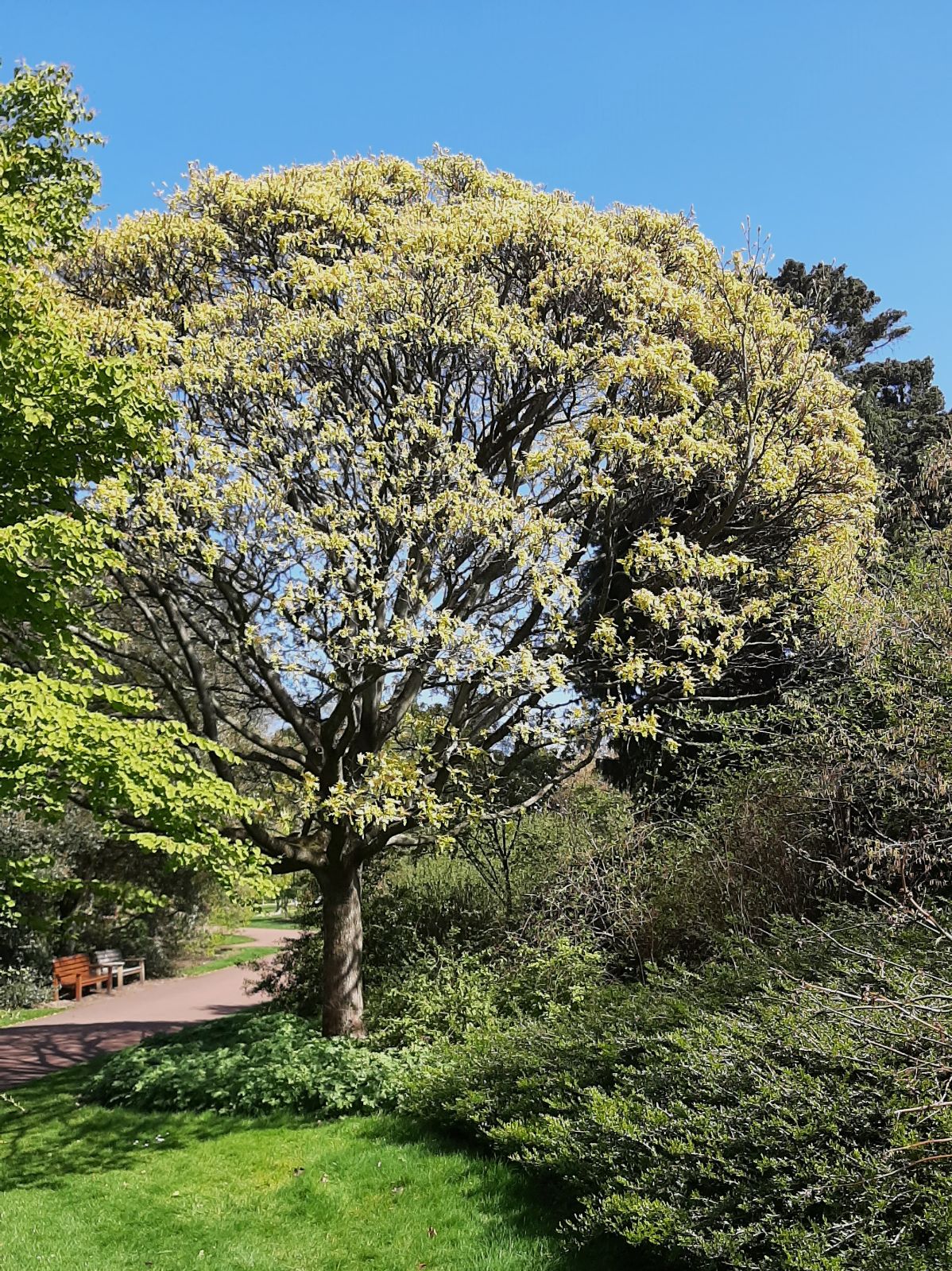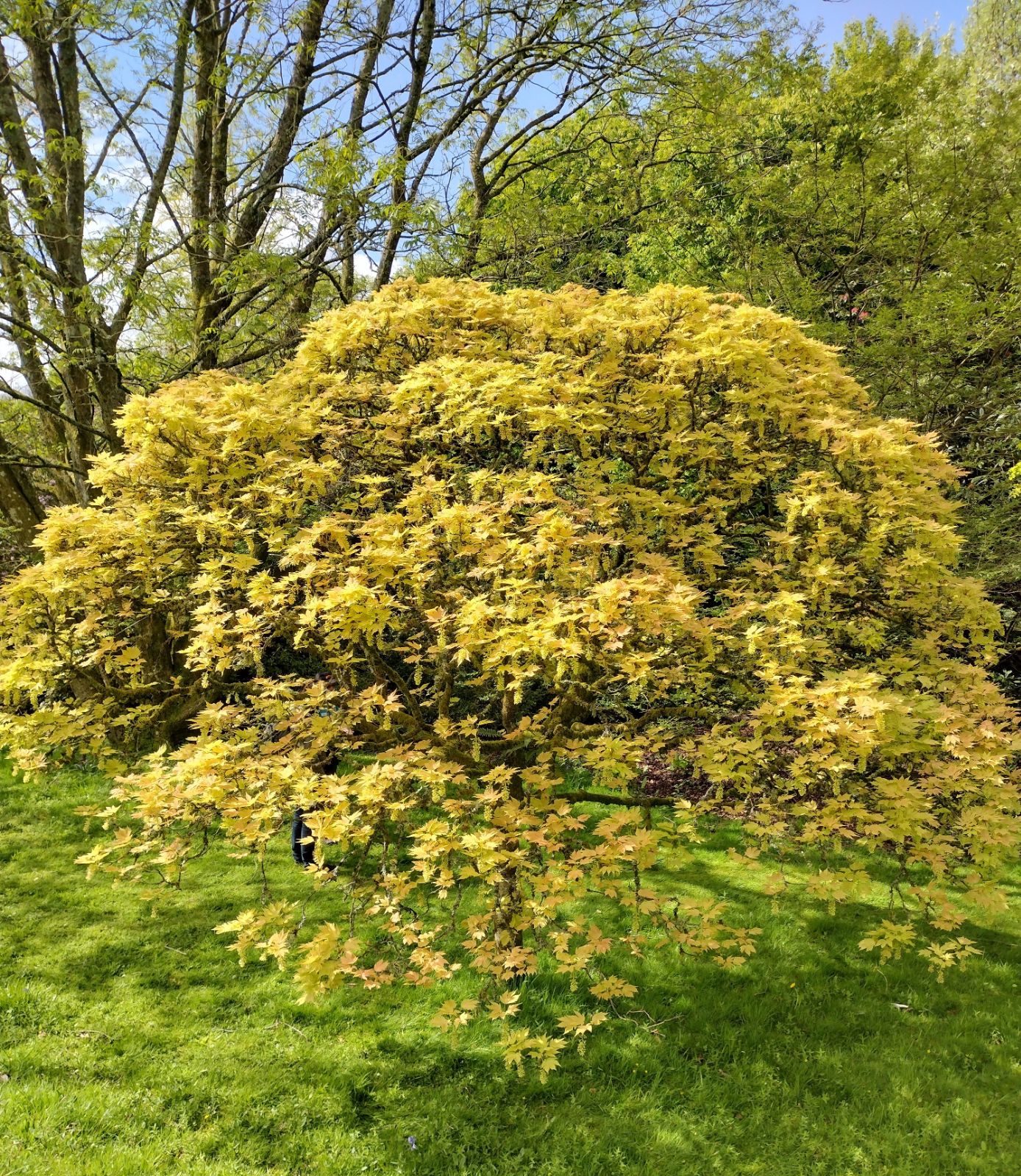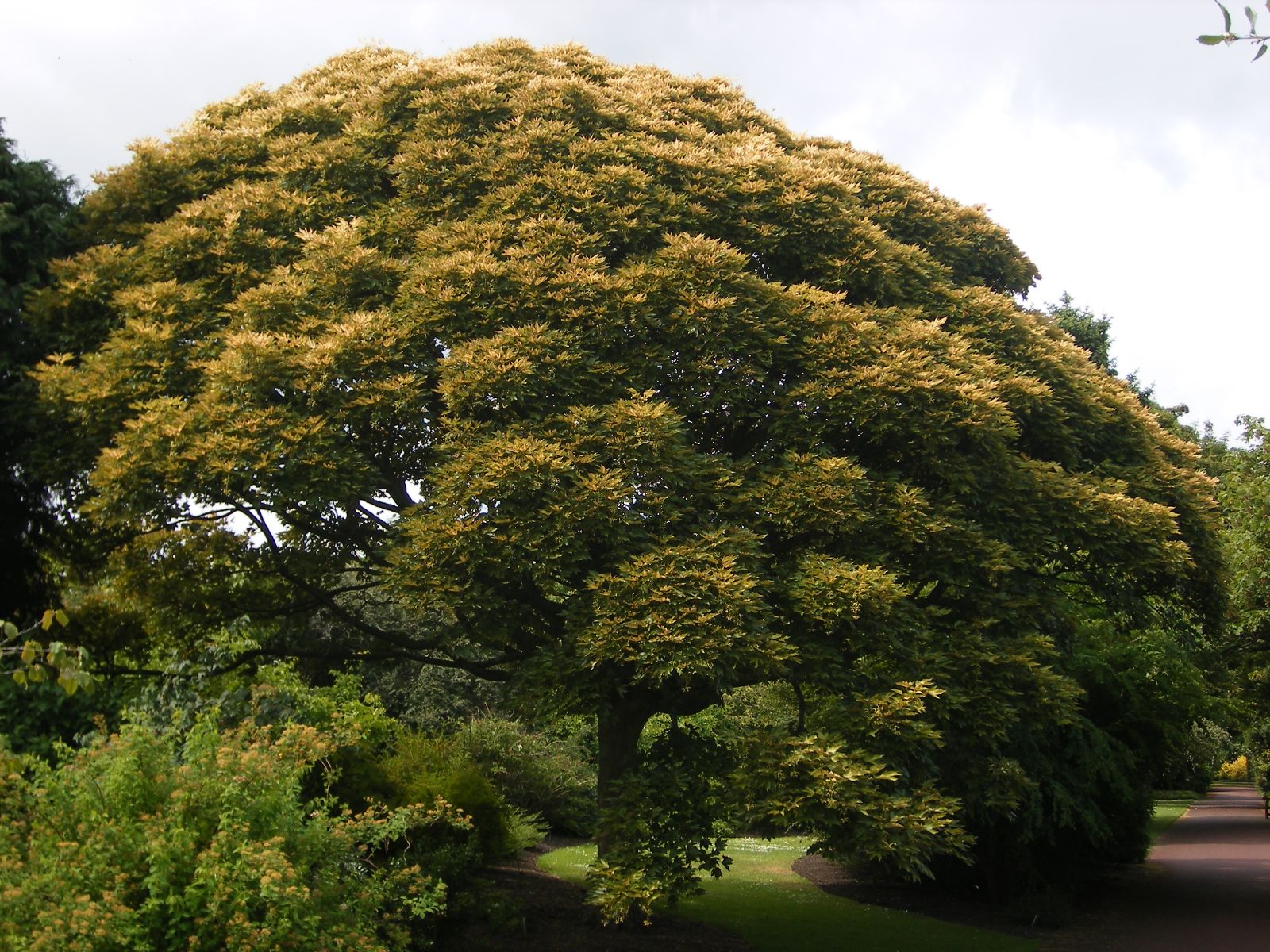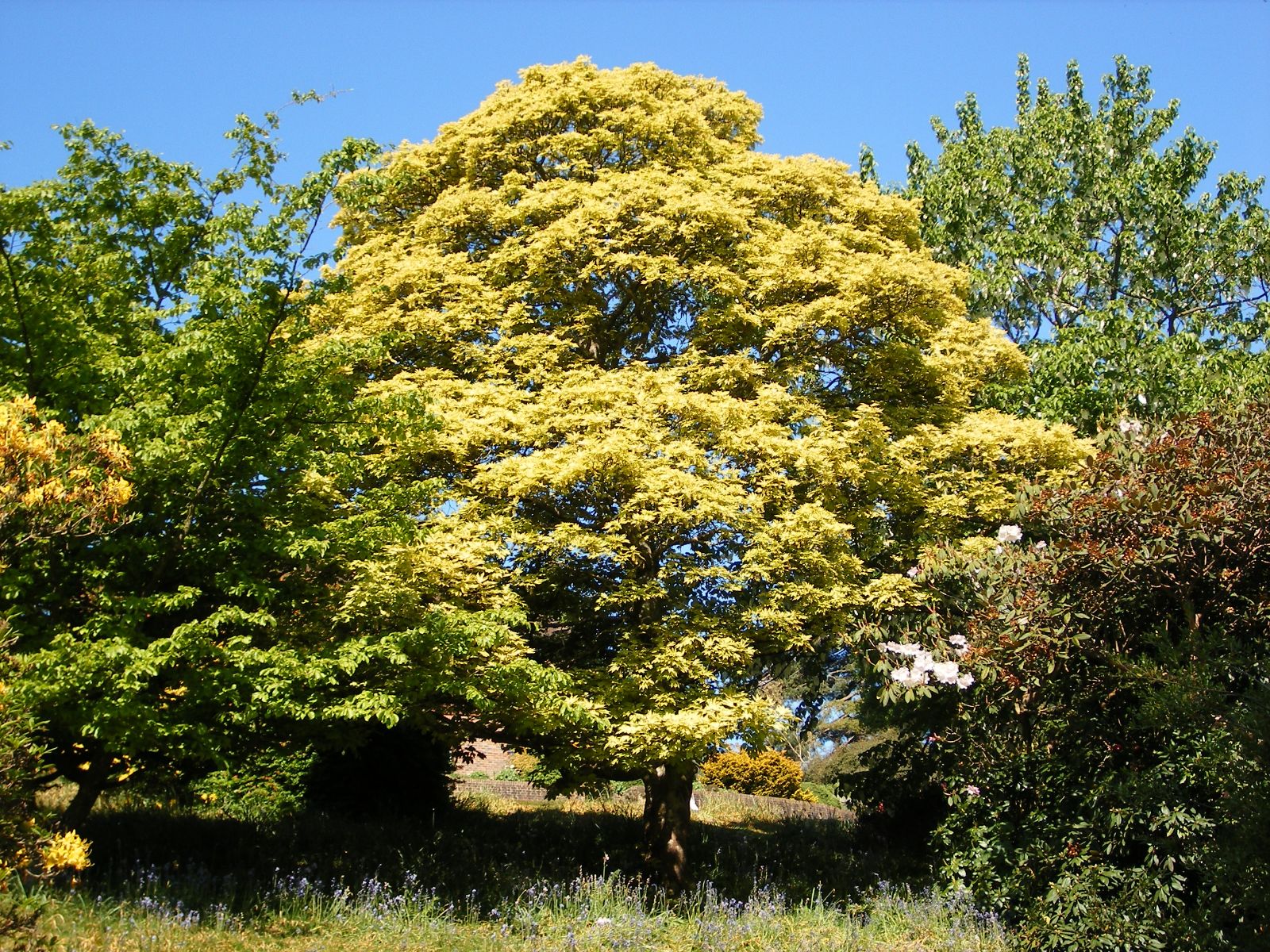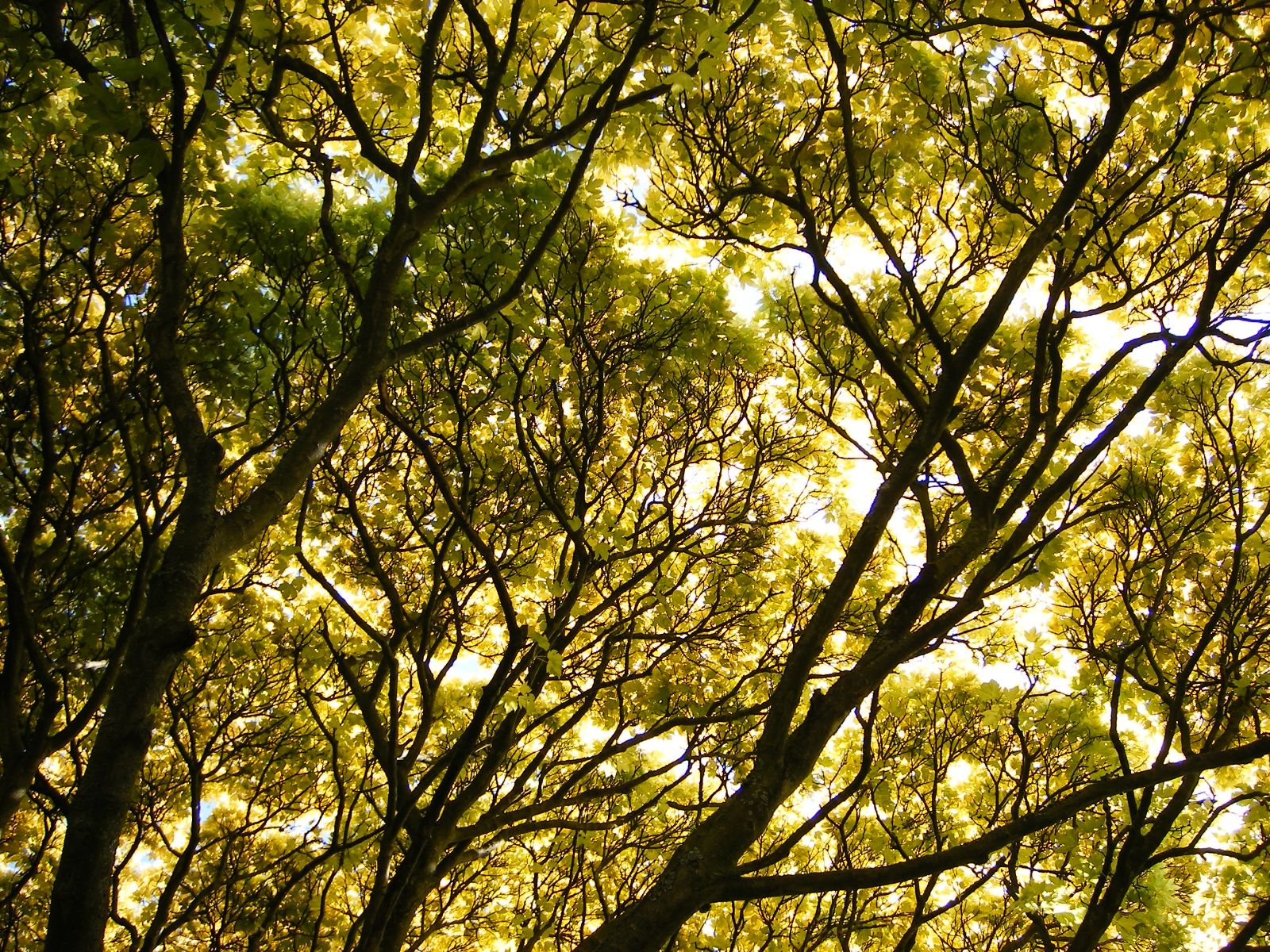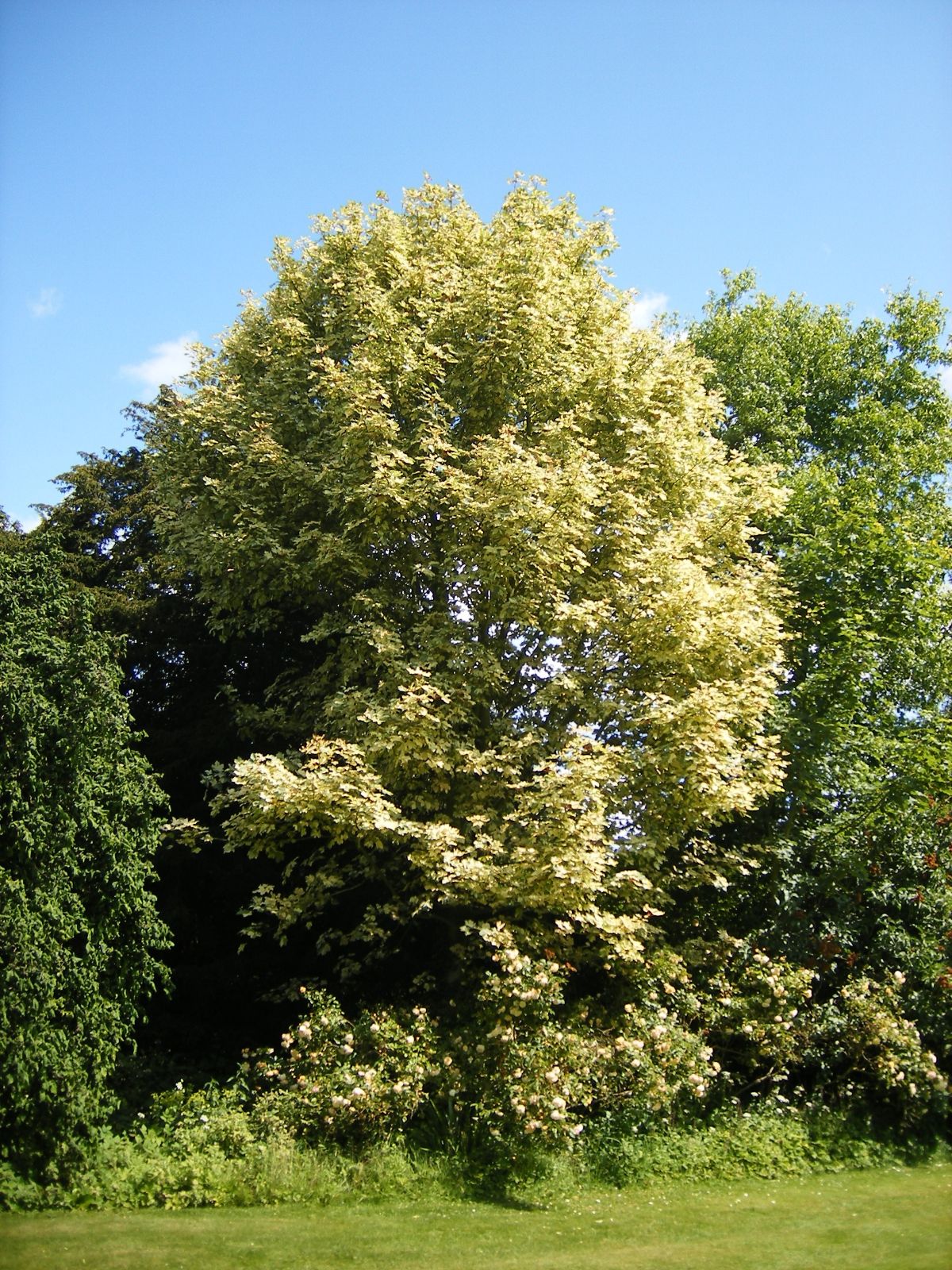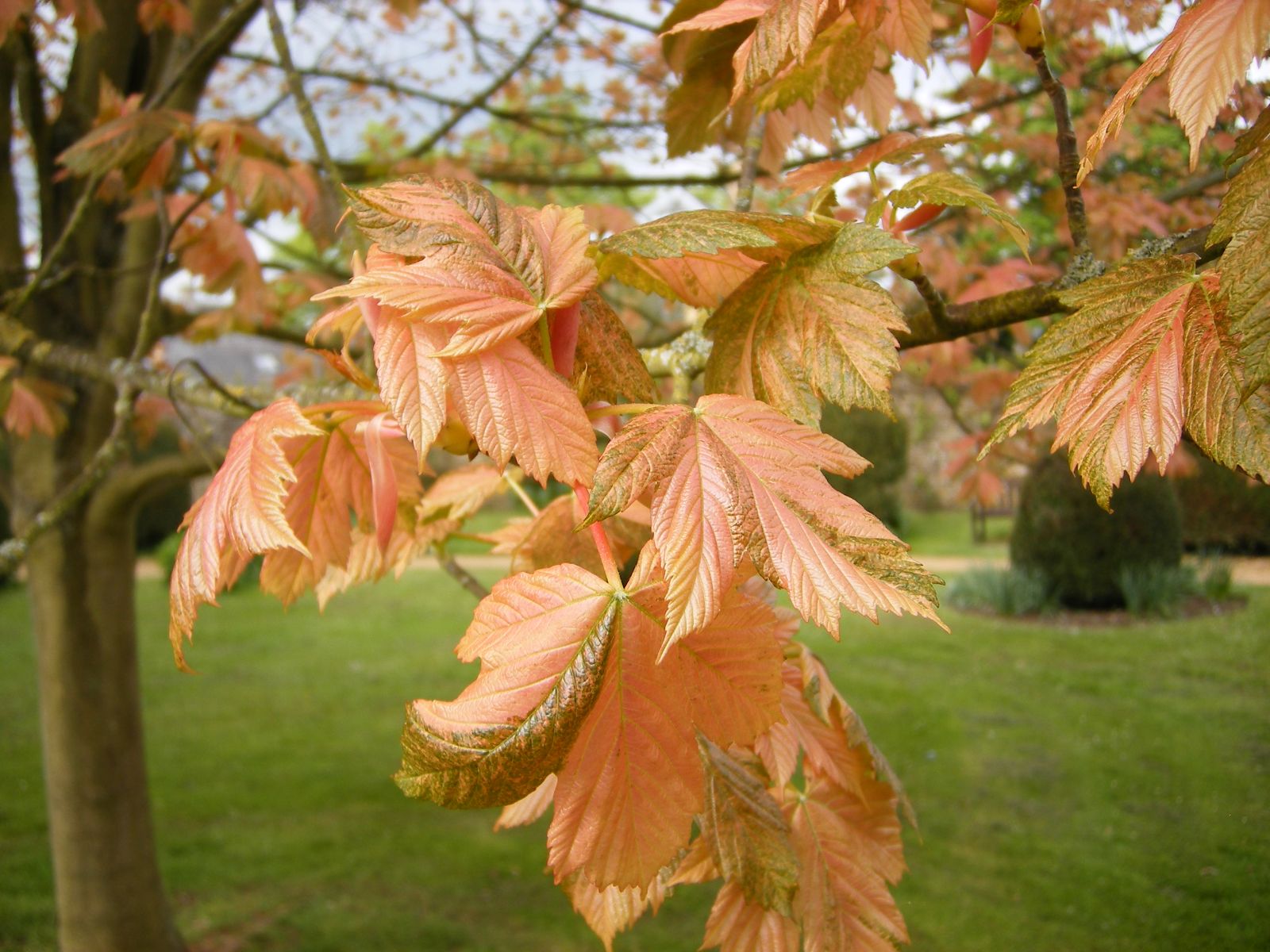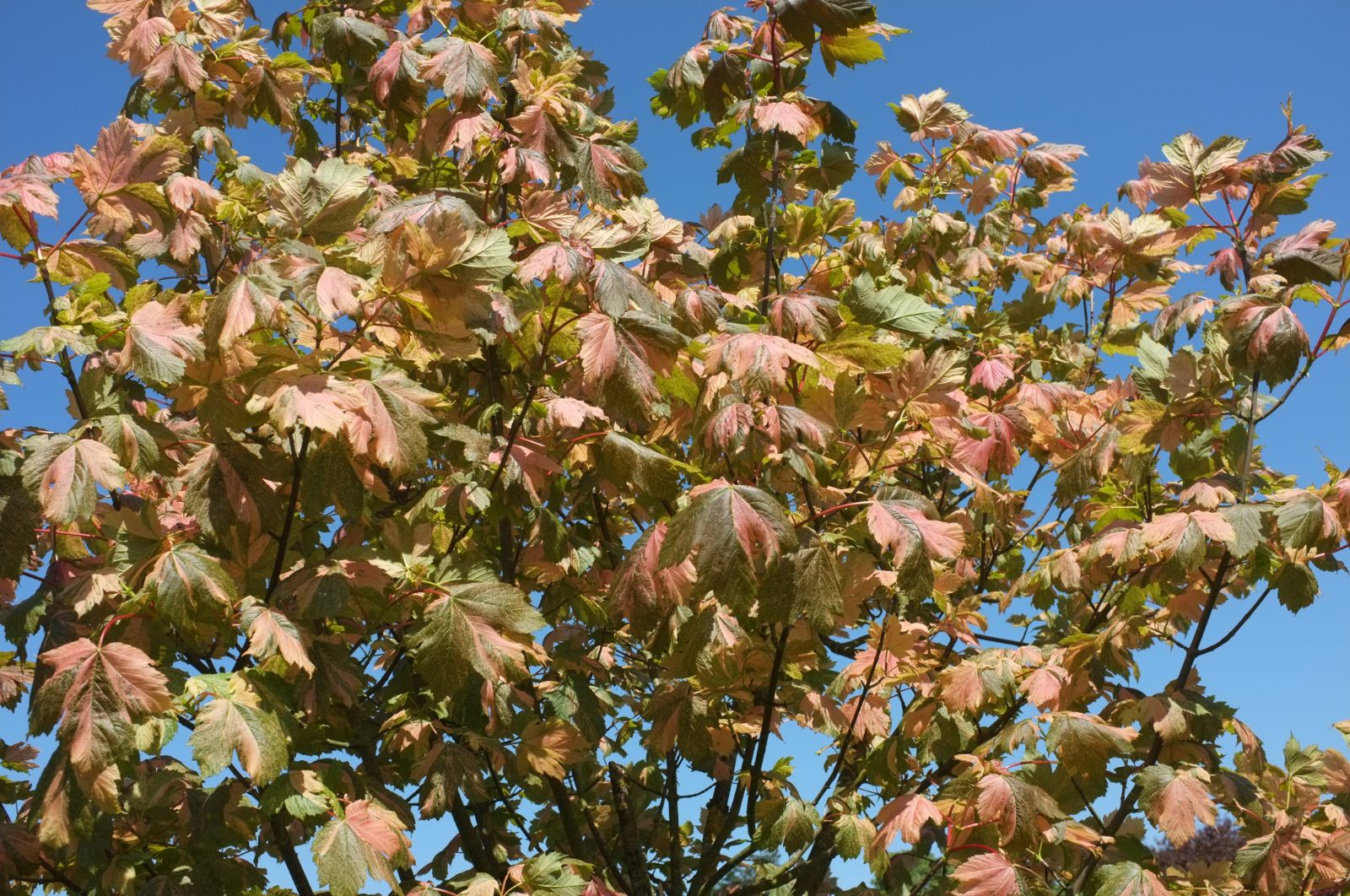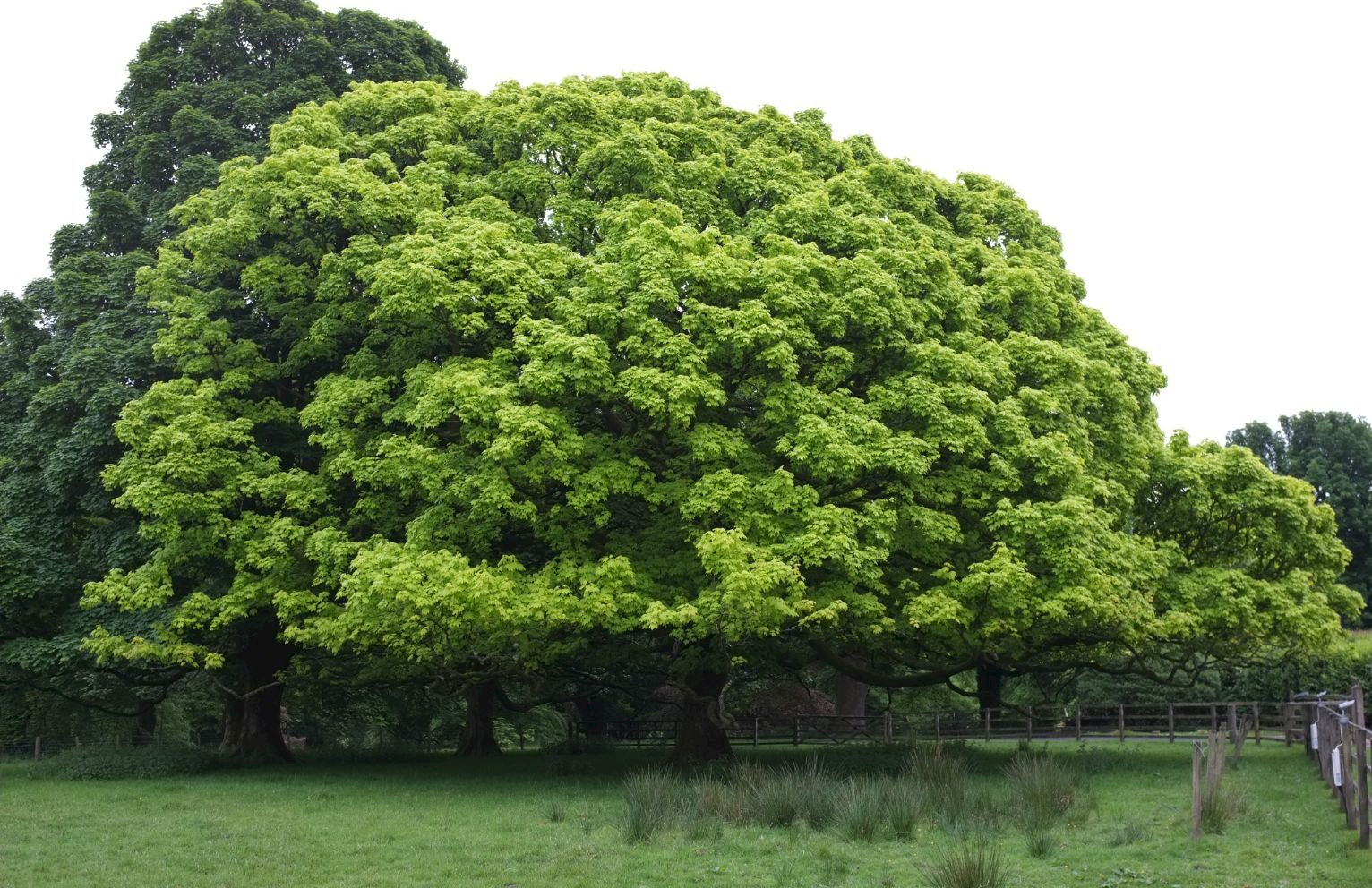Acer pseudoplatanus
Sponsor
Kindly sponsored by
The Wynkcoombe Arboretum
Credits
Dan Crowley (2020)
Recommended citation
Crowley, D. (2020), 'Acer pseudoplatanus' from the website Trees and Shrubs Online (treesandshrubsonline.
Genus
Common Names
- Sycamore
- European Sycamore
- Sycamore Maple
- Great Maple
- Gray Harewood
- English Harewood
- Scottish Plane
Infraspecifics
- 'Amry'
- 'Annae'
- 'Argutum'
- 'Atropurpureum'
- 'Aucubifolium'
- 'Bob'
- 'Brilliantissimum'
- 'Bruchem'
- 'Constant P'
- 'Corstorphinense'
- 'Cox'
- 'Crispum'
- 'Erectum'
- 'Esk Sunset'
- 'Euchlorum'
- 'Extra Fort'
- f. erythrocarpum
- f. purpureum
- f. variegatum
- 'Flavescens'
- 'Jaspideum'
- 'Kaki'
- 'Leat's Cottage'
- 'Leopoldii'
- 'Negenia'
- 'Nervosum'
- 'Nizetii'
- 'Prince Camille de Rohan'
- 'Prinz Handjery'
- Puget Pink Group
- 'Rotterdam'
- 'Simon Louis Frères'
- 'Spring Gold'
- 'Ternatum'
- 'Tricolor'
- 'Trilobatum'
- var. tomentosum
- 'Worley'
Other taxa in genus
- Acer acuminatum
- Acer amplum
- Acer argutum
- Acer barbinerve
- Acer buergerianum
- Acer caesium
- Acer calcaratum
- Acer campbellii
- Acer campestre
- Acer 'Candy Stripe'
- Acer capillipes
- Acer cappadocicum
- Acer carpinifolium
- Acer 'Cascade'
- Acer caudatum
- Acer ceriferum
- Acer chapaense
- Acer chienii
- Acer circinatum
- Acer cissifolium
- Acer × conspicuum
- Acer cordatum
- Acer coriaceifolium
- Acer × coriaceum
- Acer crataegifolium
- Acer davidii
- Acer diabolicum
- Acer distylum
- Acer divergens
- Acer duplicatoserratum
- Acer elegantulum
- Acer erianthum
- Acer 'Esk Flamingo'
- Acer fargesii
- Acer fenzelianum
- Acer flabellatum
- Acer forrestii
- Acer franchetii
- Acer × freemanii
- Acer fulvescens
- Acer 'Gimborn'
- Acer ginnala
- Acer glabrum
- Acer 'Gold Coin'
- Acer granatense
- Acer grandidentatum
- Acer griseum
- Acer heldreichii
- Acer henryi
- Acer × hillieri
- Acer hookeri
- Acer hyrcanum
- Acer japonicum
- Acer kawakamii
- Acer komarovii
- Acer laevigatum
- Acer laurinum
- Acer laxiflorum
- Acer lobelii
- Acer longipes
- Acer macrophyllum
- Acer mandshuricum
- Acer maximowiczianum
- Acer maximowiczii
- Acer metcalfii
- Acer miaotaiense
- Acer micranthum
- Acer 'Mindavi'
- Acer 'Minorient'
- Acer miyabei
- Acer miyabei × campestre
- Acer monspessulanum
- Acer morifolium
- Acer 'Mozart'
- Acer oblongum
- Acer obtusifolium
- Acer okamotoanum
- Acer oliverianum
- Acer opalus
- Acer orientale
- Acer palmatum
- Acer papilio
- Acer pauciflorum
- Acer pectinatum
- Acer pensylvanicum
- Acer pentaphyllum
- Acer pentapotamicum
- Acer pictum
- Acer pilosum
- Acer pinnatinervium
- Acer platanoides
- Acer platanoides × amplum
- Acer platanoides × truncatum
- Acer × pseudoheldreichii
- Acer pseudosieboldianum
- Acer pubinerve
- Acer pycnanthum
- Acer rubescens
- Acer rubrum
- Acer rufinerve
- Acer saccharinum
- Acer saccharum
- Acer sempervirens
- Acer 'Serpentine'
- Acer serrulatum
- Acer shenkanense
- Acer sieboldianum
- Acer sikkimense
- Acer 'Silver Cardinal'
- Acer 'Silver Ghost'
- Acer sinense
- Acer sinopurpurascens
- Acer spicatum
- Acer stachyophyllum
- Acer taronense
- Acer tataricum
- Acer tegmentosum
- Acer tenellum
- Acer tetramerum
- Acer tibetense
- Acer tonkinense
- Acer triflorum
- Acer truncatum
- Acer tschonoskii
- Acer turkestanicum
- Acer tutcheri
- Acer ukurunduense
- Acer velutinum
- Acer wardii
- Acer 'White Tigress'
- Acer wilsonii
- Acer × zoeschense
A deciduous tree to 35 m or more in the wild. Bark grey, turning pale brown and broadly plated, peeling, occasionally in longitudinal strips, with age. Branchlets glabrous, purplish-red to brown. Buds ovoid, with 5 to 10 pairs of imbricate scales, green, sometimes tipped red. Leaves chartaceous, broadly pentagonal in outline, base cordate, (3–) 5-lobed, 6–20 × 6–23 cm, lobes ovate, lateral lobes spreading, basal lobes smaller, apex acute to acuminate, margins coarsely serrate, upper surface dark green, lower surface paler, pubescent or not, often along veins but soon glabrous; petiole 6–20 (–30) cm long, green or red, faintly grooved and broadening towards the base; autumn colours yellow to brown. Inflorescence terminal, narrow racemose–paniculate, glabrous, pendulous, 25–150 flowered, 10–25 cm long. Flowers yellowish-green, 5-merous, sepals and petals oblong, stamens 8, inserted inside the nectar disc. Samaras to 4.5 cm long, wings spreading at acute angles or more broadly; nutlets spherical. Flowering from May to June, after the leaves, fruiting in October. (van Gelderen et al. 1994; Güemes Heras & Sánchez Gómez 2015).
Distribution Albania Andorra Austria Azerbaijan Bosnia and Herzegovina Bulgaria Croatia Czechia France Georgia Germany Greece Hungary Italy Liechtenstein Luxembourg North Macedonia Moldova Montenegro Poland Portugal Romania Russia Serbia Slovakia Slovenia Spain Switzerland Turkey Ukraine
Habitat Mixed deciduous forests between 700 and 2000 m asl.
USDA Hardiness Zone 3-4
RHS Hardiness Rating H7
Conservation status Least concern (LC)
The most common European species of maple and designated as the type species of the genus by Linnaeus, Acer pseudoplatanus is primarily a mountain species, often growing on calcaerous substrates and, in central Europe, often in Fagus sylvatica forests (Binggeli 1994). It also grows in valleys and along streams, though avoiding the wettest soils. In different areas it is found with an eclectic mix of species, growing in the subalpine zone in Corsica with Abies alba, at lower elevations in the Balkans with Alnus glutinosa or Aesculus hippocastanum and Juglans regia, and in ravine forests of Bulgaria with Fagus orientalis and Rhododendron ponticum (Binggeli 1994). It is certainly an opportunistic species, operating as a pioneer at least in part, while also proving long-lived in many situations. It is one of the most important trees in northern and upland Britain, forming noble broad-crowned trees of huge significance and importance in the landscape, and will be an essential replacement for Fraxinus excelsior in such areas.
Given its broad ecological amplitude, it is unsurprising that it fares very well in many regions outside its native range. Indeed, whether it may or may not be native to Britain has been the source of much debate, though as Johnson (2015) states, its status can neither be proved or disproved. Considering the pollen record, being largely insect pollinated and avoiding wetter areas, the absence of Acer pseudoplatanus pollen from lake deposits is hardly surprising, though maple pollen does not preserve well anyway, while that of A. pseudoplatanus is reportedly indistinguishable from that of A. campestre (Green 2005). Green (2005) speculates that A. pseudoplatanus might be a component of the British flora, and that during the warmer periods of the Holocene it might have retreated to cooler, mountainous areas, where it now predominantly occurs in mainland Europe, hence the long history of its presence in the north and west of Britain. It certainly supports a wealth of wildlife and is also quick to establish itself where it can, particularly in the southeast, where it is described by Johnson (2015) as forming ‘evil empires of fast-growing seedlings in woods and scrubs on chalk and heavy clay’, behaving rather in the manner of an invasive, especially where the habitat is already disturbed. It is ironic that efforts to remove it often lead to much enhanced conditions for its regeneration (Savill 2019). It does not compete well with grass though, and generally does not invade grasslands (Savill 2019). The late Dr Peter Savill, a great forestry authority, concluded that ‘It is is no way the ecological menace that some suggest.’
Johnson (2015) also asserts that while the species is long-lived, even the oldest trees don’t pre-date the age of ornamental planting. Mitchell (1996) doesn’t consider it native, though disagrees with the suggestion that the species could have been introduced by the Romans, citing its inedible nature and that its timber is no better than that of A. campestre, preferring the idea that it was introduced at a time when France and Scotland had close links. Mitchell (1996) postulates that a specimen at Newbattle Abbey near Edinburgh, planted during the Reformation, suggests a date of introduction of around 1550. van Gelderen et al. (1994) suggest that the oldest tree would have been one at Kippenross, near Dunblane (current status uncertain), which was ‘well over 500 years old’. An unconfirmed report suggests that the tree known as the ‘Birnam Sycamore’ in Birnam, Scotland, may be over 1000 years old (van Gelderen et al. 1994). If true this would change things rather, while the accurate representation of the foliage of A. pseudoplatanus on the shrine of St Frideswide, in Christ Church Cathedral, Oxford, dating from 1289, raises questions as to how the species was known by the artist. Johnson (2015) suggests that it may have been grown in the garden of the monastery, but it could also have been that the carver was familiar with the tree in continental Europe. Whenever, and however it got to Britain it is now the most widely distributed of all trees, occurring in almost every part of the country, including Shetland, where it is the only successful deciduous tree (Stace & Crawley 2015).
Details of the species’ introduction to North America is rather less disputed, though not quite precise, with its arrival thought to have have been in 1803 or 1804 and ‘possibly’ by Christopher Gore (Spongberg 1990; van Gelderen et al. 1994). Spongberg (1990) suggests that he may have brought it back to the United States from London while working for Thomas Jefferson’s administration and based in London. Now common in North America, its tolerance of exposure and adaptability to any soil type is valued, though it rarely performs to its European best (Dirr & Warren 2019). In Vancouver, as in many places in the temperate world, the species seeds prolifically and can invade open areas (Justice, in prep). It also attracts aphids and thus is not ideal for use as a street tree, though it is often used as such in Europe.
The species is impressively tolerant of exposed sites, including maritime conditions. Windblown, heavily stunted trees, often make valuable windbreaks along parts of the British coastline and in many places form the all important first line of defence against salt-laden sea winds. This resistance is all the more interesting given that it is not accustomed to these conditions within its accepted native range. Trees of similar stature are also a familiar site in the various wind-swept uplands of the UK and Ireland, often providing the only meaningful cover around dwellings high up in areas such as the Peak District and the Yorkshire Moors. Sycamore timber is valuable, being hard and strong but easily worked, with many uses including as good firewood. Its pale colour and freedom from odour enhances this value, and for centuries it has been used as the timber of choice for making domestic utensils such as cutting boards, plates and bowls – known as ‘treen’ to collectors – and recent research suggests it has high levels of antibacterial and antiviral properties (Park & Cliver 1997, quoted in Savill (2019). Wavy-grained timber is rare but particularly valuable, and is used for veneers and musical instruments, especially violins (Savill 2019). It was also much used in the 19th century in the manufacture of small objects, often made as souvenirs, known as Mauchline ware from the area of Scotland where they were mostly produced. The light Sycamore wood was often decorated by a transfer print of a local scene or personality (for example, Robert Burns), ferns or other foliage, or tartan patterns (Mauchline Ware Collectors Club 2020).
A. pseudoplatanus is susceptible to sooty bark disease, caused by the fungus Cryptostoma corticale, and diamond bark disease canker, caused by another fungus Dichomera saubinettii, both of which can prove fatal in periods of hot, exessively dry weather (Green 2005). It is also host to sycamore tar spot, Rhytisma acerinum, which causes black splotches on the leaves. Largely a cosmetic problem, it is more prevalent outside of towns rather than in urban areas, where the common removal of leaf litter takes with it the possibility of overwintering beneath trees. Grey Squirrels (Sciurus caroliniensis) are extremely damaging to younger trees or coppice regeneration and now preclude its successful establishment as a timber tree in much of Britain (Savill 2019).
Acer pseudoplatanus is tremendously variable, though many minor variants decribed under botanical names are no longer considered worthy of recognition and have long been sunk into synonymy (van Gelderen et al. (1994). Some forms are still recognised as useful portmanteaux for accomodating variants falling into their delimitation (for example, f. erythrocarpum, f. purpureum, f. variegatum) all of which can be found in wild and naturalised populations, though they are of negligible botanical significance. Selected seedlings should always be given a cultivar name in accordance with the horticultural code of nomenclature – if really worthy of recognition! Selections with good form have often been made for utility purposes, especially in continental Europe where it is planted as a street tree, but the majority of cultivated clones are grown for their leaf coloration. Some of these are remarkable additions to the garden and park, but many others (especially those selected in the 19th century for minor leaf form variations) have lapsed into well-deserved obscurity, while others such as ‘Albertii’ (1892) with orange to yellow leaves variegated with white (van Gelderen et al. (1994) are now known from single specimens, in this case a 14 m tree at Glasnevin (Tree Register 2020). A comprehensive list is provided by van Gelderen et al. (1994). The presence of a graft union is useful to distinguish between cultivars and naturally occurring seedlings. A drive through the British countryside in late spring will demonstrate the great variability of colours in the spring flush of Acer pseudoplatanus, especially where it forms stools in hedgerows; many such, especially those with rich copper- and red-toned foliage, have no representatives in the list of cultivars, but are at least as ornamental as many named clones.
As well as a hybrid with A. heldreichii (A. × pseudoheldreichii), A. pseudoplatanus is known to cross with A. opalus where the two overlap in the wild. So-called A. × hybridum, listed by van Gelderen et al. (1994, p. 247) as A. opalus × pseudoplatanus or A. opalus × monspessulanum, though ‘possibly nothing but an odd expression of A. pseudoplatanus’ is noted by de Jong (2011) in his account of maple hybrids as possibly A. pseudoplatanus and ignored thereafter. The same applies to A. × ramosum, listed as A. campestre × pseudoplatanus by van Gelderen et al. (1994), though ‘parentage uncertain’ (p. 248). Neither are treated here. A. pseudoplatanus is a useful rootstock for grafting other Acer species, even those belonging to different sections of the genus, when a closer relative is not available (le Hardÿ de Beaulieu 2003).
Several of Britain’s iconic trees belong to A. pseudoplatanus, including that of Sycamore Gap, along Hadrian’s Wall, and the Tolpuddle Martyrs tree, Dorset, where a group of agricultural workers swore an oath as part of their formation of a union, an act that saw them sentenced to seven years penal labour in Australia, though they were pardoned following public protests (National Trust 2019). Europe’s largest example, growing in the woods at Wamberg, Bavaria, was measured at more than 2.8 m dbh in 2019 (monumentaltrees.com 2018).
'Amry'
RHS Hardiness Rating: H7
Named in 1894, ‘Amry’ has a rather erect form suited to use as a street tree. It was selected as a chance seedling at the Forestry Research Station of De Dorschkamp, the Netherlands (van Gelderen et al. 1994).
'Annae'
RHS Hardiness Rating: H7
Very rare in cultivation and no longer available, ‘Annae’ is a German selection named by Schwerin in 1893 (van Gelderen et al. 1994). Its leaves emerge dark brown, stained with dark red spots, which turn to pink and white as the leaves turn green (van Gelderen et al. 1994).
'Argutum'
RHS Hardiness Rating: H7
Named by Schwerin in 1893, ‘Argutum’ has pale green leaves with serrate margins similar to those of A. rubrum (van Gelderen et al. 1994).
'Atropurpureum'
Synonyms / alternative names
Acer pseudoplatanus 'Purpureum Spaethii'
Acer pseudoplatanus 'Spaethii'
Awards
Award of Garden Merit
RHS Hardiness Rating: H7
Described by Groinland in 1862 and introduced by Späth’s nurseries, Germany in 1883, ‘Atropurpureum’ has dark green leaves that are strikingly purple beneath (van Gelderen et al. 1994; van Gelderen & van Gelderen 1999). It reached North American cultivation in around 1897, and has been available commercially there since around 1930 (Jacobson 1996). ‘Atropurpureum’ is also commonly grown under the name ‘Spaethii’, and occasionally ‘Purpureum Spaethii’, both invalid synonyms (van Gelderen et al. 1994). ‘Extra Fort’ is an obscure Belgian clone of this ilk, named in 1867, with leaves with purple lower surfaces (van Gelderen et al. 1994); it is possibly extinct.
‘Atropurpureum’ seedlings may also bear purple leaf undersides, but these are almost never such a strong colour as in the parent. Similar, though invariably less distinct forms occur in the wild and are referrable to f. purpureum. ‘Atropurpureum’ should be propagated vegetatively to avoid the washed-out look of most seedlings. Grown in some parts as a street tree, it is striking in the landscape, planted both as single trees and in groups in parkland settings. Groups of five, planted at five metre spacings from one another work very well, and examples of group and individual plantings of more than a century old can be seen at Westonbirt Arboretum, Gloucestershire, UK. It achieves similar sizes to normal sycamores, however, so thinning will be desirable as groups develop.
'Aucubifolium'
RHS Hardiness Rating: H7
A green-leaved form with leaves dotted golden throughout, appearing somewhat similar in this respect to the commonly cultivated form of Aucuba japonica. It arose among seedlings at Little and Ballantyne nurseries, Carlisle, around 1876 and was described by Nicholson in 1881 (Bean 1976a; van Gelderen et al. 1994). ‘Bicolor’ was a similar selection, named five years previously by Späth, though now unknown (van Gelderen et al. 1994).
'Bob'
RHS Hardiness Rating: H7
Originating in Belgium and in the trade since 1985, ‘Bob’ has leaves that emerge pink, with yellow variegation later on, with purplish lower surfaces (i.e. Hardÿ de Beaulieu 2003).
'Brilliantissimum'
Awards
Award of Merit; Award of Garden Merit; First Class Certificate
RHS Hardiness Rating: H7
‘Brilliantissimum’ has been cultivated in Europe since 1905 and North America since 1927 (Jacobson 1996). It is undoubtedly at its best in spring, the most dramatically coloured of all the leaf variants; the foliage emerges a show-stealing salmon pink to orange, but it eventually fades to a rather pallid and sickly-looking green. It is slow growing, eventually making a small tree with a rounded crown (Jacobson 1996; Dirr & Warren 2019). Somewhat prone to sunburn (van Gelderen et al. 1994), Dirr & Warren (2019, p. 99) describe it as ‘an absolute knockout in early spring’. It is comparable to ‘Prinz Handjery’, though rarely so large.
'Bruchem'
RHS Hardiness Rating: H7
A Dutch selection named in 1984, ‘Bruchem’ is a form with erect branches, forming a slender crown to 20 m tall. It was selected as a chance seedling from a wood near Bruchem, the Netherlands. It is suited to use as a street tree (van Gelderen et al. 1994).
'Constant P'
RHS Hardiness Rating: H7
A clone with a narrow, irregular crown to 20 m tall, ‘Constant P’ was found in Bruchem, the Netherlands and named for C.P. van Goor, Assisant Director of the Research Station for Forestry, De Dorschkamp (van Gelderen et al. 1994).
'Corstorphinense'
Synonyms / alternative names
Acer pseudoplatanus 'Lutescens Novum'
Acer pseudoplatanus 'Scoticum'
RHS Hardiness Rating: H7
One of several yellow-leaved Sycamores, Acer pseudoplatanus ‘Corstorphinense’ was described by Sutherland in 1883 and named after the suburb of Edinburgh where the original tree grew. Its young leaves emerge yellow in spring, slightly sooner than is typical for the species, gradually turning pale green later on. It has no autumn colour of note but drops its leaves somewhat earlier than other selections (le Hardÿ de Beaulieu 2003). It also seems not to grow so large as the typical species (T. Christian, pers. comm. 2020). It makes a fine parkland tree, as observable at Westonbirt Arboretum, Gloucestershire, and it remains a common sight in parks and large gardens in the city of Edinburgh where, curiously, it is represented only by older trees (T. Christian, pers. comm. 2020). In the late 1990s some young trees were propagated and planted individually in sites across Scotland. Several of this vintage were apparently sent to Gorhambury, Hertfordshire (A. Dickson, pers. comm. to T. Christian 2020).
The original Corstorphine sycamore was reputedly one of Edinburgh’s finest living landmarks for centuries. It was thought to have been planted in around 1600, perhaps as part of an avenue that led to Corstorphine Castle, where it persisted until 2005, having been heavily reduced at 8:10 p.m. on Boxing Day 1998 in a gale. In between times it saw the murder of the second Lord Forrester, James Baillie, on 26th August 1679, killed with his own sword by his lover, Christian Nimmo, who also happened to be his wife’s sister! She was later executed for the deed and their ghosts were said to haunt the tree. Lord Forrester is thought to have buried treasure beneath the tree and it was presumably the voice of his ghost that, legend has it, warned villagers to stop digging for it. Artefacts made from the timber of the tree include a violin made by renowned maker Colin Adamson (Rodger et al. 2006; Edwards & Marshall 2019).
‘Corstorphinense’ can be confused with ‘Worley’, the other most frequently planted yellow-foliaged cultivar. Distinguishing them has never been easy but Owen Johnson (pers. comm. 2020) has kindly sent the following comments:
‘“Corstorphinense” is bright lemon yellow for a couple of weeks as the leaves flush, and then becomes a normal-looking sycamore in terms of leaf-shape and colour and growth and habit. A vigorous young one would have yellow growth-tips but the clone is nearly always seen as an old tree, with just a dusting of yellow-green perceptible across the top of the crown in early summer. It could be that a few of the biggest and oldest trees with these characteristics are independent sports.
“Worley” has noticeably small leaves with narrower, triangular lobes and grows rather slowly into a quite neat dome. It is golden through spring with the newer leaves still yellow(ish) through summer.’
'Cox'
Synonyms / alternative names
Lustre®
RHS Hardiness Rating: H7
A budded selection ‘offering uniformity’ listed by Carlton nursery of California and Oregon in 1993–1994, without additional information (Jacobson 1996).
'Crispum'
RHS Hardiness Rating: H7
Named by Schwerin in 1893, ‘Crispum’ has crisped, asymmetric leaves with pale yellow veins (van Gelderen et al. 1994).
'Erectum'
Synonyms / alternative names
Acer pseudoplatanus 'Fastigiatum'
Acer pseudoplatanus 'Nachtegaalplein'
Acer pseudoplatanus 'Pyramidalis'
RHS Hardiness Rating: H7
A narrow tree with erect branches, ‘Erectum’ was selected and introduced by Dutch dendrologist S.G.A. Doorenbos, who noticed it in The Hague’s Nightingale Square in 1935 (Jacobson 1996), its name first appearing in the catalogue of Lombarts Nurseries, the Netherlands, in 1949 (van Gelderen et al. 1994). van Gelderen et al. (1994) advocate its use as a street tree. It was reportedly introduced to North America by Scanlons Nursery, Ohio, though van Gelderen et al. (1994) suggest that this was a different clone and that both may be in circulation in the United States under the same name. This is supported by the observation that some plants of so-called ‘Erectum’ have unfortunately developed a spreading form in maturity in North America (as have specimens at the Yorkshire Arboretum (J. Grimshaw, pers. comm. 2020)), while others have retained their upswept branched habit (Jacobson 1996). Clearly anyone prescribing this selection in North America should first satisfy themselves that they are dealing with the genuine article!
'Esk Sunset'
Synonyms / alternative names
'Eskimo Sunset'
RHS Hardiness Rating: H7
Slow growing, ‘Esk Sunset’ produces leaves that emerge pink, turning green to yellow-white, developing salmon pink streaks, speckles and blotches, while purplish beneath, making it perhaps the gaudiest of all Sycamore cultivars to date. It is prone to sun burn in North America (Dirr & Warren 2019). It was selected at Trelinnoe Park in the Esk Valley, near Napier, New Zealand, by the garden’s creator John Wills, and passed to the New Zealand nursery trade sometime in the 1990s (C. Sanders, pers. comm. 2021). ‘Eskimo Sunset’ is a derivative synonym, while ‘Esk Flamingo’ belongs in Sect. Macrantha.
'Euchlorum'
A fast-growing form with large, dark green leaves and large fruit, ‘Euchlorum’ was introduced by Späth’s nurseries in 1878 (Bean 1976a). It was first recorded in North America around 1897. The specimen at East Bergholt Place, Suffolk mentioned by Bean (1976a) and van Gelderen et al. (1994) is described as the only plant known by Jacobson (1996). Owen Johnson (pers. comm. 2020) recalls that when he ‘saw it in April 2004 the only unusual thing about it seemed that it was rather large for the microclimate (23 m, dbh 130 cm). It had been removed by 2016. I can’t remember seeing an obvious graft.’ Owen has observed other trees that may be this clone, but without labelling it is impossible to be certain of the attribution. It would seem that this clone has lapsed into obscurity.
'Extra Fort'
See under ‘Atropurpureum’.
f. erythrocarpum (Carr.) Pax
Synonyms
'Erythrocarpum'
RHS Hardiness Rating: H7
USDA Hardiness Zone: 3-4
Recorded from the Bavarian Alps in the 19th century, but likely present elsewhere, f. erythrocarpum has distinctly red fruits (Bean 1976a) that can be conspicuous and very attractive. It was also named as a cultivar, from a tree in the nursery of S. Vaillant, France, in 1727 (van Gelderen & van Gelderen 1999), and some specimens in cultiuvation may be this clone, or derivatives of it. Given its presence in nature, including not infrequently in Britain, the rank of forma is more appropriate than treating it as a cultivar. A superior clone with fruits consistently red ought to be given an unambiguous name.
f. purpureum (Loudon) Rehder
Leaves with lower surfaces more or less purple in colour (van Gelderen et al. 1994).
RHS Hardiness Rating: H7
USDA Hardiness Zone: 3-4
Though selections of so-called purple-leaved Sycamores have been made, such forms also occur in the wild in different parts of its range, including in populations whose ‘nativeness’ is disputed, such as in the United Kingdom and Ireland. If a purple-leaved form is desired ‘Atropurpureum’ should be planted.
f. variegatum (West.) Rehd
Synonyms
Acer pseudoplatanus 'Argenteovariegatum'
Acer pseudoplatanus 'Albo-variegatum'
Acer pseudoplatanus 'Rosea'
Acer pseudoplatanus 'Rubicundum'
Leaves blotched, or blotched and striped with yellow and white (Bean 1976a).
RHS Hardiness Rating: H7
USDA Hardiness Zone: 3-4
Variegated forms of the species have been reported both from the wild and seedbeds since the early 18th century (van Gelderen et al. 1994). Plants sold by nurseries in the late 18th and early 19th centuries under names including ‘albo-variegatum’ ‘foliis variegatis’ and ‘variegatum’ are thought to have been seedlings that arose in cultivation (Bean 1976a). Trees attain similar dimensions to those of the typical form, and the best clones have since been named as cultivars, for example ‘Leopoldii’. Variegated seedlings frequently appear in the vicinity of cultivars such as ‘Leopoldii’ but should not be named unless they are exceptional in some way.
'Flavescens'
RHS Hardiness Rating: H7
‘Flavescens’ was named by Schwerin in 1893. It is slow growing and has dull yellow leaves (van Gelderen & van Gelderen 1999).
'Jaspideum'
RHS Hardiness Rating: H7
‘Jaspideum’ is a French selection with yellowish branches named in 1877, having been cultivated for many years prior at Arboretum Segrez. It was first offered by Dieck Nurseries, Germany in about 1895 (van Gelderen et al. 1994).
'Kaki'
RHS Hardiness Rating: H7
‘Kaki’ has foliage emerging pale green and changing colour several times in spring, with pinky-red lower surfaces (le Hardÿ de Beaulieu 2003).
'Leat's Cottage'
RHS Hardiness Rating: H7
A slow-growing form seemingly of unknown origin, ‘Leat’s Cottage’ has leaves salmon pink in spring, similar to those of ‘Brilliantissimum’ but not as strongly coloured (van Gelderen & van Gelderen 1999).
'Leopoldii'
Common Names
Synonyms / alternative names
Acer pseudoplatanus 'Variegatum'
Awards
First Class Certificate
RHS Hardiness Rating: H7
Originating in Belgium and named for King Leopold I by Vervaene in 1864, ‘Leopoldii’ is a full-sized clone with leaves that are variably pinkish-yellow when young, soon turning green with yellow and white mottling (van Gelderen et al. 1994). It was introduced to British cultivation almost immediately, receiving a First Class Certificate in 1865 (Edwards & Marshall 2019). It entered the North American nursery trade in or before 1891, and is more common there than the similar clones ‘Simon-Louis Frères’ and ‘Tricolor’ (Jacobson 1996). Seedlings should not be confused with the authentic selection. Plants sold as ‘Variegatum’ are usually this selection, listed here in synonymy.
‘Leopoldii’ is one of the few variegated trees that get large enough to have real presence in the landscape, and with its softly yellowish-green leaves can add a welcome modest variation to parkland or woodland edges without being too ‘shouty’. In the Ryedale area of North Yorkshire it was frequently planted on larger estates and is a common sight in the countryside, with often very large trees now present. A few younger ones are also to be seen (J. Grimshaw, pers. comm. 2020).
'Negenia'
RHS Hardiness Rating: H7
Selected in the Netherlands in 1948 by the Dutch Selection Service for Horticulture (van Gelderen et al. 1994), ‘Negenia’ is a vigorous grower with a conical habit and dark green, red-stalked leaves (Edwards & Marshall 2019). Tolerant of poor growing conditions, it is used a street tree in Europe (van Gelderen & van Gelderen 1999).
‘Zenith’ is another Dutch cultivar, selected for fastigiate form, but it does not grow well as a young plant and production was discontinued (van Gelderen et al. 1994). Despite this there is a 14.6 m (2017) specimen in the Sir Harold Hillier Gardens, Hampshire (Tree Register 2020).
'Nervosum'
RHS Hardiness Rating: H7
Named by Schwerin in 1893, ‘Nervosum’ is slow-growing, with a densely branched pyramidal habit. Its leaves are small and those of the first flush are yellowish-pink above, orange to pink below. Those of the second flush are typically coloured for the species (van Gelderen et al. 1994).
'Nizetii'
RHS Hardiness Rating: H7
Introduced by Makoy Nurseries, France, in 1887, this selection has leaves speckled and spotted yellow, similar to those of ‘Leopoldii, though with more pronounced variegation and with purple lower leaf surfaces (van Gelderen & van Gelderen 1999).
'Prince Camille de Rohan'
RHS Hardiness Rating: H7
A broadly spreading clone introduced by P.T.P. Bijhouwer of the Netherlands in 1927, ‘Prince Camille de Rohan’ has dark green leaves that are variegated pink and white, with purple lower surfaces (van Gelderen & van Gelderen 1999).
'Prinz Handjery'
Awards
First Class Certificate
RHS Hardiness Rating: H7
Introduced by Späth’s nurseries in 1883 or earlier, ‘Prinz Handjery’ has leaves that emerge salmon pink, turning pink then light green (van Gelderen et al. 1994). Its lower leaf surfaces are also purple (van Gelderen et al. 1994). It is similar to ‘Brilliantissimum’, which lacks purple leaf undersides, though is reportedly slightly less prone to sunburn and grows slightly larger (Dirr & Warren 2019). It forms a dense shrub to 5 m tall when grafted at the base (van Gelderen et al. 1994; van Gelderen & van Gelderen 1999), but when top-worked it evidently gets much taller and can form a very broad canopy. The British champion grows in the garden of the late Maurice Mason at Fincham, Norfolk, and was 14 m tall in 2019 (Tree Register 2020); there are many specimens over 10 m throughout Britain and Ireland. As with ‘Brilliantissimum’ its placing needs a certain discretion.
Puget Pink Group
RHS Hardiness Rating: H7
‘Puget Pink’ arose at Heronswood Nursery, situated near the Puget Sound in Kingston, Washington, who introduced it through their 1994–1995 catalogue (Jacobson 1996). A seedling of ‘Prinz Handjery’ (Heronswood Nursery Ltd. 1999), it has shrimp-pink early growth, turning green by summer, but is ‘in all likelihood neither better or worse’ (D. Hinkley, pers. comm 2020). The original tree still grows at Heronswood, where it is much admired, and at one time was effectively paired with the bronze young foliage of Viburnum plicatum ‘Roseum’. Plants sold from Heronswood were all seedlings as they come ‘virtually true from seed’ (D. Hinkley, pers. comm 2020) and the Puget Pink Group was published by the nursery in its 2001 catalogue (Heronswood Nursery Ltd. 2001). The original tree and any grafted progeny are the clone ‘Puget Pink’ – seedlings belong to the Group.
'Rotterdam'
Synonyms / alternative names
Acer pseudoplatanus 'Vink'
RHS Hardiness Rating: H7
‘Rotterdam’ has a pyramidal crown when young, developing a broadly upright crown in maturity (van Gelderen et al. 1994). It was raised and introduced by H.W. Vink of the Netherlands in 1944 (van Gelderen & van Gelderen 1999).
'Simon Louis Frères'
RHS Hardiness Rating: H7
‘Simon Louis Frères’ has leaves that emerge pink, turning white-variegated later (van Gelderen & van Gelderen 1999). It was raised and introduced by Simon Louis Frères Nurseries, France, in 1881 (van Gelderen & van Gelderen 1999). It was recorded in North America first in Canada, around 1896, introduced to the United States by the Arnold Arboretum in 1955 (Jacobson 1996). It is currently (2020) very freely available in the United Kingdom, promoted as a slow-growing small tree (Matthews 2020). While it may not have the vigour of a plain green Sycamore, ‘Simon-Louis Frères’ can however achiece significant stature: the largest recorded British specimen was measured at 19 m in 2009, growing at Deene Park, Corby, Northamptonshire (Tree Register 2020).
'Spring Gold'
RHS Hardiness Rating: H7
An offspring of ‘Brilliantissimum’, ‘Spring Gold’ grows to 4 m tall and has similar early spring foliage to that selection, with salmon pink leaves, though also with green spots and turning to green sooner than ‘Brilliantissimum’. Raised and introduced by K.W. Verboom of the Netherlands in 1991, it is also quicker growing (van Gelderen & van Gelderen 1999). Often grafted on to whips of the typical species, if grafted at the base it will remain shrubby (van Gelderen & van Gelderen 1999).
'Ternatum'
RHS Hardiness Rating: H7
Named by Schwerin in 1893, ‘Ternatum’ has very deeply divided leaves, somewhat resembling A. negundo (van Gelderen et al. 1994). Possibly now extinct but seemingly interesting as an extreme leaf variant.
'Tricolor'
RHS Hardiness Rating: H7
A form named from Germany by Koch in 1853, having originated at the Muskau Arboretum, ‘Tricolor’ is a fast-growing tree with leaves flecked red, white and green, hence the name (van Gelderen et al. 1994). It is similar to ‘Leopoldii’ and ‘Nizetii’, though a larger and stronger grower (van Gelderen et al. 1994).
'Trilobatum'
RHS Hardiness Rating: H7
Named in 1877, ‘Trilobatum’ has larger leaves than typical for the species, with cordate bases. It originated at the Arboretum de Segrez, France (van Gelderen et al. 1994).
var. tomentosum Tausch
Synonyms
Acer pseudoplatanus var. villosum Parl
Leaves pubescent beneath, with margins more coarsely toothed than the typical variety (Bean 1976a; van Gelderen et al. 1994).
Distribution
- Croatia
- Italy – Southern regions and Sicily
RHS Hardiness Rating: H7
USDA Hardiness Zone: 3-4
Frequently occuring within its distribution (van Gelderen et al. 1994), the parent plants of WITA 46 and 47, collected in Calabria in 2016, fit here, while also possessing glaucous lower leaf surfaces. The characters of the plants grown from this gathering have not yet been critically appraised.
'Worley'
Common Names
Golden Sycamore
Synonyms / alternative names
Acer pseudoplatanus 'Worleei'
RHS Hardiness Rating: H7
According to van Gelderen et al. (1994) ‘Worley’ was named in 1879 and introduced to cultivation by the Hamburg-based Ohlendorff in 1893, though reportedly it was in the trade in the United States by 1891 (Jacobson 1996). van Gelderen et al. (1994) list numerous miss-spellings of its name, of which ‘Worleei’ is most commonly encountered. It has leaves yellow at first, turning to pale green and is described by Bean (1976a) as superior to ‘Corstorphinense’. Distinguishing them is not easy: Bean (1976a) says that ‘Worley’ has red petioles (but does not mention the colour of those of ‘Corstorphinense’), while van Gelderen et al. (1994) suggest that its leaf margins are more serrate and that it’s a brighter yellow, but see ‘Corstorphinense’ for further discussion.

